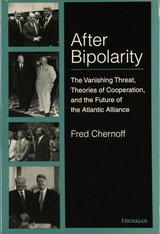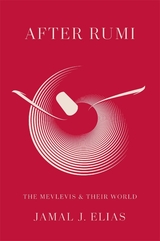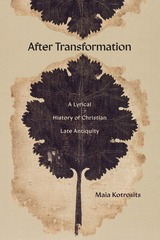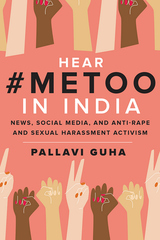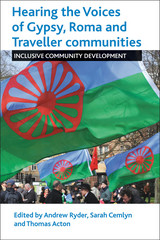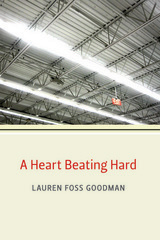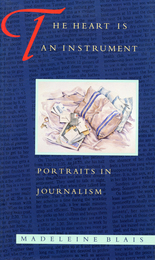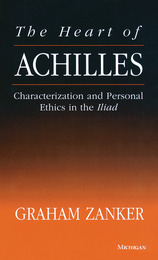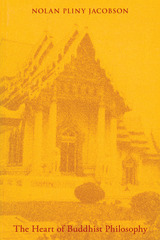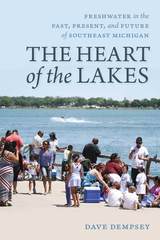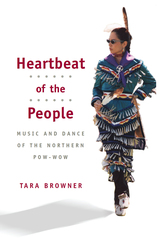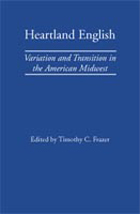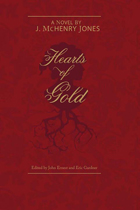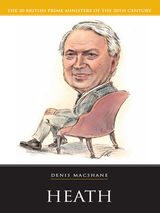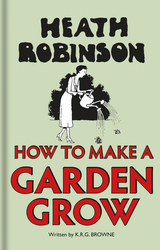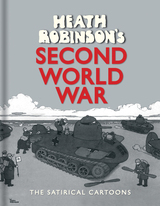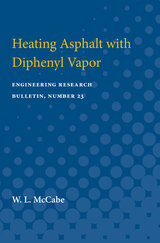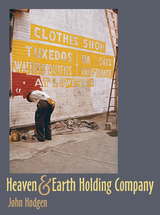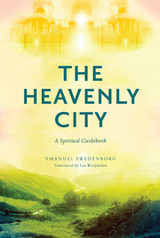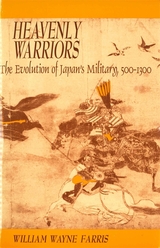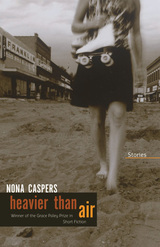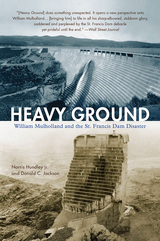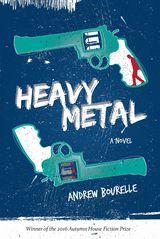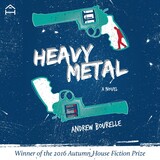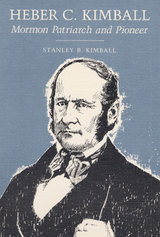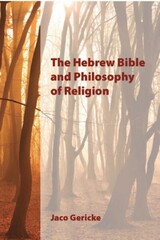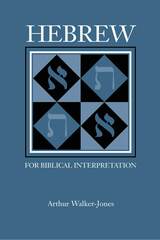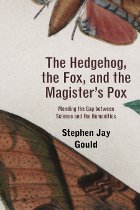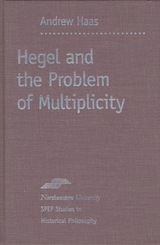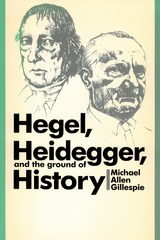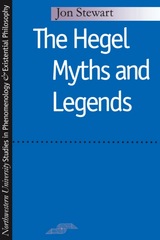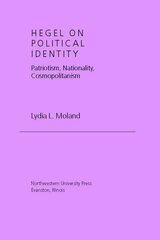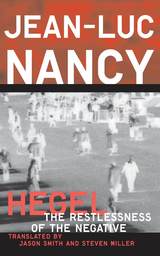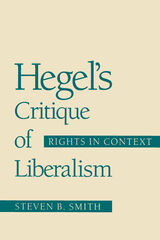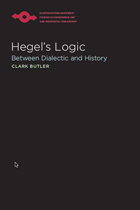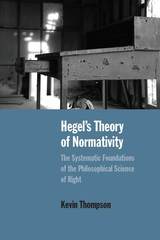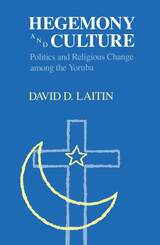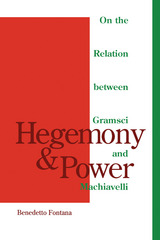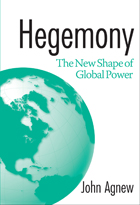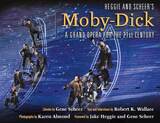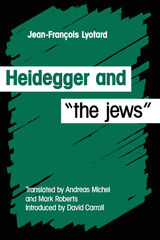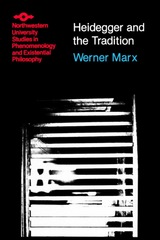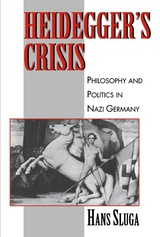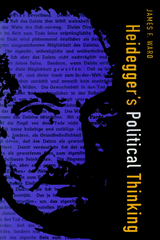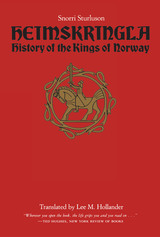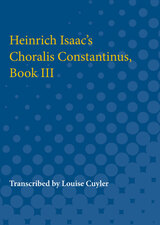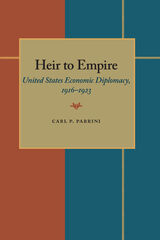 Healthy Voices, Unhealthy Silence: Advocacy and Health Policy for the Poor
Colleen M. Grogan and Michael K. Gusmano
Georgetown University Press, 2007 Public silence in policymaking can be deafening. When advocates for a disadvantaged group decline to speak up, not only are their concerns not recorded or acted upon, but also the collective strength of the unspoken argument is lessened—a situation that undermines the workings of deliberative democracy by reflecting only the concerns of more powerful interests. But why do so many advocates remain silent on key issues they care about and how does that silence contribute to narrowly defined policies? What can individuals and organizations do to amplify their privately expressed concerns for policy change? In Healthy Voices, Unhealthy Silence, Colleen M. Grogan and Michael K. Gusmano address these questions through the lens of state-level health care advocacy for the poor. They examine how representatives for the poor participate in an advisory board process by tying together existing studies; extensive interviews with key players; and an in-depth, first-hand look at the Connecticut Medicaid advisory board's deliberations during the managed care debate. Drawing on the concepts of deliberative democracy, agenda setting, and nonprofit advocacy, Grogan and Gusmano reveal the reasons behind advocates' often unexpected silence on major issues, assess how capable nonprofits are at affecting policy debates, and provide prescriptive advice for creating a participatory process that adequately addresses the health care concerns of the poor and dispossessed. Though exploring specifically state-level health care advocacy for the poor, the lessons Grogan and Gusmano offer here are transferable across issue areas and levels of government. Public policy scholars, advocacy organizations, government workers, and students of government administration will be well-served by this significant study.
 HEAR
Danilo Mandic, Caterina Nirta, Andrea Pavoni and Andreas Philippopoulos-Mihalopoulos
University of Westminster Press, 2023 Hearing is an intricate but delicate modality of sensory perception, continuously enfolded in the surroundings in which it takes place. While passive in its disposition, it is integral to the movement and fluctuations of one’s environment. Always attuned to the present and immersed in the murmur of its background, hearing remains a situated perception but fundamentally overarching and extended into the open. It is an immanent modality of being in and with the world. It is also the ultimate juridical act, a sense-making activity that adjudicates and informs the spatio-temporal acoustics of law and justice. This collection gathers multidisciplinary contributions on the relationship between law and hearing, the human vocalisations and non-human echolocations, the spatial and temporal conditions in which hearing takes place, as well as the forms of order and control that listening entails. Contributors explore, challenge and expand the structural and sensorial qualities of law, and recognise how hearing directs us to perceiving and understanding the intrinsic acoustic sphere of simultaneous relations, which challenge and break the normative distinctions that law informs and maintains. In exploring the ambiguous, indefinable and unembodied nature of hearing, as well as its objects – sound and silence – this volume approaches it as both an ontological and epistemological device to think with and about law.
Hear Him Roar: A Novel
Andrew Wingfield
Utah State University Press, 2005 A cougar attacks a jogger in the suburbs of a western city. Charlie Sayers, facing retirement as a wildlife biologist at a downsized state agency, is drawn into the search for the lion. He gets caught up in the conflict between wildlife habitat and an increasingly developed environment as, teetering between crisis and farce, he tries to piece together the puzzle of his own life.
Hear #MeToo in India: News, Social Media, and Anti-Rape and Sexual Harassment Activism
Pallavi Guha
Rutgers University Press, 2021 This book examines the role media platforms play in anti-rape and sexual harassment activism in India. Including 75 interviews with feminist activists and journalists working across India, it proposes a framework of agenda-building and establishes a theoretical framework to examine media coverage of issues in the digitally emerging Global South.
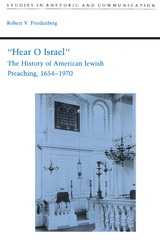 "Hear O Israel": The History of American Jewish Preaching, 1654-1970
Robert V. Friedenberg
University of Alabama Press, 1989 The only examination of the history of American Jewish preaching, from the settlement of the first Jews in the United States until 1970 Biblical passages indicate that as early as the return to Palestine from Babylon, Hebrew was no longer understood by the masses, which necessitated the use of vernacular translations to explain the Torah. Thus, the preaching tradition was well established in Judaism during the biblical period, predating Christianity, and long before the New World was explored and colonized. However, for reasons that have never been fully explained, sermons largely disappeared from European Jewish services in the late 17th and early 18th centuries.
“Hear O Israel” is the only examination of the history of American Jewish preaching, from the settlement of the first Jews in the United States until 1970. Drawing on three centuries of American Jewish sermons, this study addresses two principal questions. First, how did the American Jewish preaching tradition evolve? Second, how have national and international events been treated in Jewish sermons, and in turn, how have these events affected Jewish preaching?
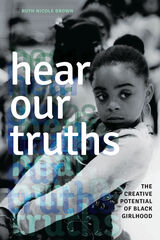 Hear Our Truths: The Creative Potential of Black Girlhood
Ruth Nicole Brown
University of Illinois Press, 2013 This volume examines how Saving Our Lives Hear Our Truths, or SOLHOT, a radical youth intervention, provides a space for the creative performance and expression of Black girlhood and how this creativity informs other realizations about Black girlhood and womanhood. Founded in 2006 and co-organized by the author, SOLHOT is an intergenerational collective organizing effort that celebrates and recognizes Black girls as producers of culture and knowledge. Girls discuss diverse expressions of Black girlhood, critique the issues that are important to them, and create art that keeps their lived experiences at its center. Drawing directly from her experiences in SOLHOT, Ruth Nicole Brown argues that when Black girls reflect on their own lives, they articulate radically unique ideas about their lived experiences. She documents the creative potential of Black girls and women who are working together to advance original theories, practices, and performances that affirm complexity, interrogate power, and produce humanizing representation of Black girls' lives. Emotionally and intellectually powerful, this book expands on the work of Black feminists and feminists of color and breaks intriguing new ground in Black feminist thought and methodology.
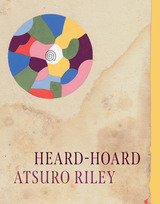 Heard-Hoard
Atsuro Riley
University of Chicago Press, 2021 Winner of the Alice Fay di Castagnola Award from the Poetry Society of America, this collection of verse from Atsuro Riley offers a vivid weavework rendering and remembering an American place and its people.
Recognized for his “wildly original” poetry and his “uncanny and unparalleled ability to blend lyric and narrative,” Atsuro Riley deepens here his uncommon mastery and tang. In Heard-Hoard, Riley has “razor-exacted” and “raw-wired” an absorbing new sequence of poems, a vivid weavework rendering an American place and its people.
At once an album of tales, a portrait gallery, and a soundscape; an “inscritched” dirt-mural and hymnbook, Heard-Hoard encompasses a chorus of voices shot through with (mostly human) histories and mysteries, their “old appetites as chronic as tides.” From the crackling story-man calling us together in the primal circle to Tammy figuring “time and time that yonder oak,” this collection is a profound evocation of lives and loss and lore.
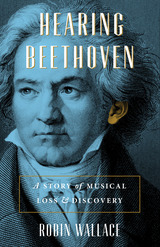 Hearing Beethoven: A Story of Musical Loss and Discovery
Robin Wallace
University of Chicago Press, 2018 Wallace demystifies the narratives of Beethoven’s approach to his hearing loss and instead explores how Beethoven did not "conquer" his deafness; he adapted to life with it.
We’re all familiar with the image of a fierce and scowling Beethoven, struggling doggedly to overcome his rapidly progressing deafness. That Beethoven continued to play and compose for more than a decade after he lost his hearing is often seen as an act of superhuman heroism. But the truth is that Beethoven’s response to his deafness was entirely human. And by demystifying what he did, we can learn a great deal about Beethoven’s music. Perhaps no one is better positioned to help us do so than Robin Wallace, who not only has dedicated his life to the music of Beethoven but also has close personal experience with deafness. One day, Wallace’s late wife, Barbara, found she couldn’t hear out of her right ear—the result of radiation administered to treat a brain tumor early in life. Three years later, she lost hearing in her left ear as well. Over the eight and a half years that remained of her life, despite receiving a cochlear implant, Barbara didn’t overcome her deafness or ever function again like a hearing person.
Wallace shows here that Beethoven didn’t do those things, either. Rather than heroically overcoming his deafness, Beethoven accomplished something even more challenging: he adapted to his hearing loss and changed the way he interacted with music, revealing important aspects of its very nature in the process. Wallace tells the story of Beethoven’s creative life, interweaving it with his and Barbara’s experience to reveal aspects that only living with deafness could open up. The resulting insights make Beethoven and his music more accessible and help us see how a disability can enhance human wholeness and flourishing.
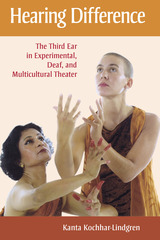 Hearing Difference: The Third Ear in Experimental, Deaf, and Multicultural Theater
Kanta Kochhar-Lindgren
Gallaudet University Press, 2006 This engrossing studyinvestigates the connections between hearing and deafness in experimental, Deaf, and multicultural theater. Author Kanta Kochhar-Lindgren focuses on how to articulate a Deaf aesthetic and how to grasp the meaning of moments of “deafness” in theater works that do not simply reinscribe a hearing bias back into one’s analysis. She employs a model using a device for cross-sensory listening across domains of sound, silence, and the moving body in performance that she calls the “third ear.”
Kochhar-Lindgren then charts a genealogy of the theater of the third ear from the mid-1800s to the 1960s in examples ranging from Denis Diderot, the Symbolists, the Dadaists, Antonin Artaud, and others. She also analyzes the work of playwright Robert Wilson, the National Theatre of the Deaf, and Asian American director Ping Chong. She shows how the model of the third ear can address not only deaf performance but also multicultural performance, by analyzing the Seattle dance troupe Ragamala’s 2001 production of Transposed Heads, which melded classical South Indian use of mudras, or hand gestures, and ASL signing.
The shift in attention limned in Hearing Difference leads to a different understanding of the body, intersubjectivity, communication, and cross-cultural relations, confirming it as a critically important contribution to contemporary Deaf studies.
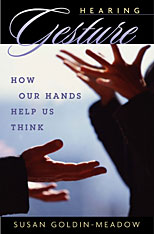 Hearing Gesture: How Our Hands Help Us Think
Susan Goldin-Meadow
Harvard University Press, 2005 Many nonverbal behaviors—smiling, blushing, shrugging—reveal our emotions. One nonverbal behavior, gesturing, exposes our thoughts. This book explores how we move our hands when we talk, and what it means when we do so.
Susan Goldin-Meadow begins with an intriguing discovery: when explaining their answer to a task, children sometimes communicate different ideas with their hand gestures than with their spoken words. Moreover, children whose gestures do not match their speech are particularly likely to benefit from instruction in that task. Not only do gestures provide insight into the unspoken thoughts of children (one of Goldin-Meadow’s central claims), but gestures reveal a child’s readiness to learn, and even suggest which teaching strategies might be most beneficial.
In addition, Goldin-Meadow characterizes gesture when it fulfills the entire function of language (as in the case of Sign Languages of the Deaf), when it is reshaped to suit different cultures (American and Chinese), and even when it occurs in children who are blind from birth.
Focusing on what we can discover about speakers—adults and children alike—by watching their hands, this book discloses the active role that gesture plays in conversation and, more fundamentally, in thinking. In general, we are unaware of gesture, which occurs as an undercurrent alongside an acknowledged verbal exchange. In this book, Susan Goldin-Meadow makes clear why we must not ignore the background conversation.
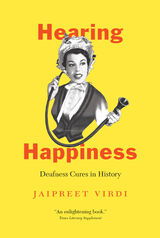 Hearing Happiness: Deafness Cures in History
Jaipreet Virdi
University of Chicago Press, 2020 Weaving together lyrical history and personal memoir, Virdi powerfully examines society’s—and her own—perception of life as a deaf person in America.
At the age of four, Jaipreet Virdi’s world went silent. A severe case of meningitis left her alive but deaf, suddenly treated differently by everyone. Her deafness downplayed by society and doctors, she struggled to “pass” as hearing for most of her life. Countless cures, treatments, and technologies led to dead ends. Never quite deaf enough for the Deaf community or quite hearing enough for the “normal” majority, Virdi was stuck in aural limbo for years. It wasn’t until her thirties, exasperated by problems with new digital hearing aids, that she began to actively assert her deafness and reexamine society’s—and her own—perception of life as a deaf person in America.
Through lyrical history and personal memoir, Hearing Happiness raises pivotal questions about deafness in American society and the endless quest for a cure. Taking us from the 1860s up to the present, Virdi combs archives and museums in order to understand the long history of curious cures: ear trumpets, violet ray apparatuses, vibrating massagers, electrotherapy machines, airplane diving, bloodletting, skull hammering, and many more. Hundreds of procedures and products have promised grand miracles but always failed to deliver a universal cure—a harmful legacy that is still present in contemporary biomedicine.
Weaving Virdi’s own experiences together with her exploration into the fascinating history of deafness cures, Hearing Happiness is a powerful story that America needs to hear.
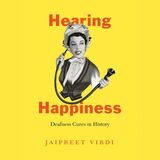 Hearing Happiness: Deafness Cures in History
Jaipreet Virdi
University of Chicago Press, 2020 This is an auto-narrated audiobook edition of this book. Weaving together lyrical history and personal memoir, Virdi powerfully examines society’s—and her own—perception of life as a deaf person in America.
At the age of four, Jaipreet Virdi’s world went silent. A severe case of meningitis left her alive but deaf, suddenly treated differently by everyone. Her deafness downplayed by society and doctors, she struggled to “pass” as hearing for most of her life. Countless cures, treatments, and technologies led to dead ends. Never quite deaf enough for the Deaf community or quite hearing enough for the “normal” majority, Virdi was stuck in aural limbo for years. It wasn’t until her thirties, exasperated by problems with new digital hearing aids, that she began to actively assert her deafness and reexamine society’s—and her own—perception of life as a deaf person in America.
Through lyrical history and personal memoir, Hearing Happiness raises pivotal questions about deafness in American society and the endless quest for a cure. Taking us from the 1860s up to the present, Virdi combs archives and museums in order to understand the long history of curious cures: ear trumpets, violet ray apparatuses, vibrating massagers, electrotherapy machines, airplane diving, bloodletting, skull hammering, and many more. Hundreds of procedures and products have promised grand miracles but always failed to deliver a universal cure—a harmful legacy that is still present in contemporary biomedicine.
Weaving Virdi’s own experiences together with her exploration into the fascinating history of deafness cures, Hearing Happiness is a powerful story that America needs to hear.
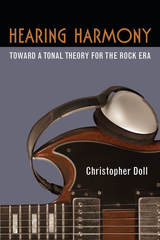 Hearing Harmony: Toward a Tonal Theory for the Rock Era
Christopher Doll
University of Michigan Press, 2017 Hearing Harmony offers a listener-based, philosophical-psychological theory of harmonic effects for Anglophone popular music since the 1950s. It begins with chords, their functions and characteristic hierarchies, then identifies the most common and salient harmonic-progression classes, or harmonic schemas. The identification of these schemas, as well as the historical contextualization of many of them, allows for systematic exploration of the repertory’s typical harmonic transformations (such as chord substitution) and harmonic ambiguities. Doll provides readers with a novel explanation of the assorted aural qualities of chords, and how certain harmonic effects result from the interaction of various melodic, rhythmic, textural, timbral, and extra-musical contexts, and how these interactions can determine whether a chordal riff is tonally centered or tonally ambiguous, whether it sounds aggressive or playful or sad, whether it seems to evoke an earlier song using a similar series of chords, whether it sounds conventional or unfamiliar.
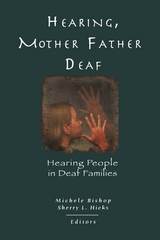 HEARING, MOTHER-FATHER DEAF: Hearing People in Deaf Families
Michele Bishop
Gallaudet University Press, 2009 The 14th Volume in the Sociolinguistics in Deaf Communities Series The newest entry in the Sociolinguistics in Deaf Communities series explores the richness and complexity of the lives of hearing people in deaf families. Along with their own contributions, volume editors Michele Bishop and Sherry L. Hicks present the work of an extraordinary cadre of deaf, hearing, and Coda (children of deaf adults) researchers: Susan Adams, Jean Andrews, Oya Ataman, Anne E. Baker, Beppie van den Bogaerde , Helsa B. Borinstein, Karen Emmorey, Tamar H. Gollan, Mara Lúcia Masutti, Susan Mather, Ronice Müller de Quadros, Jemina Napier, Paul Preston, Jennie E. Pyers, Robin Thompson, and Andrea Wilhelm. Their findings represent research in a number of countries, including Australia, Brazil, England, Germany, the Netherlands, and the United States. Hearing, Mother^Father Deaf: Hearing People in Deaf Families includes a comprehensive description of the societal influences at work in the lives of deaf people and their hearing children, which serves as a backdrop for the essays. The topics range from bimodal bilingualism in adults to cultural and linguistic behaviors of hearing children from deaf families; sign and spoken language contact phenomena; and to issues of self-expression, identity, and experience. A blend of data-based research and personal writings, the articles in this sociolinguistic study provide a thorough understanding of the varied experiences of hearing people and their deaf families throughout the world.
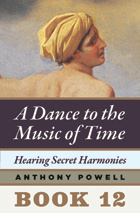 Hearing Secret Harmonies: Book 12 of A Dance to the Music of Time
Anthony Powell
University of Chicago Press, 1995 Anthony Powell’s universally acclaimed epic A Dance to the Music of Time offers a matchless panorama of twentieth-century London. Now, for the first time in decades, readers in the United States can read the books of Dance as they were originally published—as twelve individual novels—but with a twenty-first-century twist: they’re available only as e-books.
In the final volume, Hearing Secret Harmonies, Nick and his contemporaries have begun to settle into the quieter stages of later life—even as the rise of the counterculture signals that a new generation is pushing its way to the front. The darkly fascinating young Scorpio Murtlock unexpectedly draws Widmerpool into his orbit, calling to mind occult and cultish doings from earlier decades; close friends leave the stage, never to be replaced in this life; and, drawing all the long, tangled strands together, Anthony Powell sounds an unforgettable requiem for an age.
"Anthony Powell is the best living English novelist by far. His admirers are addicts, let us face it, held in thrall by a magician."--Chicago Tribune
"A book which creates a world and explores it in depth, which ponders changing relationships and values, which creates brilliantly living and diverse characters and then watches them grow and change in their milieu. . . . Powell's world is as large and as complex as Proust's."--Elizabeth Janeway, New York Times
"One of the most important works of fiction since the Second World War. . . . The novel looked, as it began, something like a comedy of manners; then, for a while, like a tragedy of manners; now like a vastly entertaining, deeply melancholy, yet somehow courageous statement about human experience."--Naomi Bliven, New Yorker “The most brilliant and penetrating novelist we have.”--Kingsley Amis
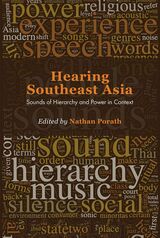 Hearing Southeast Asia: Sounds of Hierarchy and Power in Context
Edited by Nathan Porath
National University of Singapore Press, 2019 There is no moment of our waking life in which we do not experience sounds or make sounds. The human body is a sound-making organism. In densely peopled areas like many parts of Southeast Asia, then, the potential is for tumult, an infinity of different sounds competing to be heard. Pandemonium is not unheard of in Southeast Asia – not least in times of political unrest – but in everyday situations uproar is uncommon; cultural, social, political and personal factors (among others) work to calm, channel or even silence the tumult. Providing focus to this interdisciplinary volume on sound in Southeast Asia are detailed descriptions of the context of sounds and sound-making within the region’s diverse socio-cultural semiotic frames of hierarchy and power. Drawing on examples from Myanmar, Thailand, Malaysia, Indonesia and the Philippines, each author discusses some aspect of sound in relation to their ethnographic context. Sound examples are also found on a companion website. Varied approaches to understanding sound are offered but in some way each relates to hierarchy and power. All show the importance of sound for understanding the processual implementation of hierarchy (or its opposite) in the construction of the social environment and the role of sound in the efficacious engagement of power in a variety of religious and political form. This is a much-needed volume. Those scholars working in sound studies and adjoining fields focused outside the West (e.g. ethnomusicology, anthropology), have long known that the field of sound studies is firmly Eurocentric. This long-overdue study of sound in Southeast Asia not only offers non-Western perspectives; it also goes beyond examining sound in isolation, considering this instead in relation to the other senses and to sociocultural constructions. In such ways, then, the volume offers new directions of study, an exciting prospect.
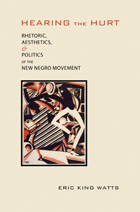 Hearing the Hurt: Rhetoric, Aesthetics, and Politics of the New Negro Movement
Eric King Watts
University of Alabama Press, 2012 Normal0falsefalsefalseMicrosoftInternetExplorer4 Hearing the Hurt is an examination of how the New Negro movement, also known as the Harlem Renaissance, provoked and sustained public discourse and deliberation about black culture and identity in the early twentieth century. Borrowing its title from a W. E. B. Du Bois essay, Hearing the Hurt explores the nature of rhetorical invention, performance, and mutation by focusing on the multifaceted issues brought forth in the New Negro movement, which Watts treats as a rhetorical struggle over what it means to be properly black and at the same time properly American. Who determines the meaning of blackness? How should African Americans fit in with American public culture? In what way should black communities and families be structured? The New Negro movement animated dynamic tension among diverse characterizations of African American civil rights, intellectual life, and well-being, and thus it provides a fascinating and complex stage on which to study how ideologies clash with each other to become accepted universally. Watts, conceptualizing the artistic culture of the time as directly affected by the New Negro public discourse, maps this rhetorical struggle onto the realm of aesthetics and discusses some key incarnations of New Negro rhetoric in select speeches, essays, and novels.
Hearing the Voices of the Gypsy, Roma and Traveller Communities: Inclusive Community Development
Edited by Andrew Ryder, Sarah Cemlyn, and Thomas Acton
Bristol University Press, 2014 The past decade has seen increased interest in, and attention to, the place of Gypsies, Roma, and Travellers (GRT) in both political and media circles, but the problems they face nonetheless remain relatively unknown. This book—much of it written by GRT activists—is the first to chart the history of and contemporary developments in GRT community activism, describing this community’s struggle for rights against a backdrop of intense discrimination throughout Europe.
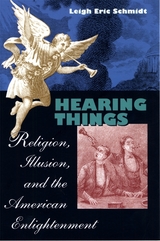 Hearing Things: Religion, Illusion, and the American Enlightenment
Leigh Eric Schmidt
Harvard University Press, 2002 “Faith cometh by hearing”—so said Saint Paul, and devoted Christians from Augustine to Luther down to the present have placed particular emphasis on spiritual arts of listening. In quiet retreats for prayer, in the noisy exercises of Protestant revivalism, in the mystical pursuit of the voices of angels, Christians have listened for a divine call. But what happened when the ear tuned to God’s voice found itself under the inspection of Enlightenment critics? This book takes us into the ensuing debate about “hearing things”—an intense, entertaining, even spectacular exchange over the auditory immediacy of popular Christian piety.The struggle was one of encyclopedic range, and Leigh Eric Schmidt conducts us through natural histories of the oracles, anatomies of the diseased ear, psychologies of the unsound mind, acoustic technologies (from speaking trumpets to talking machines), philosophical regimens for educating the senses, and rational recreations elaborated from natural magic, notably ventriloquism and speaking statues. Hearing Things enters this labyrinth—all the new disciplines and pleasures of the modern ear—to explore the fate of Christian listening during the Enlightenment and its aftermath.In Schmidt’s analysis the reimagining of hearing was instrumental in constituting religion itself as an object of study and suspicion. The mystic’s ear was hardly lost, but it was now marked deeply with imposture and illusion.
 Hearing Things: The Work of Sound in Literature
Angela Leighton
Harvard University Press, 2018 Hearing Things is a meditation on sound’s work in literature. Drawing on critical works and the commentaries of many poets and novelists who have paid close attention to the role of the ear in writing and reading, Angela Leighton offers a reconsideration of literature itself as an exercise in hearing.
An established critic and poet, Leighton explains how we listen to the printed word, while showing how writers use the expressivity of sound on the silent page. Although her focus is largely on poets—Alfred Tennyson, W. B. Yeats, Robert Frost, Walter de la Mare, Wallace Stevens, Elizabeth Bishop, Jorie Graham, and Alice Oswald—Leighton’s scope includes novels, letters, and philosophical writings as well. Her argument is grounded in the specificity of the text under discussion, but one important message emerges from the whole: literature by its very nature commands listening, and listening is a form of understanding that has often been overlooked. Hearing Things offers a renewed call for the kind of criticism that, avoiding the programmatic or purely ideological, remains alert to the work of sound in every literary text.
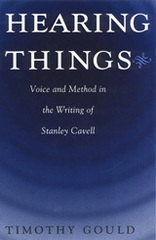 Hearing Things: Voice and Method in the Writing of Stanley Cavell
Timothy Gould
University of Chicago Press, 1998 What does philosophy have to do with the human voice? Has contemporary philosophy banished the "voice" from the field of legitimate investigation? Timothy Gould examines these questions through the philosopher most responsible for formulating them, Stanley Cavell. Hearing Things is the first work to treat systematically the relation between Cavell's pervasive authorial voice and his equally powerful, though less discernible, impulse to produce a set of usable philosophical methods.
Gould argues that a tension between voice and method unites Cavell's broad and often perplexing range of interests. From Wittgenstein to Thoreau, from Shakespeare to the movies, and from opera to Freud, Gould reveals the connection between the voice within Cavell's writing and the voices Cavell appeals to through the methods of ordinary language philosophy. Within Cavell's extraordinary productivity lies a new sense of philosophical method based on elements of the act of reading. Hearing Things is both an important study of Cavell's work and a major contribution to the construction of American philosophy.
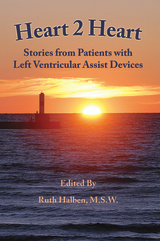 Heart 2 Heart: Stories from Patients with Left Ventricular Assist Devices
Edited by Ruth Halben, M.S.W.
Michigan Publishing, 2016 Heart 2 Heart brings together stories of patients who suffered from a serious heart condition and therefore received an LVAD (Left Ventricular Assist Device). The patients describe the various
hardships they and their families endured as well as how many found hope after receiving an LVAD.
Each chapter is written by a different patient or a patient’s family member, creating a unique
collection of stories that reveals the realities of living life with an implanted heart pump. Heart 2 Heart is composed of seventeen patient voices, where fourteen males and three females of different ethnicities and ages share with the reader their tale--from their initial diagnosis, to their eventual LVAD procedure performed at the University of Michigan Hospital.
The editor, Ruth Halben, M.S.W., is a clinical social worker in the University of Michigan Health System who works with LVAD patients and their families. Ruth is one of the first LVAD social workers in the nation, and she draws both from her expertise and her heartfelt relationships with her patients to bring together this wonderful resource for current and future LVAD patients.
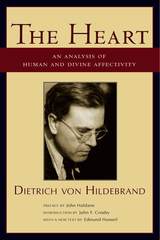 The Heart: An Analysis of Human and Divine Affectation
Dietrich von Hildebrand
St. Augustine's Press, 2007 This new edition of The Heart (out of print for nearly 30 years) is the flagship volume in a series of Dietrich von Hildebrand’s works to be published by St. Augustine’s Press in collaboration with the Dietrich von Hildebrand Legacy Project. Founded in 2004, the Legacy Project exists in the first place to translate the many German writings of von Hildebrand into English. While many revere von Hildebrand as a religious author, few realize that he was a philosopher of great stature and importance. Those who knew von Hildebrand as philosopher held him in the highest esteem. Louis Bouyer, for example, once said that “von Hildebrand was the most important Catholic philosopher in Europe between the two world wars.” Joseph Cardinal Ratzinger expressed even greater esteem when he said: “I am personally convinced that, when, at some time in the future, the intellectual history of the Catholic Church in the twentieth century is written, the name of Dietrich von Hildebrand will be most prominent among the figures of our time.” The Heart is an accessible yet important philosophical contribution to the understanding of the human person. In this work von Hildebrand is concerned with rehabilitating the affective life of the human person. He thinks that for too long philosophers have held it in suspicion and thought of it as embedded in the body and hence as being much inferior to intellect and will. In reality, he argues, the heart, the center of affectivity, has many different levels, including an eminently personal level; at this level affectivity is just as important a form of personal life as intellect and will. Von Hildebrand develops the idea that properly personal affectivity, far than tending away from an objective relation to being, is in fact one major way in which we transcend ourselves and give being its due. Von Hildebrand also developed the important idea that the heart “in many respects is more the real self of the person than his intellect or will.” At the same time, the author shows full realism about the possible deformities of affective life; he offers rich analyses of what he calls affective atrophy and affective hypertrophy. The second half of The Heart offers a remarkable analysis of the affectivity of the God-Man.
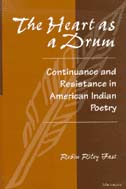 The Heart as a Drum: Continuance and Resistance in American Indian Poetry
Robin Riley Fast
University of Michigan Press, 2000 The Heart as a Drum celebrates poetry by a range of contemporary Native American writers, illuminating the poets' shared commitments and distinctive approaches to political resistance and cultural survival. The poetry reflects an awareness of the divisions and conflicts inherited from colonization and a commitment to traditional beliefs about the relatedness of all beings. This double perception engenders poetry that emphasizes resistance and continuance and poetry that makes creative and unique use of language. The book elucidates these aspects of the work through cultural and historical readings of poetry written by both urban- and reservation-identified Indians from varied geographic and tribal origins.
The book's focus is on the major themes in contemporary Native American literature: community and audience, the meanings of place and history, spiritual experiences, the nature of language, and the roles and varieties of storytelling. The poets whose works are discussed include Sherman Alexie, Joy Harjo, Maurice Kenny, Simon J. Ortiz, Wendy Rose, Elizabeth Woody, and Ray Young Bear.
The first critical book dedicated to contemporary Native American poetry, The Heart as a Drum will be useful to students, teachers, and critics of American Indian cultures and literatures, and to all readers of contemporary American poetry.
A Heart Beating Hard
Lauren Foss Goodman
University of Michigan Press, 2014 A Heart Beating Hard is about looking long and deep into the invisible life of a person we too often pass by. It is the story of Marjorie, who works in the Store and does her best to go on with the days; of Margie, growing up in Apartment #2 with the sounds of Ma and Gram and Him all around; and of Marge, who should never have been, who should have been helped. In A Heart Beating Hard, we see how Marjorie manages to go on with the days, how even in the bright lights and grabbing hands of the outside world, inside, Marjorie knows how to take care of her self and her secrets. It is a story about the passed-along People, about how we are the same and how we are different, about how we become who we are and how we protect our most private places from the cold glare of all that we cannot control.
Heart Failure
Ivy Goodman
University of Iowa Press, 1983
These 15 stories meet existence head-on through detached narration that has the quality of a feverish dream. The chilling psyche tells a story where there seems to be no story. Even the victim remains dispassionate and lets the reader infer causes and measure threats. In unvarnished, linear prose stripped of sentimentality, Goodman casts the shape of inarticulate emotion. Yet at the heart of her stories about the foolish, the indifferent, and the vicious, between painful connections and violations, there is regenerating laughter or an inexpressible trace of something once whole and beautiful. Beneath Goodman's every absence, there is a compelling, disturbing presence.
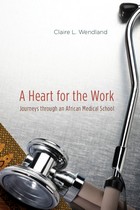 A Heart for the Work: Journeys through an African Medical School
Claire L. Wendland
University of Chicago Press, 2010 Burnout is common among doctors in the West, so one might assume that a medical career in Malawi, one of the poorest countries in the world, would place far greater strain on the idealism that drives many doctors. But, as A Heart for the Work makes clear, Malawian medical students learn to confront poverty creatively, experiencing fatigue and frustration but also joy and commitment on their way to becoming physicians. The first ethnography of medical training in the global South, Claire L. Wendland’s book is a moving and perceptive look at medicine in a world where the transnational movement of people and ideas creates both devastation and possibility.
Wendland, a physician anthropologist, conducted extensive interviews and worked in wards, clinics, and operating theaters alongside the student doctors whose stories she relates. From the relative calm of Malawi’s College of Medicine to the turbulence of training at hospitals with gravely ill patients and dramatically inadequate supplies, staff, and technology, Wendland’s work reveals the way these young doctors engage the contradictions of their circumstances, shedding new light on debates about the effects of medical training, the impact of traditional healing, and the purposes of medicine.
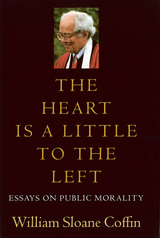 The Heart Is a Little to the Left: Essays on Public Morality
William Sloane Coffin
Dartmouth College Press, 2011 William Sloane Coffin offers here a powerful antidote to the politics of the religious right with a clarion call to passive intellectuals and dispirited liberals to reenter the fray with an unabashedly Christian view of social justice. Refusing to cede the battlefield of morality to conservatives, he argues that “compassion demands confrontation,” as he considers such topics as homophobia, diversity, nuclear weapons, and civil discourse. Coffin became famous while chaplain at Yale in the 1960s for his active opposition to the Vietnam War. Jailed as a civil rights “Freedom Rider,” indicted by the government in the Benjamin Spock conspiracy trial, he attained popular immortality as Reverend Sloan in the Doonesbury comic strip. The seven pieces collected here are peppered with memorable aphorisms and pithy, political one-liners meant to turn bitterness to anger and anger to action.
The Heart Is an Instrument: Portraits in Journalism
Madeleine Blais
University of Massachusetts Press, 1992 From the foreword by Geneva Overholser.
What is it about really fine writers, how they delight, intrigue, compel us?
Style, you say. But style is not something you begin with. Rather, it's what you end up with, a result of far more fundamental traits. Traits such as an ear and an eye and a heart, traits that Madeliene Blais has honed superbly well.
This is a book well named: The Heart Is an Instrument: Portraits in Journalism. The heart is surely first among Blais's gifts. Whether she is writing about the famous--playwright tennessee Williams, novelist Mary Gordon--or about the least elevated among us--a teenage prostitute infected with the AIDS virus, a homeless schizophrenic--she brings to her subjects an incomparable empathy.
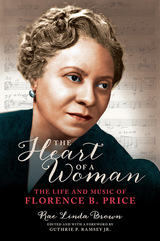 The Heart of a Woman: The Life and Music of Florence B. Price
Rae Linda Brown. Edited and with a Foreword by Guthrie P. Ramsey Jr.
University of Illinois Press, 2020 Book Prize Winner of the International Alliance for Women in Music of the 2022 Pauline Alderman Awards for Outstanding Scholarship on Women in Music The Heart of a Woman offers the first-ever biography of Florence B. Price, a composer whose career spanned both the Harlem and Chicago Renaissances, and the first African American woman to gain national recognition for her works. Price's twenty-five years in Chicago formed the core of a working life that saw her create three hundred works in diverse genres, including symphonies and orchestral suites, art songs, vocal and choral music, and arrangements of spirituals. Through interviews and a wealth of material from public and private archives, Rae Linda Brown illuminates Price's major works while exploring the considerable depth of her achievement. Brown also traces the life of the extremely private individual from her childhood in Little Rock through her time at the New England Conservatory, her extensive teaching, and her struggles with racism, poverty, and professional jealousies. In addition, Brown provides musicians and scholars with dozens of musical examples.
The Heart of Achilles: Characterization and Personal Ethics in the Iliad
Graham Zanker
University of Michigan Press, 1996 In The Heart of Achilles, Graham Zanker addresses the task of reconstructing the ethical thought-world in which the characters of the Iliad live and move. It is only against this background, Zanker argues, that we can convincingly place the ethical status of the heroes and their actions. This in turn helps us to form a comprehensive view of the Iliad'scharacterization of its people, especially that of Achilles, by examining all his responses to the question of allegiance, the value of heroic prowess, and of life itself.
"[Zanker] investigates altruistic behavior in the epic with professional sophistication but in a way that makes his investigation available to a wide audience from undergraduates to advanced scholars. . . . [A] very useful interpretative study." --Choice
Graham Zanker is Senior Lecturer in Classics, University of Canterbury, New Zealand.
 The Heart of America: Our Landscape, Our Future
Tim Palmer
Island Press, 1999 From the cliffs of Big Sur to the dunes at Cape Hatteras, from the bogs of the Boundary Waters to the deserts of the Rio Grande, the landscape of America has shaped us into the people we are. Not only is it central to ecological health and essential to the economy, it has helped form our culture and serves as a basis of national pride. The heart of America lies in the rock and soil, the mountains and the plains that surround us.In this illuminating portrait of America at the threshold of the new millennium, author Tim Palmer explores and assesses the landscape of the United States -- both timeless wonders of natural beauty and lost places scarred by human exploitation. He takes the reader on an informative and inspirational tour of our most vital landscapes, including mountains, forests, grasslands, deserts, rivers, lakes, wetlands, and seashores. He introduces us to the basic geography and ecological value of each landscape, describes historical patterns of land use, considers the most serious threats, and discusses what is being done to protect the landscape for future generations. Throughout, he instills a deeper understanding of the importance of the land, a sense of outrage at the damage that has been done, and a feeling of hope that those working to correct past abuses will succeed.Weaving together geographical, historical, and ecological information and insights, Palmer draws on thirty years of professional experience as a writer, photographer, conservationist, planner, landscape architect, and veteran traveler to present a fresh look at the past, present, and future of our land.Resounding in its account of these landscapes, compelling in the force of its information and the hope of its timely message, The Heart of America offers a fascinating measure of the land around us and a unique look at the place we call home.
The Heart of Buddhist Philosophy
Nolan Pliny Jacobson
Southern Illinois University Press, 1988 In arriving at the heart of Buddhist philosophy, Nolan Pliny Jacobson attempts to eliminate some of the confusion in the West (and perhaps in the East as well) concerning the Buddhist view of what is concrete and ultimately real in the world. Jacobson presents Nāgārjuna, the Plato of the Buddhist tradition, as the major exemplar of the Buddhist expression of life. In his comparison of Buddhism and Western theology, Jacobson demonstrates that some efforts in Western religious thought approach the Buddhist empirical stance.
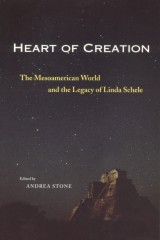 Heart of Creation: The Mesoamerican World and the Legacy of Linda Schele
Edited by Andrea Stone
University of Alabama Press, 2002 This accessible, state-of-the-art review of Mayan hieroglyphics and cosmology also serves as a tribute to one of the field's most noted pioneers. The core of this book focuses on the current study of Mayan hieroglyphics as inspired by the recently deceased Mayanist Linda Schele. As author or coauthor of more than 200 books or articles on the Maya, Schele served as the chief disseminator of knowledge to the general public about this ancient Mesoamerican culture, similar to the way in which Margaret Mead introduced anthropology and the people of Borneo to the English-speaking world.
Twenty-five contributors offer scholarly writings on subjects ranging from the ritual function of public space at the Olmec site and the gardens of the Great Goddess at Teotihuacan to the understanding of Jupiter in Maya astronomy and the meaning of the water throne of Quirigua Zoomorph P. The workshops on Maya history and writing that Schele conducted in Guatemala and Mexico for the highland people, modern descendants of the Mayan civilization, are thoroughly addressed as is the phenomenon termed "Maya mania"—the explosive growth of interest in Maya epigraphy, iconography, astronomy, and cosmology that Schele stimulated. An appendix provides a bibliography of Schele's publications and a collection of Scheleana, written memories of "the Rabbit Woman" by some of her colleagues and students.
Of interest to professionals as well as generalists, this collection will stand as a marker of the state of Mayan studies at the turn of the 21st century and as a tribute to the remarkable personality who guided a large part of that archaeological research for more than two decades.
 Heart of Europe: A History of the Holy Roman Empire
Peter H. Wilson
Harvard University Press, 2020 An Economist and Sunday Times Best Book of the Year
“Deserves to be hailed as a magnum opus.”
—Tom Holland, The Telegraph
“Ambitious…seeks to rehabilitate the Holy Roman Empire’s reputation by re-examining its place within the larger sweep of European history…Succeeds splendidly in rescuing the empire from its critics.”
—Wall Street Journal
Massive, ancient, and powerful, the Holy Roman Empire formed the heart of Europe from its founding by Charlemagne to its destruction by Napoleon a millennium later. An engine for inventions and ideas, with no fixed capital and no common language or culture, it derived its legitimacy from the ideal of a unified Christian civilization—though this did not prevent emperors from clashing with the pope for supremacy.
In this strikingly ambitious book, Peter H. Wilson explains how the Holy Roman Empire worked, why it was so important, and how it changed over the course of its existence. The result is a tour de force that raises countless questions about the nature of political and military power and the legacy of its offspring, from Nazi Germany to the European Union.
“Engrossing…Wilson is to be congratulated on writing the only English-language work that deals with the empire from start to finish…A book that is relevant to our own times.”
—Brendan Simms, The Times
“The culmination of a lifetime of research and thought…an astonishing scholarly achievement.”
—The Spectator
“Remarkable…Wilson has set himself a staggering task, but it is one at which he succeeds heroically.”
—Times Literary Supplement
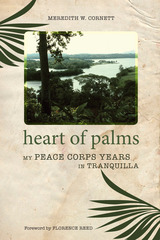 Heart of Palms: My Peace Corps Years in Tranquilla
Meredith W. Cornett
University of Alabama Press, 2014 Heart of Palms is a clear-eyed memoir of Peace Corps service in the rural Panamanian village of Tranquilla through the eyes of a young American woman trained as a community forester.
In the storied fifty-year history of the US Peace Corps, Heart of Palms is the first Peace Corps memoir set in Panama, the slender isthmus that connects two continents and two oceans. In her memoir, Meredith Cornett transports readers to the remote village of Tranquilla, where dugout canoes are the mainstay of daily transportation, life and nature are permeated by witchcraft, and a restful night’s sleep may be disturbed by a raiding phalanx of army ants.
Cornett is sent to help counter the rapid deforestation that is destroying the ecosystem and livelihoods of the Panama Canal watershed region. Her first chapters chronicle her arrival and struggles not only with the social issues of language, loneliness, and insecurity, but also with the tragicomic basics of mastering open-fire cookery and intrusions by insects and poisonous snakes. As she grows to understand the region and its people, her keen eye discerns the overwhelming scope of her task. Unable to plant trees faster than they are lost, she writes with moving clarity about her sense of powerlessness.
Combating deforestation leads Cornett into an equally fierce battle against her own feelings of fear and isolation. Her journey to Panama becomes a parallel journey into herself. In this way, Heart of Palms is much more than a record of her Peace Corps service; it is also a moving environmental coming-of-age story and nuanced meditation on one village’s relationship to nature. When she returns home two years later, Cornett brings with her both skills and experience and a remarkable, newfound sense of confidence and mission.
Writing with rueful, self-deprecating humor, Cornett lets us ride along with her on a wave of naïve optimism, a wave that breaks not only on fear and intimidation, but also on tedium and isolation. Heart of Palms offers a bracing alternative to the romantic idealism common to Peace Corps memoirs and will be valued as a welcome addition to writing about the Peace Corps and environmental service.
 The Heart of Reality: Essays on Beauty, Love, and Ethics by V.S. Soloviev
Vladimir Sergeyevich Soloviev
University of Notre Dame Press, 2003 “Vladimir Wozniuk’s translation and edition of Vladimir Soloviev’s work is a major contribution in Russian thought and theology. What is particularly impressive about this collection is the thoughtfulness with which it is put together.” —Gary Saul Morson, Northwestern University
Vladimir S. Soloviev (1853–1900), moral philosopher, social and literary critic, theologian, and poet, is considered one of Russia’s greatest philosophers. But Soloviev is relatively unknown in the West, despite his close association with Fyodor Dostoevsky, who modeled one of his most famous literary characters, Alyosha Karamazov, on Soloviev. In The Heart of Reality, Vladimir Wozniuk offers a lucid translation, careful annotations, and a substantive introduction that make many of Soloviev’s writings accessible for the first time to an English-speaking audience.
Soloviev worked tirelessly in the name of the mystical body of the Universal Church. The vast bulk of his writings can be construed as promoting, in one way or another, the cause of ecumenism. His essays also display the influence of Platonic and German Idealism and strands of Thomistic thinking. Wozniuk demonstrates the consistency of Soloviev’s biblically-based thought on the subjects of aesthetics, love, and ethics, while at the same time clarifying Soloviev’s concept of vseedinstvo (the unity of spiritual and material), especially as applied to literature. Containing many previously untranslated essays, The Heart of Reality situates Soloviev more clearly in the mainstream of Western religious philosophy and Christian thought.
 Heart of Science: A Philosophy of Scientific Inquiry
Jacob Stegenga
University of Chicago Press, 2026 A novel epistemology of science contends that good science need not attain its aims, but it must justify its claims.
In Heart of Science, philosopher Jacob Stegenga breaks with the most dominant epistemologies of science to argue that in judging scientific activity, we should focus on its justification, not the achievement of truth or knowledge. Yet, Stegenga argues, the aim of science goes far beyond justification and is, instead, a special kind of truth—common knowledge, a broadly shared and mutually justified scientific finding.
Drawing on both historical examples and recent events like the COVID-19 pandemic, Stegenga outlines his approach before delving into its implications for scientific evaluation, testimony, values, progress, and credit, as well as the nature of science during times of crisis. Truth, he shows, may not be easily identified in the short term. However, an evaluation of scientific justification, grounded in shared standards, is possible. This framework helps us appraise—and appreciate—historical theories that ultimately weren’t accurate and offers fresh insights about appropriate science communication and public trust in scientific research. Justification and scientific rigor are not just means to an end, Stegenga writes, but the very heart of good science.
Ambitious, authoritative, and accessible, Heart of Science offers a new vision for the philosophy of science.
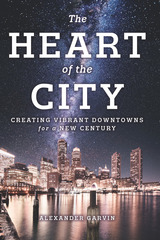 The Heart of the City: Creating Vibrant Downtowns for a New Century
Alexander Garvin
Island Press, 2019 Downtowns are more than economic engines: they are repositories of knowledge and culture and generators of new ideas, technology, and ventures. They are the heart of the city that drives its future. If we are to have healthy downtowns, we need to understand what downtown is all about; how and why some American downtowns never stopped thriving (such as San Jose and Houston), some have been in decline for half a century (including Detroit and St. Louis), and still others are resurging after temporary decline (many, including Lower Manhattan and Los Angeles). The downtowns that are prospering are those that more easily adapt to changing needs and lifestyles.
In The Heart of the City, distinguished urban planner Alexander Garvin shares lessons on how to plan for a mix of housing, businesses, and attractions; enhance the public realm; improve mobility; and successfully manage downtown services. Garvin opens the book with diagnoses of downtowns across the United States, including the people, businesses, institutions, and public agencies implementing changes. In a review of prescriptions and treatments for any downtown, Garvin shares brief accounts—of both successes and failures—of what individuals with very different objectives have done to change their downtowns. The final chapters look at what is possible for downtowns in the future, closing with suggested national, state, and local legislation to create standard downtown business improvement districts to better manage downtowns.
This book will help public officials, civic organizations, downtown business property owners, and people who care about cities learn from successful recent actions in downtowns across the country, and expand opportunities facing their downtown. Garvin provides recommendations for continuing actions to help any downtown thrive, ensuring a prosperous and thrilling future for the 21st-century American city.
The Heart of the Lakes: Freshwater in the Past, Present and Future of Southeast Michigan
Dave Dempsey
Michigan State University Press, 2019 The water corridor that defines southeast Michigan sits at the heart of the world’s largest freshwater ecosystem, the Great Lakes. Over forty-three trillion gallons of water a year flow through the Detroit River, providing a natural conduit for everything from fish migration to the movement of cargo-bearing one thousand–foot freighters, and a defining sense of place. But in both government policies and individual practices, the freshwater at the heart of the lakes was long neglected and sometimes abused. Today southeast Michigan enjoys an opportunity to learn from that history and put freshwater at the center of a prosperous and sustainable future. Joining this journey downriver in place and time, from Port Huron to Monroe, from the 1600s to the present, provides insight and hope for the region’s water-based renaissance.
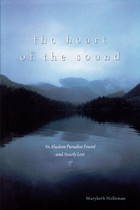 Heart Of The Sound
Marybeth Holleman
University of Utah Press, 2004
"You can’t step in the same river twice—although I once believed I could. I believed that the pieces of my life I had chosen, those I held close to my heart, would, once chosen and held, remain the same."—from the book
How does one recover from disaster? That question is at the heart of Marybeth Holleman’s lyrical, elegiac response to the repercussions of the Exxon Valdez oil spill that devastated Alaska’s Prince William Sound in 1989. Twining together the destruction of an ecosystem and the disintegration of her marriage, Holleman explores the resiliency of nature—both wild and human—and the ways in which that resiliency is tested. Like the oil that remains pooled beneath rocks years after the tanker spill, the emotional wounds of the past lie just below the surface. Recovery and restoration from the pain wrought by human hands does not come easily.
If much of nature writing is about the heart’s search for an unspoiled, perfect landscape, The Heart of the Sound is about what happens when the return-to-paradise fantasy is over and paradise is lost. In language rich with passion and hard-won insight, Holleman creates a captivating picture of a woman who found her Eden in the sweeping fjords of Alaska only to lose it to ecological tragedy. But somewhere within that loss, she finds herself.
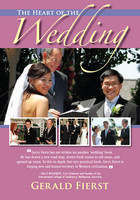 The Heart of the Wedding
Gerald Fierst
Parkhurst Brothers, Inc., 2011 TODAY'S COUPLES AND THE CELEBRATIONS THEY CHOOSE COME IN MANY VARIETIES
“The Heart of Wedding reconnects the marriage ritual to our twenty-first century lives. Gerald Fierst, celebrant, poet, and storyteller, fills chapter after chapter with examples of ceremonies showing that weddings need not be Victorian relics, but can be filled with a sense of fun and adventure, as well as common sense. Acknowledging our multi-cultural nation where people of every race, Faith, and heritage meet and marry, this book celebrates the new America, respecting tradition while finding a contemporary voice to say ‘I do.’ Gerry brings to this book the same care, precision and artistry I have seen him bring to all of his projects. By connecting life’s passages with a larger vision of humanity – past, present and future – Gerry shows us a way to celebrate our families and ourselves.” --Susan O’Halloran, Director, RaceBridges, Chicago Illinois
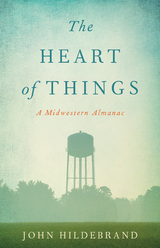 The Heart of Things: A Midwestern Almanac
John Hildebrand
Wisconsin Historical Society Press, 2014 “I’ve never believed that living in one place means being one thing all the time, condemned like Minnie Pearl to wear the same hat for every performance. Life is more complicated than that.”
In this remarkable book of days, John Hildebrand charts the overlapping rings—home, town, countryside—of life in the Midwest. Like E. B. White, Hildebrand locates the humor and drama in ordinary life: church suppers, Friday night football, outdoor weddings, garden compost, family reunions, roadside memorials, camouflage clothing. In these wry, sharply observed essays, the Midwest isn’t The Land Time Forgot but a more complicated (and vastly more interesting) place where the good life awaits once we figure exactly out what it means. From his home range in northwestern Wisconsin, Hildebrand attempts to do just that by boiling down a calendar year to its rich marrow of weather, animals, family, home—in other words, all the things that matter.
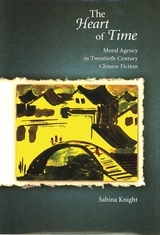 The Heart of Time: Moral Agency in Twentieth-Century Chinese Fiction
Sabina Knight
Harvard University Press, 2006 By examining how narrative strategies reinforce or contest deterministic paradigms, this work describes modern Chinese fiction's unique contribution to ethical and literary debates over the possibility for meaningful moral action. How does Chinese fiction express the desire for freedom as well as fears of attendant responsibilities and abuses? How does it depict struggles for and against freedom? How do the texts allow for or deny the possibility of freedom and agency? By analyzing discourses of agency and fatalism and the ethical import of narrative structures, the author explores how representations of determinism and moral responsibility changed over the twentieth century. She links these changes to representations of time and to enduring commitments to human-heartedness and social justice.
Although Chinese fiction may contain some of the most disconsolate pages in the twentieth century's long literature of disenchantment, it also bespeaks, Knight argues, a passion for freedom and moral responsibility. Responding to ongoing conflicts between the claims of modernity and the resources of past traditions, these stories and novels are often dominated by challenges to human agency. Yet read with sensitivity to traditional Chinese conceptions of moral experience, their testimony to both the promises of freedom and the failure of such promises opens new perspectives on moral agency.
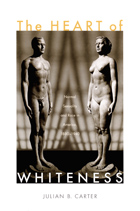 The Heart of Whiteness: Normal Sexuality and Race in America, 1880–1940
Julian B. Carter
Duke University Press, 2007 In this groundbreaking study, Julian Carter demonstrates that between 1880 and 1940, cultural discourses of whiteness and heterosexuality fused to form a new concept of the “normal” American. Gilded Age elites defined white civilization as the triumphant achievement of exceptional people hewing to a relational ethic of strict self-discipline for the common good. During the early twentieth century, that racial and relational ideal was reconceived in more inclusive terms as “normality,” something toward which everyone should strive. The appearance of inclusiveness helped make “normality” appear consistent with the self-image of a racially diverse republic; nonetheless, “normality” was gauged largely in terms of adherence to erotic and emotional conventions that gained cultural significance through their association with arguments for the legitimacy of white political and social dominance. At the same time, the affectionate, reproductive heterosexuality of “normal” married couples became increasingly central to legitimate membership in the nation. Carter builds her intricate argument from detailed readings of an array of popular texts, focusing on how sex education for children and marital advice for adults provided significant venues for the dissemination of the new ideal of normality. She concludes that because its overt concerns were love, marriage, and babies, normality discourse facilitated white evasiveness about racial inequality. The ostensible focus of “normality” on matters of sexuality provided a superficially race-neutral conceptual structure that whites could and did use to evade engagement with the unequal relations of power that continue to shape American life today.
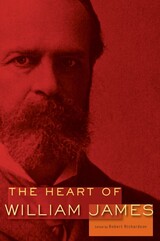 The Heart of William James
William James
Harvard University Press, 2010 On the one hundredth anniversary of the death of William James, Robert Richardson, author of the magisterial William James: In the Maelstrom of American Modernism, assembles a wide-ranging selection of essays and writings that reveal the evolution of James’s thought over time, especially as it was continually being shaped by the converging influences of psychology, philosophy, and religion throughout his life.
Proceeding chronologically, the volume begins with “What Is an Emotion,” James’s early, notable, and still controversial argument that many of our emotions follow from (rather than cause) physical or physiological reactions. The book concludes with “The Moral Equivalent of War,” one of the greatest anti-war pieces ever written, perhaps even more relevant now than when it was first published. In between, in essays on “The Dilemma of Determinism,” “The Hidden Self,” “Habit,” and “The Will”; in chapters from The Principles of Psychology and The Varieties of Religious Experience; and in such pieces as “On a Certain Blindness in Human Beings,” “What Makes a Life Significant,” and “Philosophical Conceptions and Practical Results,” we witness the evolution of James’s philosophical thinking, his pragmatism, and his radical empiricism. Throughout, Richardson’s deeply informed introductions place James’s work in its proper biographical, historical, and philosophical context.
In essay after essay, James calls us to live a fuller, richer, better life, to seek out and use our best energies and sympathies. As every day is the day of creation and judgment, so every age was once the new age—and as this book makes abundantly clear, William James’s writings are still the gateway to many a new world.
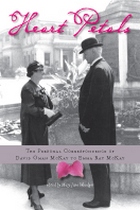 Heart Petals: The Personal Correspondence of David Oman McKay to Emma Ray McKay
Mary Jane Woodger
University of Utah Press, 2005 12 June 1906
Love feeds and grows on love, and while it grows, it increases the capacity of the soul for loving. So our love was perfect when I kissed you at the altar; it is perfect to-day; it will be perfect when the century strikes ‘half-past;’ it will be perfect eternally. - from the book
David O. McKay served as president of the Church of Jesus Christ of Latter-day Saints from 1951 until his death in 1970. A devout and devoted leader, he was no less devoted to his beloved wife, Emma Ray McKay. In this collection of letters from the David Oman McKay Papers at the J. Willard Marriott Library of the University of Utah, McKay’s courtship of Emma Ray Riggs and the early days of the couple’s marriage are revealed in his own words.
The McKays were married in the Salt Lake Latter-day Saints Temple on January 2, 1901, the first “sealing” of the twentieth century. They became known as the church’s happiest couple. One of the things that cultivated that happiness were the poems and expressions of endearment McKay presented his wife, offerings he referred to as 'heart petals'. The letters collected here are replete with touching examples of those gifts of love.
Throughout this correspondence, McKay reveals his innermost feelings, joys, heartaches, and determinations, imparting a wealth of insights into his personal, caring nature and documenting his growth from a young, inexperienced missionary to a mature leader within the LDS Church. But most striking of all in these letters is the blossoming of a true, devoted love that lasted over seventy years.
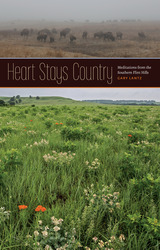 Heart Stays Country: Meditations from the Southern Flint Hills
Gary Lantz
University of Iowa Press, 2017 Writer and photographer Gary Lantz has always felt most at home in what the Osage used to call the “heart stays” country—the southern edge of the Flint Hills tallgrass prairie in Oklahoma’s Osage County. It’s a place of grassy mounds with lots of rocks underfoot and clusters of crooked little oaks providing shade. It started young, his long-lasting love affair with a landscape that unnerves the uninitiated a little, mostly because it just seems so empty, and it has persisted through his entire life.
As proud grasslanders know, the prairie is biologically fulfilling, unique, and increasingly rare: biologists from the National Park Service and the Nature Conservancy agree that a healthy prairie remains one of the most ecologically diverse and dynamic ecosystems on this planet—as well as one of the rarest left on earth. This landscape that once inspired rapturous exclamations from travelers headed west on horseback now mostly exists in fragments exiled from each other by cropland, cities, and interstate highways.
Historically, tallgrass prairie stretched from Canada to Texas, from central Kansas to Indiana. Now the last major expanse of tallgrass occurs in the Flint Hills, a verdant landscape extending in a north-south strip across eastern Kansas and into northern Oklahoma’s Osage County. In these essays, Gary Lantz brings the beautiful diversity of the prairie home to all of us.
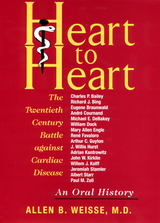 Heart to Heart: The Twentieth Century Battle against Cardiac Disease--An Oral History
Weisse, Allen B
Rutgers University Press, 2002 The twentieth century was a truly incredible time of medical research productivity and progress in the treatment of heart disease. Methods of diagnosis, treatment, and prevention that were unknown or scarcely imagined at the start of the century have now been incorporated into daily medical practice. In Heart to Heart, Dr. Allen B. Weisse presents the first collection of in-depth conversations with some of the world's most renowned cardiologists and surgeons. Weisse's interviews bring a special vitality to the doctors' recollections of the people and events that influenced them, their motivations, their problems, their interactions with their contemporaries, and their hopes and beliefs for the future. Since not every doctor who has made important contributions to the treatment and prevention of heart disease could be interviewed for this volume, Weisse includes a biographical section listing other prominent cardiologists and surgeons as well as a list of recommended reading. This comprehensive history will be a resource for any student of cardiology or general medicine.
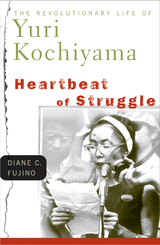 Heartbeat of Struggle: The Revolutionary Life of Yuri Kochiyama
Diane C. Fujino
University of Minnesota Press, 2005 On February 12, 1965, in the Audubon Ballroom, Yuri Kochiyama cradled Malcolm X in her arms as he died, but her role as a public servant and activist began much earlier than this pivotal public moment. Heartbeat of Struggle is the first biography of this courageous woman, the most prominent Asian American activist to emerge during the 1960s. Based on extensive archival research and interviews with Kochiyama's family, friends, and the subject herself, Diane C. Fujino traces Kochiyama's life from an "all-American" childhood to her achievements as a tireless defender of - and fighter for - human rights. Raised by a Japanese immigrant family in California during the 1920s and 1930s, Kochiyama was active in sports, school, and church. She was both unquestioningly patriotic and largely unconscious of race and racism in the United States. After Pearl Harbor, however, Kochiyama's family was among the thousands of Japanese Americans forcibly removed to internment camps for the duration of the war, a traumatic experience that opened her eyes to the existence of social injustice. After the war, Kochiyama moved to New York. It was in the context of the vibrant Black movement in Harlem in the 1960s that she began her activist career. There, she met Malcolm X, who inspired her radical political development and the ensuing four decades of incessant work for Black liberation, Asian American equality, Puerto Rican independence, and political prisoner defense. Kochiyama is widely respected for her work in forging unity among diverse communities, especially between Asian and African Americans. Fujino, a scholar and activist, offers an in-depth examination of Kochiyama's political awakening, rich life, and impressive achievements with particular attention to how her public role so often defied gender, racial, and cultural norms. Heartbeat of Struggle is a source of inspiration and guidance for anyone committed to social change.
Heartbeat of the People: Music and Dance of the Northern Pow-wow
Tara Browner
University of Illinois Press, 2002 The intertribal pow-wow is the most widespread venue for traditional Indian music and dance in North America. Heartbeat of the People is an insider's journey into the dances and music, the traditions and regalia, and the functions and significance of these vital cultural events. Tara Browner focuses on the Northern pow-wow of the northern Great Plains and Great Lakes to investigate the underlying tribal and regional frameworks that reinforce personal tribal affiliations. Interviews with dancers and her own participation in pow-wow events and community provide fascinating on-the-ground accounts and provide detail to a rare ethnomusicological analysis of Northern music and dance.
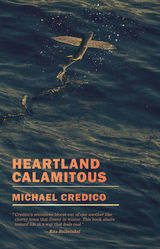 Heartland Calamitous
Michael Credico
Autumn House Press, 2020 Emerging from deep in America’s hinterland, Michael Credico’s flash fiction portrays an absurdist, exaggerated, and bizarre vision of the Midwest known as the heartland. The stories are clipped views into a land filled with slippery confusion and chaos, mythical creatures, zombies, comic violence, shapeshifters, and startling quantities of fish. The characters of Heartland Calamitous are trying to sort out where, who, and what they are and how to fit into their communities and families. Environmental destruction, aging, ailing parents, apathy, and depression weigh on the residents of the heartland, and they can’t help but fall under the delusion that if they could just be somewhere or someone or something else, everything would be better. This is a leftover land, dazed and dizzy, where bodies melt into Ziplock bags and making do becomes a lifestyle.
The stories of Heartland Calamitous, often only two or three pages long, reveal a dismal state in which longing slips into passive acceptance, speaking to the particular Midwestern feeling of being stuck. They slip from humor to grief to the grotesque, forming a picture of an all-to-close dystopian quagmire. With this collection, Credico spins a new American fable, a modern-day mythology of the absurd and deformed born of a non-place between destinations.
 Heartland Calamitous
Michael Credico
Autumn House Press, 2020 Emerging from deep in America’s hinterland, Michael Credico’s flash fiction portrays an absurdist, exaggerated, and bizarre vision of the Midwest known as the heartland. The stories are clipped views into a land filled with slippery confusion and chaos, mythical creatures, zombies, comic violence, shapeshifters, and startling quantities of fish. The characters of Heartland Calamitous are trying to sort out where, who, and what they are and how to fit into their communities and families. Environmental destruction, aging, ailing parents, apathy, and depression weigh on the residents of the heartland, and they can’t help but fall under the delusion that if they could just be somewhere or someone or something else, everything would be better. This is a leftover land, dazed and dizzy, where bodies melt into Ziplock bags and making do becomes a lifestyle.
The stories of Heartland Calamitous, often only two or three pages long, reveal a dismal state in which longing slips into passive acceptance, speaking to the particular Midwestern feeling of being stuck. They slip from humor to grief to the grotesque, forming a picture of an all-to-close dystopian quagmire. With this collection, Credico spins a new American fable, a modern-day mythology of the absurd and deformed born of a non-place between destinations.
Heartland English: Variation and Transition in the American Midwest
Timothy C. Frazer
University of Alabama Press, 1993 A Publication in the Centennial Series of the American Dialect Society in celebration of the beginning of its second century of research into language variation in America. “Heartland” English is the first book-length scholarly treatment of English spoken in the Midwest, or the northern interior of the continental United States. Frazer and his contributors focus on the myth of a uniform, “Midwestern” variety of American English. They show the complex region in which forces-old and new- have led to variety in the spoken language. Contributors include: Craig M. Carver, Thomas Donahue, Rachel Faries, Ticmothy Frazer, Timothy Habick, Robin Herndobler, Donald Lance, Donald Larmouth, Michael Miller, Thomas Murray, Denis Preston, Marjorie Remsing, Timothy Riney, Andre Sledd, Bruce Southard, and Erick Thomas.
 Heartland Excursions: Ethnomusicological Reflections on Schools of Music
Bruno Nettl
University of Illinois Press, 1995 In Heartland Excursions, a legendary ethnomusicologist takes the reader along for a delightful, wide-ranging tour of his workplace. Bruno Nettl provides an insightful, sometimes tongue-in-cheek, always pithy ethnography of midwestern university schools of music from a different perspective in each of four chapters, alternating among three distinct voices: the longtime professor, the "native informant," and the outside observer, an "ethnomusicologist from Mars." If you've ever been to a concert or been connected to a university with a school of music, you ll discover yourself--or someone you know--in these pages. "In the music building you can't tell the quick from the dead without a program."--Chapter 1, "In the Service of the Masters" "The great ability of a violin student whom I observed was established when his dean was persuaded to accompany him."--Chapter 2, "Society of Musicians" "Some teachers of music history would accuse students who listen to Elvis Presley not only of taking time away from hearing Brahms, but also of polluting themselves."--Chapter 3, "A Place for All Musics?" At commencement, the graduates "were perhaps not aware that they had just participated in an event in which the principal values of the Western musical world . . . had been taken out of storage bins for annual exercise."--Chapter 4, "Forays into the Repertory"
 Heartland Heroes: Remembering World War II
Ken Hatfield
University of Missouri Press, 2003
"War is about patriotism, about sacrifice, about conquering fear. And perhaps most of all, it's about the guy in the foxhole next to you, taking care of each other, protecting each other, loving each other; a camaraderie so intense only men who have been in combat can ever know what it's like. Yes, most of all, war is about love."
Heartland Heroes is a collection of remarkable stories from ordinary men and women who lived through extraordinary times. They resided in places like Lee’s Summit, Independence, and Kansas City, yet their experiences were very much like those of World War II veterans everywhere. Some were marines, nurses, or fighter pilots, others were simply civilians who lived through the war under the martial law imposed on the Hawaiian Islands after the attack on Pearl Harbor.
In Heartland Heroes, Ken Hatfield gathers the stories of more than eighty men and women, whom he began interviewing in 1984 while reporting for a small weekly newspaper in Liberty, Missouri. Hatfield’s first subject was a marine named Bob Barackman, the uncle of one of Hatfield’s coworkers. That interview, which lasted for several hours, had a profound effect on Hatfield. He began to realize that as a journalist he had a unique opportunity to preserve that small piece of history each veteran carries with him.
Hatfield spent the next seventeen years interviewing nearly one hundred World War II veterans and other individuals, but it was not until August 2001 that he decided to compile the stories into a book. The interviewees, most of whom lived in the Kansas City area at the time of the interviews, included Jim Daniels, a Grumman Wildcat pilot, who while trying to land at Pearl Harbor on the evening after the Japanese attack, survived a blizzard of friendly fire, which claimed the lives of three of his friends and fellow pilots; Charles McGee, a pilot with 143 combat missions to his credit, who fought the Germans in the air and racism on the ground as one of the Tuskegee Airmen; and Dee Nicholson, who was just six years old when the Japanese bombed Pearl Harbor and her home on Hawaii. She and her father recall what life was like for them and others, including Japanese Americans, after that fateful day.
Following the war, these courageous men and women returned to the lives they had left and tried to adjust as best they could. Hatfield collects their personal memories—the memories of the heroes who helped to defend their nation in the last global conflict this country has seen. They loaned Hatfield their medals, commendations, and regimental and divisional histories to help him document and piece together their stories. Virtually all of them downplayed their honors, insisting they had done nothing special. Through their stories, Heartland Heroes effectively captures this fading period of time for future generations.
 Heartland Serial Killers: Belle Gunness, Johann Hoch, and Murder for Profit in Gaslight Era Chicago
Richard C. Lindberg
Northern Illinois University Press, 2011
Lindberg, an accomplished local historian and true crime writer, presents a fascinating story of two contemporaneous serial killers, both weaving marriage and murder in and around Chicago during the 1890s and 1900s. Johann Hoch was a debonair bigamist and wife killer who boasted of having perfected a “scientific technique” to romance and seduction. Belle Gunness was a nesting “Black Widow” whose sprawling farm in Northwest Indiana was a fatal lure for lonely bachelors seeking the comforts of middle-age security by answering matrimonial advertisements placed by Gunness.
Notorious in his own day, Hoch had faded into the dark background of Chicago crime history. But, in Heartland Serial Killers, Lindberg brings back vividly the horrors of one of Chicago’s first celebrity criminals and uncovers new evidence of a close connection between Hoch and H.H. Holmes, the “Devil in the White City.”
Unlike Hoch, Belle Gunness, likely the most prolific and infamous female serial killer of the 20th century, has remained fascinating to the public. Here, Lindberg presents the most comprehensive and compelling study of the Gunness case to date, including new information regarding ongoing DNA testing of remains found at the site of Gunness’s farm in LaPorte, Indiana, which may serve to resolve once and for all the mystery surrounding Gunness’s death.
Told in alternating chapters and rapidly paced, this book is true crime at its best—gripping, pulpy, and full of sharp historical tidbits. True crime fans, history buffs, and those interested in local lore will delight in this chilling tale of two ruthless killers.
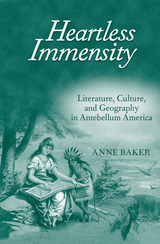 Heartless Immensity: Literature, Culture, and Geography in Antebellum America
Anne Baker
University of Michigan Press, 2010 As the size of the United States more than doubled during the first half of the nineteenth century, a powerful current of anxiety ran alongside the well-documented optimism about national expansion. Heartless Immensity tells the story of how Americans made sense of their country’s constantly fluctuating borders and its annexation of vast new territories. Anne Baker looks at a variety of sources, including letters, speeches, newspaper editorials, schoolbooks, as well as visual and literary works of art. These cultural artifacts suggest that the country’s anxiety was fueled primarily by two concerns: fears about the size of the nation as a threat to democracy, and about the incorporation of nonwhite, non-Protestant regions. These fears had a consistent and influential presence until after the Civil War, functioning as vital catalysts for the explosion of literary creativity known as the “American Renaissance,” including the work of Melville, Thoreau, and Fuller, among others.
Building on extensive archival research as well as insights from cultural geographers and theorists of nationhood, Heartless Immensity demonstrates that national expansion had a far more complicated, multifaceted impact on antebellum American culture than has previously been recognized. Baker shows that Americans developed a variety of linguistic strategies for imagining the form of the United States and its position in relation to other geopolitical entities. Comparisons
to European empires, biblical allusions, body politic metaphors, and metaphors derived from science all reflected—and often attempted to assuage—fears that the nation was becoming either monstrously large or else misshapen in ways that threatened cherished beliefs and national self-images.
Heartless Immensity argues that, in order to understand the nation’s shift from republic to empire and to understand American culture in a global context, it is first necessary to pay close attention to the processes by which the physical entity known as the United States came into being. This impressively thorough study will make a valuable contribution to the fields of American studies and literary studies.
Anne Baker is Assistant Professor of English at North Carolina State University.
 Hearts and Minds: Bodies, Poetry, and Resistance in the Vietnam Era
Michael Bibby
Rutgers University Press, 1996 The early 1960s to the mid-1970s was one of the most turbulent periods in American history. The U.S. military was engaged in its longest, costliest overseas conflict, while the home front was torn apart by riots, protests, and social activism. In the midst of these upheavals, an underground and countercultural press emerged, giving activists an extraordinary forum for a range of imaginative expressions. Poetry held a prominent place in this alternative media. The poem was widely viewed by activists as an inherently anti-establishment form of free expression, and poets were often in the vanguards of political activism.
Hearts and Minds is the first book-length study of the poems of the Black Liberation, Women's Liberation, and GI Resistance movements during the Vietnam era. Drawing on recent cultural and literary theories, Bibby investigates the significance of images, tropes, and symbols of human bodies in activist poetry. Many key political slogans of the period––"black is beautiful," "off our backs"––foreground the body. Bibby demonstrates that figurations of bodies marked important sites of social and political struggle.
Although poetry played such an important role in Vietnam-era activism, literary criticism has largely ignored most of this literature. Bibby recuperates the cultural-historical importance of Vietnam-era activist poetry, highlighting both its relevant contexts and revealing how it engaged political and social struggles that continue to motivate contemporary history. Arguing for the need to read cultural history through these "underground" texts, Hearts and Minds offers new grounds for understanding the recent history of American poetry and the role poetry has played as a medium of imaginative political expression.
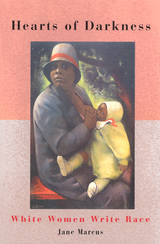 Hearts of Darkness: White Women Write Race
Marcus, Jane
Rutgers University Press, 2004 In this book, one of modernism's most insightful critics, Jane Marcus, examines the writings of novelists such as Virginia Woolf, Nancy Cunard, Mulk Raj Anand, and Djuna Barnes-artists whose work coincided with the end of empire and the rise of fascism before the Second World War. All these writers delved into the "dark hearts" of imperialism and totalitarianism, thus tackling some of the most complex cultural issues of the day. Marcus investigates previously unrecognized ways in which social and political tensions are embodied by their works.
The centerpiece of the book is Marcus's dialogue with one of her best-known essays, "Britannia Rules The Waves." In that piece, she argues that The Waves makes a strong anti-imperialist statement. Although many already support that argument, she now goes further in order to question the moral value of such a buried critique on Woolf's part. In "A Very Fine Negress" she analyzes the painful subject of Virginia Woolf's racism in A Room of One's Own. Other chapters traverse the connected issues of modernism, race, and imperialism. In two of them, we follow Nancy Cunard through the making of the Negro anthology and her appearance in a popular novel of the freewheeling Jazz Age. Elsewhere, Marcus delivers a complex analysis of A Passage to India, in a reading that interrogates E. M. Forster's displacement of his fear of white Englishwomen struggling for the vote.
Marcus, as always, brings considerable gifts as both researcher and writer to this collection of new and reprinted essays, a combination resulting in a powerful interpretation of many of modernism's most cherished figures.
HEARTS OF GOLD
a novel by J. McHenry Jones, edited by John Ernest and Eric Gardner
West Virginia University Press, 2010
J. McHenry Jones’s Hearts of Gold is a gripping tale of post-Civil War battles against racism and systemic injustice. Originally published in 1896, this novel reveals an African American community of individuals dedicated to education, journalism, fraternal organizations, and tireless work serving the needs of those abandoned by the political process of the white world. Jones challenges conventional wisdom by addressing a range of subjects—from interracial relationships to forced labor in coal mines—that virtually no other novelist of the time was willing to approach. With the addition of an introduction and appendix, this new edition reveals the difficult foundations upon which African Americans built a platform to address injustice; generate opportunities; and play a prominent role in American social, economic, and political life.
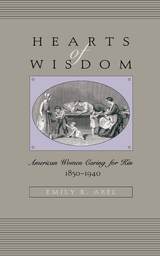 Hearts of Wisdom: American Women Caring for Kin, 1850-1940
Emily K. Abel
Harvard University Press, 2002 The image of the female caregiver holding a midnight vigil at the bedside of a sick relative is so firmly rooted in our collective imagination we might assume that such caregiving would have attracted the scrutiny of numerous historians. As Emily Abel demonstrates in this groundbreaking study of caregiving in America across class and ethnic divides and over the course of ninety years, this has hardly been the case.
While caring for sick and disabled family members was commonplace for women in nineteenth- and early-twentieth-century America, that caregiving, the caregivers' experience of it, and the medical profession's reaction to it took diverse and sometimes unexpected forms. A complex series of historical changes, Abel shows, has profoundly altered the content and cultural meaning of care. Hearts of Wisdom is an immersion into that "world of care." Drawing on antebellum slave narratives, white farm women's diaries, and public health records, Abel puts together a multifaceted picture of what caregiving meant to American women--and what it cost them--from the pre-Civil War years to the brink of America's entry into the Second World War. She shows that caregiving offered women an arena in which experience could be parlayed into expertise, while at the same time the revolution in bacteriology and the transformation of the formal health care system were weakening women's claim to that expertise.
 Heartsblood: Hunting, Spirituality, and Wildness in America
David Petersen; Foreword by Ted Williams
Island Press, 2000 In this age of boneless chicken breasts and drive-thru Happy Meals, why do some humans still hunt? Is it a visceral, tooth-and-claw hunger for meat, tied in a primitive savage knot with an innate lust for violence and domination? Or might it be a hunger of an entirely different sort? And if so, what? In Heartsblood, writer and veteran outdoorsman David Petersen offers a thoroughly informed, unsettlingly honest, intensely personal exploration of this increasingly contentious issue. He draws clear distinctions between true hunting and contemporary hunter behavior, praising what's right about the former and damning what's wrong with the latter, as he seeks to render the terms "hunter" and "antihunter" palpable -- to put faces on these much-used but little-understood generalizations.Petersen looks at the evolutionary roots and philosophical underpinnings of hunting, and offers a compelling portrait of an "animistic archetype" -- a paradigm for the true hunter/conservationist that is in sharp contrast with today's technology-laden, gadget-loving sport hunter. He considers the social and ecological implications of trophy hunting and deconstructs the "Bambi syndrome" -- the oversentimentalization of young animals by most Americans, including many hunters. He also explores gender issues in hunting, and highlights important qualities that are largely missing in today's mentoring of tomorrow's hunters.Throughout, Petersen emphasizes the fundamental spiritual aspects of hunting, and offers numerous finely drawn and compelling first-person hunting narratives that explain and provide substance to his arguments. Along with that personal experience, he draws on philosophy, evolutionary theory, biology, and empirical studies to create an engaging and literate work that offers a unique look at hunting, hunters, and, in the words of the author, "life's basic truths."
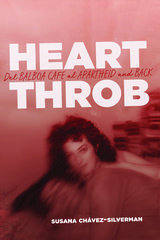 Heartthrob: Del Balboa Cafe al Apartheid and Back
Susana Chávez-Silverman
University of Wisconsin Press, 2019 On a wintry Thursday night in San Francisco, Susana Chávez-Silverman catches her first glimpse of a handsome stranger through the window as he passes the infamous Balboa Cafe. She knows immediately he is the man of her dreams. His eyes meet hers, he turns and enters the bar . . .
Their attraction was intense, but the social and political climate of South Africa, still in the grip of apartheid, threatened to tear them apart. Describing the vicissitudes of the Latina migratory experience, Chávez-Silverman struggles to overcome the hostility of a place that is so unwelcoming to nonwhite persons and outsiders.
Heartthrob, a love story for the ages, implores us to consider how things could have been. In these romantic crónicas based on detailed diary entries and confessional letters to family and friends, Chávez-Silverman weaves together English and Spanish to lay bare the raw intensity and true fragility of love. Anyone who has wondered about the-one-that-got-away or sought out the true meaning of happily-ever-after will be enraptured by this intimate exploration of love, loss, and regret.
 Heartwall
Richard Jackson
University of Massachusetts Press, 2000 Taking its title from a poem by Paul Celan that is both elegiac and hopeful, but also playing off the notion of the "hart" walls erected to corral deer for a medieval hunt that was more a slaughter, and evoking the very physiology of the heart itself, this collection of poems explores the possibilities for love and feeling in a world besieged by tragedies in Bosnia, Kosovo, Rwanda, and elsewhere. At times lyrical, at times satirical, and written in a surrealistic style that ranges from the formal to the aphoristic, Heartwall explores the complex and sometimes confounding relationship between the personal and the political, between our individual perceptions and the larger vision they suggest. These are poems that ask forgiveness, offer praise, and carry enough irony never to seek redemption. They are, at heart, love poems. According to the late William Matthews, Jackson's poems tell us "what it means to belong in history. . . . The wonderful amplitude . . . testifies that we can live with such chaos and not lie about it or ignore it: indeed the poems are a demonstration of how we might do such a thing."
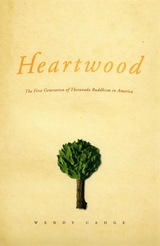 Heartwood: The First Generation of Theravada Buddhism in America
Wendy Cadge
University of Chicago Press, 2004 Theravada is one of the three main branches of Buddhism. In Asia it is practiced widely in Thailand, Laos, Burma, Sri Lanka, and Cambodia. This fascinating ethnography opens a window onto two communities of Theravada Buddhists in contemporary America: one outside Philadelphia that is composed largely of Thai immigrants and one outside Boston that consists mainly of white converts.
Wendy Cadge first provides a historical overview of Theravada Buddhism and considers its specific origins here in the United States. She then brings her findings to bear on issues of personal identity, immigration, cultural assimilation, and the nature of religion in everyday life. Her work is the first systematic comparison of the ways in which immigrant and convert Buddhists understand, practice, and adapt the Buddhist tradition in America. The men and women whom Cadge meets and observes speak directly to us in this work, both in their personal testimonials and as they meditate, pray, and practice Buddhism.
Creative and insightful, Heartwood will be of enormous value to sociologists of religion and anyone wishing to understand the rise of Buddhism in the Western world.
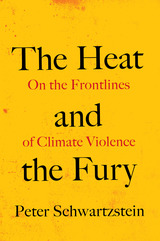 The Heat and the Fury: On the Frontlines of Climate Violence
Peter Schwartzstein
Island Press, 2024 “Schwartzstein’s vignettes of each troubled region are vibrantly narrated as he encounters indignant locals and has run-ins with menacing state security officials attempting to block his investigations into what they invariably consider a ‘sensitive’ subject. It’s a riveting journey through a world running hot.” -- Publishers Weekly, starred
As a journalist on the climate security beat, Peter Schwartzstein has been chased by kidnappers, badly beaten, detained by police, and told, in no uncertain terms, that he was no longer welcome in certain countries. Yet these personal brushes with violence are simply a hint of the conflict simmering in our warming world.
Schwartzstein has visited ravaged Iraqi towns where ISIS used drought as a recruiting tool and weapon of terror. In Bangladesh, he has interviewed farmers-turned-pirates who can no longer make a living off the land and instead make it off bloody ransoms. Security forces have blocked him from a dam being constructed along the Nile that has brought Egypt and Ethiopia to the brink of war. And he has heard the fear in the voices of women from around the world who say their husbands’ tempers flare when the temperature ticks up.
In The Heat and the Fury, he not only puts readers on the frontlines of climate violence but gives us the context to make sense of seemingly senseless acts. As Schwartzstein deftly shows, climate change is often the spark that ignites long smoldering fires, the extra shove that pushes individuals, communities, and even nations over the line between frustration and lethal fury. What, he asks, can ratchet down the aggression? Can cooperation on climate actually become a salve to heal old wounds?
There are no easy answers on a planet that is fast becoming a powder keg. But Schwartzstein’s incisive analysis of geopolitics, unparalleled on-the-ground reporting, and keen sense of human nature offer the clearest picture to date of the violence that threatens us all.
Heat Management in Integrated Circuits: On-chip and system-level monitoring and cooling
Seda Ogrenci-Memik
The Institution of Engineering and Technology, 2016 As integrated circuits get smaller and more complex, power densities are increasing, leading to more heat generation. Dealing with this heat is fast becoming the most important design bottleneck of current and future integrated circuits, where power envelopes are defined by the ability of the system to dissipate the generated heat. Thermal effects are forcing chip designers to apply conservative design margins, creating sub-optimal results. At a larger scale, cooling is the second most costly item in the electricity bills of well-designed high-performance computing and data centers, costing 30-50% of the total. Thermal monitoring and management in integrated circuits is therefore becoming increasingly important.
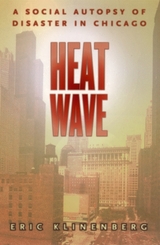 Heat Wave: A Social Autopsy of Disaster in Chicago
Eric Klinenberg
University of Chicago Press, 2002 On Thursday, July 13, 1995, Chicagoans awoke to a blistering day in which the temperature would reach 106 degrees. The heat index, which measures how the temperature actually feels on the body, would hit 126 degrees by the time the day was over. Meteorologists had been warning residents about a two-day heat wave, but these temperatures did not end that soon. When the heat wave broke a week later, city streets had buckled; the records for electrical use were shattered; and power grids had failed, leaving residents without electricity for up to two days. And by July 20, over seven hundred people had perished-more than twice the number that died in the Chicago Fire of 1871, twenty times the number of those struck by Hurricane Andrew in 1992—in the great Chicago heat wave, one of the deadliest in American history.
Heat waves in the United States kill more people during a typical year than all other natural disasters combined. Until now, no one could explain either the overwhelming number or the heartbreaking manner of the deaths resulting from the 1995 Chicago heat wave. Meteorologists and medical scientists have been unable to account for the scale of the trauma, and political officials have puzzled over the sources of the city's vulnerability. In Heat Wave, Eric Klinenberg takes us inside the anatomy of the metropolis to conduct what he calls a "social autopsy," examining the social, political, and institutional organs of the city that made this urban disaster so much worse than it ought to have been.
Starting with the question of why so many people died at home alone, Klinenberg investigates why some neighborhoods experienced greater mortality than others, how the city government responded to the crisis, and how journalists, scientists, and public officials reported on and explained these events. Through a combination of years of fieldwork, extensive interviews, and archival research, Klinenberg uncovers how a number of surprising and unsettling forms of social breakdown—including the literal and social isolation of seniors, the institutional abandonment of poor neighborhoods, and the retrenchment of public assistance programs—contributed to the high fatality rates. The human catastrophe, he argues, cannot simply be blamed on the failures of any particular individuals or organizations. For when hundreds of people die behind locked doors and sealed windows, out of contact with friends, family, community groups, and public agencies, everyone is implicated in their demise.
As Klinenberg demonstrates in this incisive and gripping account of the contemporary urban condition, the widening cracks in the social foundations of American cities that the 1995 Chicago heat wave made visible have by no means subsided as the temperatures returned to normal. The forces that affected Chicago so disastrously remain in play in America's cities, and we ignore them at our peril.
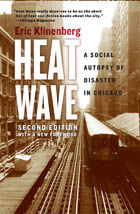 Heat Wave: A Social Autopsy of Disaster in Chicago
Eric Klinenberg
University of Chicago Press, 2015 "A classic. I can't recommend it enough."--Chris Hayes
On Thursday, July 13, 1995, Chicagoans awoke to a blistering day in which the temperature would reach 106 degrees. The heat index, which measures how the temperature actually feels on the body, would hit 126 degrees by the time the day was over. Meteorologists had been warning residents about a two-day heat wave, but these temperatures did not end that soon. When the heat wave broke a week later, city streets had buckled; the records for electrical use were shattered; and power grids had failed, leaving residents without electricity for up to two days. And by July 20, over seven hundred people had perished-more than twice the number that died in the Chicago Fire of 1871, twenty times the number of those struck by Hurricane Andrew in 1992—in the great Chicago heat wave, one of the deadliest in American history.
Heat waves in the United States kill more people during a typical year than all other natural disasters combined. Until now, no one could explain either the overwhelming number or the heartbreaking manner of the deaths resulting from the 1995 Chicago heat wave. Meteorologists and medical scientists have been unable to account for the scale of the trauma, and political officials have puzzled over the sources of the city's vulnerability. In Heat Wave, Eric Klinenberg takes us inside the anatomy of the metropolis to conduct what he calls a "social autopsy," examining the social, political, and institutional organs of the city that made this urban disaster so much worse than it ought to have been.
Starting with the question of why so many people died at home alone, Klinenberg investigates why some neighborhoods experienced greater mortality than others, how the city government responded to the crisis, and how journalists, scientists, and public officials reported on and explained these events. Through a combination of years of fieldwork, extensive interviews, and archival research, Klinenberg uncovers how a number of surprising and unsettling forms of social breakdown—including the literal and social isolation of seniors, the institutional abandonment of poor neighborhoods, and the retrenchment of public assistance programs—contributed to the high fatality rates. The human catastrophe, he argues, cannot simply be blamed on the failures of any particular individuals or organizations. For when hundreds of people die behind locked doors and sealed windows, out of contact with friends, family, community groups, and public agencies, everyone is implicated in their demise.
As Klinenberg demonstrates in this incisive and gripping account of the contemporary urban condition, the widening cracks in the social foundations of American cities that the 1995 Chicago heat wave made visible have by no means subsided as the temperatures returned to normal. The forces that affected Chicago so disastrously remain in play in America's cities, and we ignore them at our peril.
For the Second Edition Klinenberg has added a new Preface showing how climate change has made extreme weather events in urban centers a major challenge for cities and nations across our planet, one that will require commitment to climate-proofing changes to infrastructure rather than just relief responses.
Heath
Denis MacShane
Haus Publishing, 2006 Former British Prime Minister Edward Heath is best known for taking Britain into the European Union.
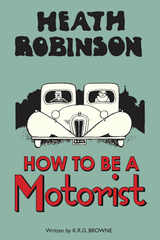 Heath Robinson: How to Be a Motorist
W. Heath Robinson
Bodleian Library Publishing, 2015 Heath Robinson (1872–1944) is Britain’s “Gadget King”—master of the art of creating madcap contraptions that made use of ropes, weights, and pulleys to perform relatively simple tasks, from wart removal to peeling potatoes. Although he trained as a painter and also worked as a book illustrator, Robinson developed his forte with drawings of gadgets that parodied the absurdities of modern life. A true cartoonist, Robinson had a way of getting at the heart of the matter while simultaneously satirizing it mercilessly. He became a household name in Britain, and his popularity continues today with plans to build a museum in London to share with a new generation the story of his life and work.
For the car enthusiast, How to Be a Motorist offers a compendium of Robinson’s wonderfully inventive car-based contraptions, with innovations like a handy “zip-opening bonnet,” a rear wheel to turn the car around with one movement, and a fork attachment to help rural motorists to avoid the occasional chicken on the roadway. The days of unsolicited driving advice could be over with the realization of Robinson’s “duo car for the incompatible,” and the book also includes a parody of a production line demonstrating how cars are made.
A side-splittingly funny collection from the man whose “absurd, beautiful drawings” H. G. Wells claimed “give me a peculiar pleasure of the mind like nothing else in the world,” this book make a perfect gift for anyone looking to have a laugh at our complicated and increasingly mechanical modern life.
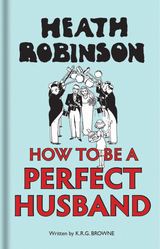 Heath Robinson: How to be a Perfect Husband
W. Heath Robinson & K.R.G. Browne
Bodleian Library Publishing, 2017 Heath Robinson (1872–1944) is Britain’s “Gadget King”—master of the art of creating madcap contraptions that made use of ropes, weights, and pulleys to perform relatively simple tasks. Although he trained as a painter and also worked as a book illustrator, Robinson developed his forte with drawings of gadgets that parodied the absurdities of modern life. A true cartoonist, Robinson had a way of getting at the heart of the matter while simultaneously satirizing it mercilessly. He became a household name in Britain, and his popularity continues today.
The cartoons in Heath Robinson: How to be a Perfect Husband provide sage advice for how to succeed in almost all aspects of married life—and, of course, it often features a complicated Robinsonian gadget. The perfect husband, for example, will take advantage of two simple attachments to the garden roller to tend the lawn and entertain the baby simultaneously. Likewise, he can peel onions with no fear of tears using a mirror and construct a cost-effective vacuum cleaner using items found around the house. Most importantly, he will devise a device to help him climb the stairs silently after a late night out with the boys.
A gently satirical collection, this book make a perfect gift for anyone looking to have a laugh at our complicated and increasingly mechanical modern life.
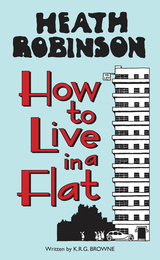 Heath Robinson: How to Live in a Flat
W. Heath Robinson
Bodleian Library Publishing, 2015 Heath Robinson (1872–1944) is Britain’s “Gadget King”—master of the art of creating madcap contraptions that made use of ropes, weights, and pulleys to perform relatively simple tasks, from wart removal to peeling potatoes. Although he trained as a painter and also worked as a book illustrator, Robinson developed his forte with drawings of gadgets that parodied the absurdities of modern life. A true cartoonist, Robinson had a way of getting at the heart of the matter while simultaneously satirizing it mercilessly. He became a household name in Britain, and his popularity continues today with plans to build a museum in London to share with a new generation the story of his life and work.
How to Live in a Flat brings together a series of patently Robinsonesque space-saving solutions for city dwellers looking to make the most of modest square footage. Some of the solutions involve furniture made to serve multiple—and often opposing—purposes, like a combination bath-and-writing desk for businessmen. Others reimagine the workings of entire apartment complexes, including one cutaway explaining the use of the communal bath.
A side-splittingly funny collection from the man whose “absurd, beautiful drawings” H. G. Wells claimed “give me a peculiar pleasure of the mind like nothing else in the world,” this book make a perfect gift for anyone looking to have a laugh at our complicated and increasingly mechanical modern life.
Heath Robinson: How to Make a Garden Grow
W. Heath Robinson (1872-1944) is best known for his hilarious drawings of outlandish contraptions, though his work ranged across a wide variety of topics covering many aspects of British life.
Bodleian Library Publishing, 2016
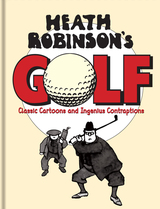 Heath Robinson's Golf: Classic Cartoons and Ingenious Contraptions
W. Heath Robinson
Bodleian Library Publishing, 2015 Heath Robinson (1872–1944) is Britain’s “Gadget King”—master of the art of creating madcap contraptions that made use of ropes, weights, and pulleys to perform relatively simple tasks, from wart removal to peeling potatoes. Although he trained as a painter and also worked as a book illustrator, Robinson developed his forte with drawings of gadgets that parodied the absurdities of modern life. A true cartoonist, Robinson had a way of getting at the heart of the matter while simultaneously satirizing it mercilessly. He became a household name in Britain, and his popularity continues today with plans to build a museum in London to share with a new generation the story of his life and work.
Heath Robinson’s Golf establishes Robinson as one of the great humorists of the “gentleman’s game.” From the origin of those peculiar shortened pants called “plus-fours” to the multiple meanings of an “awkward lie,” Robinson pokes fun at this popular sport. Among the cartoons in Golf are mechanisms like a machine for testing golf drivers or the “waterproof mashie” for keeping one’s clothes dry. And, while Robinson primarily focuses on the antics of a portly golfer and his long-suffering caddie, few will avoid the feeling that Robinson is at times speaking directly to them with contraptions like a putter fitted with a patented ball guide or a “movable bunker” to block an opponent’s progress down the fairway.
A side-splittingly funny collection from the man whose “absurd, beautiful drawings” H. G. Wells claimed “give me a peculiar pleasure of the mind like nothing else in the world,” this book make a perfect gift for anyone looking to have a laugh at our complicated and increasingly mechanical modern life.
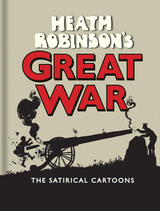 Heath Robinson’s Great War: The Satirical Cartoons
W. Heath Robinson
Bodleian Library Publishing, 2015 Heath Robinson (1872–1944) is Britain’s “Gadget King”—master of the art of creating madcap contraptions that made use of ropes, weights, and pulleys to perform relatively simple tasks, from wart removal to peeling potatoes. Although he trained as a painter and also worked as a book illustrator, Robinson developed his forte with drawings of gadgets that parodied the absurdities of modern life. A true cartoonist, Robinson had a way of getting at the heart of the matter while simultaneously satirizing it mercilessly. He became a household name in Britain, and his popularity continues today with plans to build a museum in London to share with a new generation the story of his life and work.
With Heath Robinson’s Great War, the cartoonist lampoons the German army and the hardships of war. What better antidote to the threat of popular German propaganda than drawings of the “Huns” disabling the British army not with mustard gas but laughing gas? In high demand among British civilians, Robinson’s WWI panels also provided respite to thousands of troops—many of whom sent the cartoonist letters suggesting future subjects or simply expressing their appreciation.
A side-splittingly funny collection from the man whose “absurd, beautiful drawings” H. G. Wells claimed “give me a peculiar pleasure of the mind like nothing else in the world,” this book make a perfect gift for anyone looking to have a laugh at our complicated and increasingly mechanical modern life.
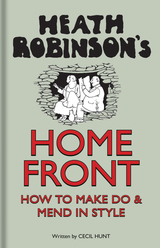 Heath Robinson's Home Front: How to Make Do and Mend in Style
W. Heath Robinson and Cecil Hunt
Bodleian Library Publishing, 2016 Heath Robinson’s Home Front sees the well-loved cartoonist working in collaboration with the writer and humorist Cecil Hunt. Together, they offer hopelessly impractical solutions to some of the most perplexing problems of the day. Pity the poor Briton advised to play his weekly bridge tournament while wearing a gas mask, the gardener who substitutes a complex configuration of magnets in the shortage of simple pea-sticks, or the motorist who must find a way to power her vehicle without gasoline. The result is an amusingly idiosyncratic celebration of the British population’s remarkable ability to “make do and mend.”
Heath Robinson was a household name in Britain, and millions of readers around the world continue to thoroughly enjoy his cartoons today. A classic military-themed compendium, Heath Robinson’s Home Front will be a favorite with fans of the cartoonist’s complicated, fanciful contraptions.
Heath Robinson's Second World War: The Satirical Cartoons
W. Heath Robinson
Bodleian Library Publishing, 2015 With Heath Robinson’s Second World War, Britain’s “Gadget King” uses his characteristic madcap contraptions to poke good-natured fun at the war. From a series of cork bath mats strung together to enable soldiers to cross a treacherous stream to a tank complete with piano attachment for campsite concertos, the cartoons found here are uproariously funny while also forming a cheerful critique of some of the absurdities of war.
Heath Robinson was a household name in Britain, and millions of readers around the world continue to thoroughly enjoy his cartoons today. This classic military-themed compendium will be a favorite with fans of the cartoonist’s complicated, fanciful contraptions.
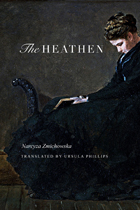 The Heathen: A Novel
Narcyza Zmichowska
Northern Illinois University Press, 2012 Narcyza Zmichowska (1819-76) was the most accomplished female writer to come out of Poland in the mid-nineteenth century. In terms of influence and popularity, she was the George Eliot of East European letters, but her fiction was written less in the realist style than in the Romantic one. Her novel The Heathen, rendered here in a crystalline English translation by Ursula Phillips, is the tale of a doomed love affair between Benjamin, a young man from a poor but patriotic rural family, and Aspasia, a femme fatale who is older, beautiful, worldlier, and more sexually liberated.
As the story unfolds, Benjamin falls in love with Aspasia, accompanies her to Warsaw, and under her influence achieves incredible intellectual and professional heights—until she tires of him and takes another lover. Jealous, Benjamin murders Aspasia’s new paramour and flees to his mother in the countryside—where he realizes the full extent of what he has lost and betrayed. Hence the fundamental tension in this work, represented by the two women who compete for Benjamin’s affection: the mother, who represents self-abnegation and redemption from sin, and Aspasia, who represents self-indulgence and sin itself. In the end, The Heathen embodies a profound meditation on the limits of these typecasts: the novel not only explores the restrictions they placed on women during the nineteenth century, but on human happiness, and Poland’s then tenuous impulse toward modernity.
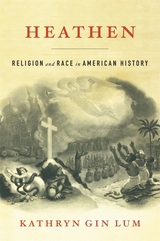 Heathen: Religion and Race in American History
Kathryn Gin Lum
Harvard University Press, 2022 Philip Schaff Prize, American Society of Church History
S-USIH Book Award, Society for U.S. Intellectual History
Merle Curti Award in Intellectual History, Organization of American Historians
“A fascinating book…Gin Lum suggests that, in many times and places, the divide between Christian and ‘heathen’ was the central divide in American life.”—Kelefa Sanneh, New Yorker
“Offers a dazzling range of examples to substantiate its thesis. Rare is the reader who could dip into it without becoming much better informed on a great many topics historical, literary, and religious. So many of Gin Lum’s examples are enlightening and informative in their own right.”—Philip Jenkins, Christian Century
“Brilliant…Gin Lum’s writing style is nuanced, clear, detailed yet expansive, and accessible, which will make the book a fit for both graduate and undergraduate classrooms. Any scholar of American history should have a copy.” —Emily Suzanne Clark, S-USIH: Society for U.S. Intellectual History
In this sweeping historical narrative, Kathryn Gin Lum shows how the idea of the heathen has been maintained from the colonial era to the present in religious and secular discourses—discourses, specifically, of race.
Americans long viewed the world as a realm of suffering heathens whose lands and lives needed their intervention to flourish. The term “heathen” fell out of common use by the early 1900s, leading some to imagine that racial categories had replaced religious differences. But the ideas underlying the figure of the heathen did not disappear. Americans still treat large swaths of the world as “other” due to their assumed need for conversion to American ways.
Race continues to operate as a heathen inheritance in the United States, animating Americans’ sense of being a world apart from an undifferentiated mass of needy, suffering peoples. Heathen thus reveals a key source of American exceptionalism and a prism through which Americans have defined themselves as a progressive and humanitarian nation even as supposed heathens have drawn on the same to counter this national myth.
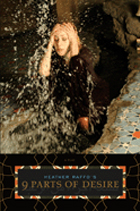 Heather Raffo's 9 Parts of Desire: A Play
Heather Raffo
Northwestern University Press, 2006 Winner, 2007 Chicago Book Clinic Crystal Book Award for Excellence in Design
As topical as today's newspaper headlines, these rich monologues bring to life nine distinct Iraqi women whose very different stories convey the complex and harrowing reality of being female in modern-day Iraq. Their monologues quickly become a series of overlapping conversations leading to a breakdown in communication as the chaos of Iraq intensifies. Layal is a sexy and impulsive painter favored by Saddam's regime, breezily bohemian one minute and defensive the next; another woman mourns the death of her family in a 1991 bunker, and another--a blond American of Iraqi descent--painfully recalls a telephone conversation with Baghdad relatives on the eve of the U. S. invasion. Other characters decry the savagery of Saddam Hussein in terrifying detail and express an ambivalent relief at the American presence; still others--like a Bedouin woman searching for love--transcend politics.
The title comes from the teachings of the seventh-century imam Ali ibn Abu Talib: "God created sexual desire in ten parts; then he gave nine parts to women and one part to men." Heather Raffo's monologues weave these nine parts into a finely textured, brilliantly colorful tapestry of feminine longing in dire times. This compassionate and heart-breaking work will forever change your view of Iraqi women and the people of the Middle East.
Heating Asphalt with Diphenyl Vapor: Engineering Research Bulletin, Number 23
W. L. McCabe
University of Michigan Press, 1932 In the research reported in this Bulletin, asphalt was heated, on a semi-commercial scale, by means of condensing diphenyl vapor. The asphalt was pumped through the inside of the heating tube, and condensing diphenyl surrounded the tube. It was found that this method of heating was entirely practical from a mechanical and control point of view, that the quality of the asphalt was not impaired to the slightest degree even under extreme heating conditions, and that overall heat transfer coefficients of 31 to 44 B.t.u. per hr. per sq. ft. per °F. can easily be obtained. The observed film coefficients of heat transfer on the asphalt and diphenyl sides of the heating surface were found to be reasonably consistent with existing heat transfer theories for analogous cases.
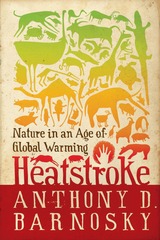 Heatstroke: Nature in an Age of Global Warming
Anthony D. Barnosky
Island Press, 2010 In 2006, one of the hottest years on record, a “pizzly” was discovered near the top of the world. Half polar bear, half grizzly, this never-before-seen animal might be dismissed as a fluke of nature. Anthony Barnosky instead sees it as a harbinger of things to come.
In Heatstroke, the renowned paleoecologist shows how global warming is fundamentally changing the natural world and its creatures. While melting ice may have helped produce the pizzly, climate change is more likely to wipe out species than to create them. Plants and animals that have followed the same rhythms for millennia are suddenly being confronted with a world they’re unprepared for—and adaptation usually isn’t an option.
This is not the first time climate change has dramatically transformed Earth. Barnosky draws connections between the coming centuries and the end of the last ice age, when mass extinctions swept the planet. The differences now are that climate change is faster and hotter than past changes, and for the first time humanity is driving it. Which means this time we can work to stop it.
No one knows exactly what nature will come to look like in this new age of global warming. But Heatstroke gives us a haunting portrait of what we stand to lose and the vitality of what can be saved.
Heaven & Earth Holding Company
John Hodgen
University of Pittsburgh Press, 2010 “Heaven & Earth Holding Company contains a plentitude of delights. Like little stories told in the night, these poems are clear narratives crossed by mysterious shadows. And Hodgen’s tone occupies a singular place at the intersection of funky wit and true feeling.”
—Billy Collins
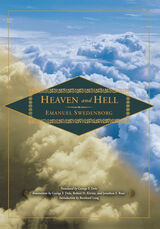 Heaven and Hell
Emanuel Swedenborg
Swedenborg Foundation Publishers, 2000 What happens to us when we die? Are heaven and hell real? If so, what are they like? Heaven and Hell contains the answers to these questions as seen by Emanuel Swedenborg (1688-1772). This new translation of Swedenborg’s most popular work paints a detailed picture of life in the spiritual realms. A Swedish Enlightenment scientist of extraordinary accomplishment, Swedenborg underwent a spiritual crisis that led to an unparalleled series of paranormal experiences. He spent his last twenty-seven years in almost daily experience of heaven and hell, recording his observations and conversations, many of which are reported in Heaven and Hell. This sustained and detailed description of the nonphysical realms has left its impression on the minds of many great thinkers, including Goethe, Blake, Coleridge, Emerson, Borges, and Milosz. This deluxe edition contains an introduction by religious historian Bernhard Lang setting the volume in the context of its time. The New Century Edition of the Works of Emanuel Swedenborg is a modern-language, scholarly translation of Swedenborg’s theological works. The series’ easy-to-read style retains the dignity, variety, clarity, and gender-inclusive language of Swedenborg’s original Latin, bringing his thought to life. Introductions and annotations by eminent, international scholars place Swedenborg’s writings in their historical context and illuminate obscure references within the text, enabling readers to understand and trace Swedenborg’s influence as never before.
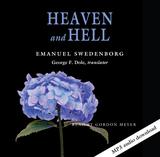 HEAVEN AND HELL: PORTABLE: THE PORTABLE NEW CENTURY EDITION
Emanuel Swedenborg
Swedenborg Foundation Publishers, 2020
What happens to us when we die? Are heaven and hell real? If so, what are they like? Heaven and Hell contains the answers to these questions as seen by Emanuel Swedenborg (1688-1772).
This new translation of Swedenborg’s most popular work paints a detailed picture of life in the spiritual realms. A Swedish Enlightenment scientist of extraordinary accomplishment, Swedenborg underwent a spiritual crisis that led to an unparalleled series of paranormal experiences. He spent his last twenty-seven years in almost daily experience of heaven and hell, recording his observations and conversations, many of which are reported in Heaven and Hell. This sustained and detailed description of the nonphysical realms has left its impression on the minds of many great thinkers, including Goethe, Blake, Coleridge, Emerson, Borges, and Milosz.
The New Century Edition of the Works of Emanuel Swedenborg is a modern-language, scholarly translation of Swedenborg’s theological works. The series’ easy-to-read style retains the dignity, variety, clarity, and gender-inclusive language of Swedenborg’s original Latin, bringing his thought to life.
This portable edition contains the text of the translation, but not the introduction, annotations, or other supplemental materials found in the deluxe edition.
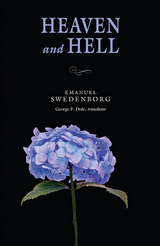 Heaven and Hell: The Portable New Century Edition
Emanuel Swedenborg
Swedenborg Foundation Publishers, 2010 What happens to us when we die? Are heaven and hell real? If so, what are they like? Heaven and Hell contains the answers to these questions as seen by Emanuel Swedenborg (1688-1772). This new translation of Swedenborg’s most popular work paints a detailed picture of life in the spiritual realms. A Swedish Enlightenment scientist of extraordinary accomplishment, Swedenborg underwent a spiritual crisis that led to an unparalleled series of paranormal experiences. He spent his last twenty-seven years in almost daily experience of heaven and hell, recording his observations and conversations, many of which are reported in Heaven and Hell. This sustained and detailed description of the nonphysical realms has left its impression on the minds of many great thinkers, including Goethe, Blake, Coleridge, Emerson, Borges, and Milosz. The New Century Edition of the Works of Emanuel Swedenborg is a modern-language, scholarly translation of Swedenborg’s theological works. The series’ easy-to-read style retains the dignity, variety, clarity, and gender-inclusive language of Swedenborg’s original Latin, bringing his thought to life. This portable edition contains the text of the translation, but not the introduction, annotations, or other supplemental materials found in the deluxe edition.
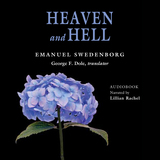 Heaven and Hell: The Portable New Century Edition
Emanuel Swedenborg
Swedenborg Foundation Publishers, 2024 What happens to us when we die? Are heaven and hell real? If so, what are they like? Heaven and Hell contains the answers to these questions as seen by Emanuel Swedenborg (1688-1772). This new translation of Swedenborg’s most popular work paints a detailed picture of life in the spiritual realms. A Swedish Enlightenment scientist of extraordinary accomplishment, Swedenborg underwent a spiritual crisis that led to an unparalleled series of paranormal experiences. He spent his last twenty-seven years in almost daily experience of heaven and hell, recording his observations and conversations, many of which are reported in Heaven and Hell. This sustained and detailed description of the nonphysical realms has left its impression on the minds of many great thinkers, including Goethe, Blake, Coleridge, Emerson, Borges, and Milosz. The New Century Edition of the Works of Emanuel Swedenborg is a modern-language, scholarly translation of Swedenborg’s theological works. The series’ easy-to-read style retains the dignity, variety, clarity, and gender-inclusive language of Swedenborg’s original Latin, bringing his thought to life. This portable edition contains the text of the translation, but not the introduction, annotations, or other supplemental materials found in the deluxe edition.
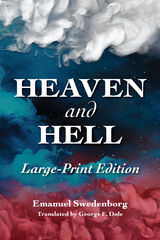 Heaven and Hell: The Portable New Century Edition
Emanuel Swedenborg
Swedenborg Foundation Publishers, 2020 What happens to us when we die? Are heaven and hell real? If so, what are they like? Heaven and Hell contains the answers to these questions as seen by Emanuel Swedenborg (1688-1772). This new translation of Swedenborg’s most popular work paints a detailed picture of life in the spiritual realms. A Swedish Enlightenment scientist of extraordinary accomplishment, Swedenborg underwent a spiritual crisis that led to an unparalleled series of paranormal experiences. He spent his last twenty-seven years in almost daily experience of heaven and hell, recording his observations and conversations, many of which are reported in Heaven and Hell. This sustained and detailed description of the nonphysical realms has left its impression on the minds of many great thinkers, including Goethe, Blake, Coleridge, Emerson, Borges, and Milosz. The New Century Edition of the Works of Emanuel Swedenborg is a modern-language, scholarly translation of Swedenborg’s theological works. The series’ easy-to-read style retains the dignity, variety, clarity, and gender-inclusive language of Swedenborg’s original Latin, bringing his thought to life. This portable edition contains the text of the translation, but not the introduction, annotations, or other supplemental materials found in the deluxe edition.
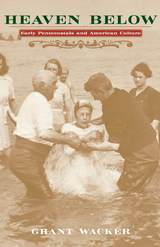 Heaven Below: Early Pentecostals and American Culture
Grant Wacker
Harvard University Press, 2003 In this lively history of the rise of pentecostalism in the United States, Grant Wacker gives an in-depth account of the religious practices of pentecostal churches as well as an engaging picture of the way these beliefs played out in daily life.The core tenets of pentecostal belief—personal salvation, Holy Ghost baptism, divine healing, and anticipation of the Lord’s imminent return—took root in the first quarter of the twentieth century. Wacker examines the various aspects of pentecostal culture, including rituals, speaking in tongues, the authority of the Bible, the central role of Jesus in everyday life, the gifts of prophecy and healing, ideas about personal appearance, women’s roles, race relations, attitudes toward politics and the government. Tracking the daily lives of pentecostals, and paying close attention to the voices of individual men and women, Wacker is able to identify the reason for the movement’s spectacular success: a demonstrated ability to balance idealistic and pragmatic impulses, to adapt distinct religious convictions in order to meet the expectations of modern life.More than twenty million American adults today consider themselves pentecostal. Given the movement’s major place in American religious life, the history of its early years—so artfully told here—is of central importance.
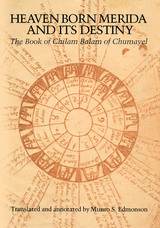 Heaven Born Merida and Its Destiny: The Book of Chilam Balam of Chumayel
Translated and annotated by Munro S. Edmonson
University of Texas Press, 1986 When the Spaniards conquered the Yucatan Peninsula in the early 1500s, they made a great effort to destroy or Christianize the native cultures flourishing there. That they were in large part unsuccessful is evidenced by the survival of a number of documents written in Maya and preserved and added to by literate Mayas up to the 1830s. The Book of Chilam Balam of Chumayel is such a document, literally the history of Yucatan written by and for Mayas, and it contains much information not available from Spanish sources because it was part of an underground resistance movement of which the Spanish were largely unaware. Well known to Mayanists, The Book of Chilam Balam of Chumayel is presented here in Munro S. Edmonson's English translation, extensively annotated. Edmonson reinterprets the book as literature and as history, placing it in chronological order and translating it as poetry. The ritual nature of Mayan history clearly emerges and casts new light on Mexican and Spanish acculturation of the Yucatecan Maya in the post-Classic and colonial periods. Centered in the city of Merida, the Chumayel provides the western (Xiu) perspective on Yucatecan history, as Edmonson's earlier book The Ancient Future of the Itza: The Book of Chilam Balam of Tizimin presented the eastern (Itza) viewpoint. Both document the changing calendar of the colonial period and the continuing vitality of pre-Columbian ritual thought down to the nineteenth century. Perhaps the biggest surprise is the survival of the long-count dating system down to the Baktun Ceremonial of 1618 (12.0.0.0.0). But there are others: the use of rebus writing, the survival of the tun until 1752, graphic if oblique accounts of Mayan ceremonial drama, and the depiction of the Spanish conquest as a long-term inter-Mayan civil war.
Heaven Has a Wall: Religion, Borders, and the Global United States
Elizabeth Shakman Hurd
University of Chicago Press, 2025 An urgent exploration of borders as sacred objects in American culture.
Our national conversation about the border has taken a religious turn. When televangelists declare, “Heaven has a wall,” activists shout back, “Jesus was a refugee.” For Elizabeth Shakman Hurd, the standoff makes explicit a longstanding truth: borders are religious as well as political objects.
In this book, Hurd argues that Americans share a bipartisan border religion, complete with an array of beliefs and practices, including a reverence for national security, a liturgy for immigration, and an eschatological foreign policy. Through an analysis of the many ways the United States creates, enforces, and ignores borders at home and abroad, Hurd offers a bold new perspective on the ties that bind American religion, politics, and public life.
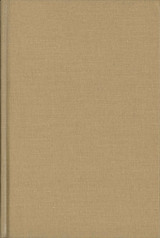 Heaven, Hell, and Everything in Between: Murals of the Colonial Andes
By Ananda Cohen-Aponte
University of Texas Press, 2016 Examining the vivid, often apocalyptic church murals of Peru from the early colonial period through the nineteenth century, Heaven, Hell, and Everything in Between explores the sociopolitical situation represented by the artists who generated these murals for rural parishes. Arguing that the murals were embedded in complex networks of trade, commerce, and the exchange of ideas between the Andes and Europe, Ananda Cohen-Aponte also considers the ways in which artists and viewers worked through difficult questions of envisioning sacredness. This study brings to light the fact that, unlike the murals of New Spain, the murals of the Andes possess few direct visual connections to a pre-Columbian painting tradition; the Incas’ preference for abstracted motifs created a problem for visually translating Catholic doctrine to indigenous congregations, as the Spaniards were unable to read Inca visual culture. Nevertheless, as Cohen Suarez demonstrates, colonial murals of the Andes can be seen as a reformulation of a long-standing artistic practice of adorning architectural spaces with images that command power and contemplation. Drawing on extensive secondary and archival sources, including account books from the churches, as well as on colonial Spanish texts, Cohen Suarez urges us to see the murals not merely as decoration or as tools of missionaries but as visual archives of the complex negotiations among empire, communities, and individuals.
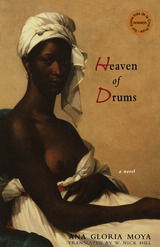 Heaven of Drums
Ana Gloria Moya
Northwestern University Press, 2006 Winner of the 2002 Sor Juana Inés de la Cruz Prize
This story of love and revolution takes place during the Argentine struggle for independence (1810-1820) and focuses on the character of the national hero, Manuel Belgrano. Belgrano's story is told through the voices of the real heroes of the novel—María Kumbá a mulatto healer-priestess, fighter, and nurse to the common soldiers; and Gregorio Rivas, mestizo son of a well-to-do Spanish businessman. Heaven of Drums (Cielo de tambores) is filled with political and personal intrigue. At the core of the novel is the issue of racial discrimination. Belgrano is blinded to the love María has for him and the good counsel she has to offer because of his contempt for blacks. His open contempt for Rivas as a mestizo leads to his death. Rivas becomes María's lover but is always haunted by María's evident adoration of Belgrano. The manner in which the love-hate triangle plays out is filled with surprises and cuts to the heart of Argentina's troubled identity.
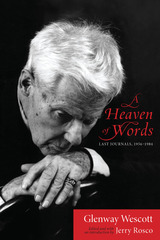 A Heaven of Words: Last Journals, 1956–1984
Glenway Wescott; Edited and with an introduction by Jerry Rosco
University of Wisconsin Press, 2013 Charm, wit, compassion, wisdom, literature, nature, sex, humor, politics, sorrow, love: these themes fill the late journal pages of enigmatic American writer Glenway Wescott. From humble beginnings on a poor Wisconsin farm, Wescott went on to study at the University of Chicago, narrowly survive the Spanish flu pandemic, and eventually emerge as an influential poet and novelist. A major figure in the American literary expatriate community in Paris during the 1920s and a prominent American novelist in the years leading up to World War II, he spent a decade living abroad before relocating permanently to New York and New Jersey with his partner, Museum of Modern Art publications director and curator Monroe Wheeler. Together they mixed with such intellectual and creative greats as Jean Cocteau, Colette, George Platt Lynes, Paul Cadmus, Somerset Maugham, Christopher Isherwood, Marianne Moore, W. H. Auden, Truman Capote, Joseph Campbell, and scores of other luminaries. During the second half of his life, Wescott wrote nonfiction essays and worked for the Academy Institute of Arts and Letters, all the while keeping journals in which he recorded the experiences that fostered his love of life, literature, the arts, and humanity. A Heaven of Words looks back on Wescott's entire fascinating life and reveals the riveting narrative of his last decades.
Winner, Gay Memoir/Biography, Lambda Literary Awards
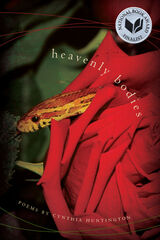 Heavenly Bodies
Cynthia Huntington
Southern Illinois University Press, 2011 National Book Award Finalist 2012
In this blistering collection of lyric poems, Cynthia Huntington gives an intimate view of the sexual revolution and rebellion in a time before the rise of feminism. Heavenly Bodies is a testament to the duality of sex, the twin seductiveness and horror of drug addiction, and the social, political, and personal dramas of America in the 1960s.
From the sweetness of purloined blackberries to the bitter taste of pills, the ginger perfume of the Hawaiian Islands to the scream of the winter wind, Huntington’s fearless and candid poems offer a feast for the senses that is at once mystical and earthy, cynical and surreal. Echoing throughout are some of the most famous—and infamous—voices of the times: Joan Baez and Charles Manson, Frank Zappa and Betty Friedan. Jinns and aliens beckon while cities burn and revolutionaries thunder for change. At the center is the semiautobiographical Suzy Creamcheese, sensual and rebellious, both almighty and powerless in her sexuality.
Achingly tender yet brutally honest, Heavenly Bodies is an unflinching reflection on the most personal of physical and emotional journeys.
Univeristy Press Books for Public and Secondary Schools 2013 edition
Finalist for the National Book Award in Poetry, 2012
The Heavenly City: A Spiritual Guidebook
Emanuel Swedenborg
Swedenborg Foundation Publishers, 1993 This new translation of De Novo Hierosolyma Et Ejus Doctrina Coelesti (alternatively translated The New Jerusalem and Its Heavenly Doctrine) by Emanuel Swedenborg presents the ideas of this Swedish visionary in simple, modern English. In the short work, Swedenborg discusses our motivations and inner natures, love and selfishness, and ways in which we can develop ourselves as spiritual people. He also covers different aspects of religion, such as the Bible, observances like baptism and the Holy Supper (Eucharist), the nature of heaven and hell, and how we can apply all these ideas to our daily lives.
The Heavenly Contract: Ideology and Organization in Pre-Revolutionary Puritanism
David Zaret
University of Chicago Press, 1985 The idea of a heavenly contract, uniting God and humanity in a bargain of salvation, emerged as the keystone of Puritan theology in early modern England. Yet this concept, with its connotations of exchange and reciprocity, runs counter to other tenets of Calvinism, such as predestination, that were also central to Puritan thought. With bold analytic intelligence, David Zaret explores this puzzling conflict between covenant theology and pure Calvinism. In the process he demonstrates that popular beliefs and activities had tremendous influence on Puritan religion.
 Heavenly Supper: The Story of Maria Janis
Fulvio Tomizza
University of Chicago Press, 1991 It is a winter morning in Venice, in 1622. Muted voices drift through a thin wall next door. Her curiosity aroused, a young woman peers through a crack in the door, only to witness a strange and disturbing sight: a woman and a priest secretly celebrating communion. Troubled by what she sees, she reports the incident at confession. Her revelation leads to the arrest, jailing, and arraignment of the two for heresy before the Venetian Holy Office of the Inquisition.
So begins Fulvio Tomizza's absorbing account of the true story of Maria Janis, a devout peasant woman from the mountains north of Bergamo. Too poor to enter a convent, Maria had set out to serve God by relinquishing the little she had, through renunciation of all food but the bread and wine of communion. Encouraged by the restless village priest Pietro Morali, Maria claimed to have existed in this sanctified state for five years. During this time, she, Morali, and the weaver Pietro Palazzi travel from a little village in the Alps to Rome and then to Venice, where their alleged sacrilege is discovered and they are brought to trial. Both revered as a saint and reviled as a fraud, Maria with her "privilege" inspires and threatens believers within the Church. Combining the historian's precision with the novelist's imagination, Tomizza painstakingly reconstructs her story, crafting a fascinating portrait of sublimated love, ambition, and jealousy.
Heavenly Supper alternates a chronological account of the trial with analyses of each protagonist's life history. Along the way, Tomizza gives voice to the minds and hearts of his characters, allowing them to speak for themselves in their own words. The world he recreates resonates with the fervor of the Counter Reformation when faith and its consequences were rigidly controlled by the Church. As suspenseful as a detective novel, Tomizza's story goes beyond the trial to evoke a panoramic view of seventeenth-century Italian culture.
Heavenly Warriors: The Evolution of Japan’s Military, 500–1300
William Wayne Farris
Harvard University Press, 1992 "In a government, military matters are the essential thing," said Japan's "Heavenly Warrior," the Emperor Temmu, in 684. Heavenly Warriors traces in detail the evolutionary development of weaponry, horsemanship, military organization, and tactics from Japan's early conflicts with Korea up to the full-blown system of the samurai. Enhanced by illustrations and maps, and with a new preface by the author, this book will be indispensable for students of military history and Japanese political history.
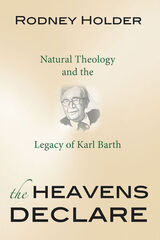 The Heavens Declare: Natural Theology and the Legacy of Karl Barth
Rodney Holder
Templeton Press, 2012 One of the central themes of inquiry for Karl Barth, the twentieth-century Protestant theologian, was the notion of revelation. Although he was suspicious of natural theology (i.e. the seeking of evidence for God’s existence in the ordered structure of the world), recent scientific advances (notably in physics and cosmology) and the flourishing modern dialogue between science and religion offer compelling reasons to revisit Barth’s thinking on the concept. We must again ask whether and how it might be possible to hold together the notion of revelation whilst employing reason and scientific evidence in the justification of belief.
In The Heavens Declare, author Rodney Holder re-examines Barth’s natural theology argument and then explores how it has been critiqued and responded to by others, starting with Dietrich Bonhoeffer and Wolfhart Pannenberg. Holder then considers the contributions of two notable British participants in the science-religion dialogue, Thomas Torrance and Alister McGrath, who, despite their repudiation of natural theology in the traditional sense, also provide many positive lessons. The book concludes by defending an overall position which takes into account the ideas of the aforementioned theologians as well as others who are currently engaged positively in natural theology, such as John Polkinghorne and Richard Swinburne.
Holder’s new study is sure to be of interest to theologians, philosophers of religion, and all scholars interested in the science-religion dialogue, especially those interested in natural theology as an enterprise in itself.
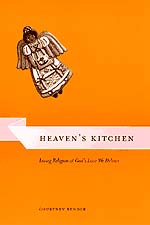 Heaven's Kitchen: Living Religion at God's Love We Deliver
Courtney Bender
University of Chicago Press, 2003 How do people practice religion in their everyday lives? How do our daily encounters with people who hold different religious beliefs shape the way we understand our own moral and spiritual selves? In Heaven's Kitchen, Courtney Bender takes a highly original approach to answering these questions. For more than a year she worked in New York City as a volunteer for a nonprofit, nonreligious organization called God's Love We Deliver, helping to prepare home-cooked meals for people with AIDS. Paying close attention to what was said and not said, Bender traces how the volunteers gave voice to their moral positions and religious values. She also examines how they invested their conversations, and mundane activities such as cooking, with personal meaning that in turn affected how they saw their own spiritual lives. Filled with vibrant storytelling and rich theoretical insights, Heaven's Kitchen shows faith as a living practice, reshaping our understanding of the role of religion in contemporary American life.
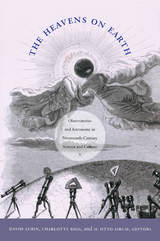 The Heavens on Earth: Observatories and Astronomy in Nineteenth-Century Science and Culture
David Aubin, Charlotte Bigg, and H. Otto Sibum, eds.
Duke University Press, 2010 The Heavens on Earth explores the place of the observatory in nineteenth-century science and culture. Astronomy was a core pursuit for observatories, but usually not the only one. It belonged to a larger group of “observatory sciences” that also included geodesy, meteorology, geomagnetism, and even parts of physics and statistics. These pursuits coexisted in the nineteenth-century observatory; this collection surveys them as a coherent whole. Broadening the focus beyond the solitary astronomer at his telescope, it illuminates the observatory’s importance to technological, military, political, and colonial undertakings, as well as in advancing and popularizing the mathematical, physical, and cosmological sciences. The contributors examine “observatory techniques” developed and used not only in connection with observatories but also by instrument makers in their workshops, navy officers on ships, civil engineers in the field, and many others. These techniques included the calibration and coordination of precision instruments for making observations and taking measurements; methods of data acquisition and tabulation; and the production of maps, drawings, and photographs, as well as numerical, textual, and visual representations of the heavens and the earth. They also encompassed the social management of personnel within observatories, the coordination of international scientific collaborations, and interactions with dignitaries and the public. The state observatory occupied a particularly privileged place in the life of the city. With their imposing architecture and ancient traditions, state observatories served representative purposes for their patrons, whether as symbols of a monarch’s enlightened power, a nation’s industrial and scientific excellence, or republican progressive values. Focusing on observatory techniques in settings from Berlin, London, Paris, and Rome to Australia, Russia, Thailand, and the United States, The Heavens on Earth is a major contribution to the history of science. Contributors: David Aubin, Charlotte Bigg, Guy Boistel, Theresa Levitt, Massimo Mazzotti, Ole Molvig, Simon Schaffer, Martina Schiavon , H. Otto Sibum, Richard Staley, John Tresch, Simon Werrett, Sven Widmalm
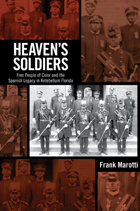 Heaven's Soldiers: Free People of Color and the Spanish Legacy in Antebellum Florida
Frank Marotti
University of Alabama Press, 2013 Heaven’s Soldiers chronicles the history of a community of free people of African descent who lived and thrived, while resisting the constraints of legal bondage, in East Florida in the four decades leading up to the Civil War. Historians have long attributed the relatively flexible system of race relations in pre–Civil War East Florida to the area’s Spanish heritage. While acknowledging the importance of that heritage, this book gives more than the usual emphasis to the role of African American agency in exploiting the limited opportunities that such a heritage permitted. Spanish rule presented institutions and customs that talented, ambitious, and fortunate individuals might, and did, exploit. Although racial prejudice was never absent, persons of color aspired to lives of dignity, security, and prosperity. Frank Marotti’s subjects are the free people of African descent in the broad sense of the term “free,” that is, not just those who were legally free, but all those who resisted the constraints of legal bondage and otherwise asserted varying degrees of control over themselves and their circumstances. Collectively, this population was indispensable to the evolution of the existing social order. In Heaven’s Soldiers, Marotti studies four pillars of black liberty that emerged during Spain’s rule and continued through the United States’ acquisition of Florida in 1821: family ties to the white community, manumission, military service, and land ownership. The slaveowning culture of the United States eroded a number of these pillars, though black freedom and agency abided in ways unparalleled anywhere else in the pre–Civil War United States. Indeed, a strong black martial tradition arguably helped to topple Florida’s slave-holding regime, leading up to the start of the Civil War. Marotti surveys black opportunities and liabilities under the Spaniards; successful defenses of black rights in the 1820s as well as chilling statutory assaults on those rights; the black community’s complex involvement in the Patriot War and the Second Seminole War; black migration in the two decades leading up to the US Civil War; and African American efforts to preserve marriage and emancipation customs, and black land ownership.
Heavier Than Air: Stories
Nona Caspers
University of Massachusetts Press, 2008
Throughout this collection, which was plucked from a pile of 300 manuscripts and awarded the Grace Paley Prize in short fiction, Caspers details the many ways reality can interfere with our dreams. Not surprisingly, dissatisfaction becomes a dominant theme. . . . Many of Caspers's stories are set in Minnesota's cattle and dairy country, and all of them traffic in the kind of Midwestern realism that doesn't rely on pyrotechnics to generate dramatic heat. Throughout, Caspers's people—it's difficult to consider some of them mere characters—question the decisions they've made or the ones they refuse to make. There's nothing flashy about Caspers's prose; like the beauty of the prairie itself, its attraction lies in details seen up close.New York Times Book Review
Heavy Ground: William Mulholland and the St. Francis Dam Disaster
Norris Hundley
University of Nevada Press, 2020 Heavy Ground explores the social, political, and technological history of the St. Francis Dam Disaster in California, the worst civil engineering disaster in twentieth-century American History. Approximately 400 people died in March 1928, when the concrete gravity dam built by Los Angeles engineer William Mulholland suddenly and tragically collapsed, releasing over 12 billion gallons of water into the Santa Clara River Valley.
 Heavy Justice: The Trial of Mike Tyson
J. Gregory Garrison
University of Arkansas Press Heavy Justice is the inside story of one of the great courtroom battles of our time. Gregory Garrison, the special prosecutor in the case, and Randy Roberts, historian and eminent boxing scholar, recount the trial that put heavyweight champion Mike Tyson behind bars. With all the drama, verve, and procedural detail of a novel by John Grisham or Scott Turow, this is also a highly topical morality play touching on all the issues of sex, race, celebrity, and justice that now so perplex our society. When he first heard about the Tyson case, Greg Garrison wanted nothing to do with it. Date rape? Always tough to prove. And one of the few facts already reported was that the young woman making the accusation had been in the defendant's hotel room at two o'clock in the morning. This case was dead on arrival, except that when Desiree Washington told her story, Garrison believed her. So drawing on this simple trust, and inspired by Desiree's courage and conviction, he accepted the challenge of this "unwinnable" case, stepping into the ring against not only Mike Tyson, multimillionaire sports celebrity and hero to millions, and Don King, cheerleader, but also the Washington law firm of Williams & Connolly, perhaps the slickest and most powerful defense counsel money could buy. Originally published in 1994, Heavy Justice brings together the worlds of big-time sports, lowlife sleaze, painstaking police work, and the lofty realms of Harvard's Alan Dershowitz to offer us a thoroughly absorbing account of one of the century's most important legal cases.
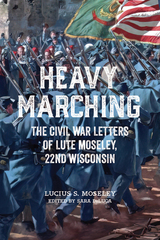 Heavy Marching: The Civil War Letters of Lute Moseley, 22nd Wisconsin
Lucius S. Moseley, edited by Sara DeLuca
University of Wisconsin Press, 2023 Lucius “Lute” Moseley was a nineteen-year-old student at Beloit Academy when he enlisted in the Union Army. Moseley grew up on a family farm outside Beloit, Wisconsin, where his father operated the first dray service before opening a blacksmith shop and lumber yard. His father lost most of his modest assets through litigation of a building contract he had received, which likely influenced his son’s decision to enlist in the army.
From 1862 to 1865, Moseley fought in the Civil War as an infantry soldier in Wisconsin’s 22nd Volunteers. Briefly captured and interred in a Confederate POW Camp, he returned to action and participated in Sherman’s Atlanta campaign. He marched in the Washington, D.C., Grand Review before returning to the Beloit area, where he remained for the rest of his life.
Mosely wrote detailed missives to his family in Beloit about his wartime experiences, demonstrating a flair for describing both camp life and battles. Frank and forthright, he was remarkably articulate, insightful, and thoughtful, whether describing mundane activities or the nearly unfathomable death of President Lincoln. These 125 letters, never before made available to scholars or students of the war, became touchstones and sources of pride for the Moseley family—and provide a uniquely candid and vivid view of this tumultuous period in US history.
Heavy Metal
Andrew Bourelle
Autumn House Press, 2017 Andrew Bourelle’s novel, Heavy Metal, gives us a glimpse into the life of Danny, a teenager who seeks peace and stability after the suicide of his mother.
Heavy Metal
Andrew Bourelle
Autumn House Press, 2023 Andrew Bourelle’s novel, Heavy Metal, gives us a glimpse into the life of Danny, a teenager who seeks peace and stability after the suicide of his mother.
 Heavy Metal and Disability: Crips, Crowds, and Cacophonies
Edited by Jasmine Hazel Shadrack and Keith Kahn-Harris
Intellect Books, 2024 A study of the distinctive relationship between metal and disability.
Persisting across metal’s subgenres is a preoccupation with exploring and questioning the boundary that divides the body that has agency from the body that has none. This boundary is one that is familiar to those for whom the agency of the body is an everyday matter of survival. While metal scholars who contribute to this collection see metal as a space of possibility, in which dis/ability and other intersectional identities can be validated and understood, the collection does not imply that the possibilities that metal affords are always actualized. This collection situates itself in a wider struggle to open up metal, challenging its power structures—a struggle in which metal studies has played a significant part.
Metal’s preoccupation with unleashing and controlling sensorial overload acts both as an analog of neurodiversity and as a space in which those who are neurodivergent find ways to understand and leverage their sensory capacities. Metal offers potent resources for the self-understanding of people with disabilities. It does not necessarily mean that this potential is always explored or that metal scenes are hospitable to those with disabilities. This collection is disability-positive, validating people with disabilities as different and not damaged.
 Heavy Metal Music in Argentina: In Black We Are Seen
Edited by Emiliano Scaricaciottoli, Nelson Varas-Díaz, and Daniel Nevárez Araujo
Intellect Books, 2020 The first collection of essays on Argentine metal music.
This is an interdisciplinary study of Argentina’s heavy metal subculture between 1983 and 2002, a period in which metal music withstood the onslaught of military dictatorship and survived the neoliberal policies of bourgeois democracy.
Edited by leading researchers in the field, this collection addresses the music’s rituals, circulations, cultural products, lyrics, and intertexts, allowing readers to rethink the genre’s place within Argentinean politics and economics. Exclusively written by members of the Group for Interdisciplinary Research on Argentinian Heavy Metal (GIIHMA) in a communal approach to scholarship, the book echoes the working-class voices that marked early post-dictatorship metal music in Argentina, exploring heavy metal music as a catalyst for social change and a site for engaging political reflection. This is a fascinating work of scholarship and a groundbreaking contribution to the emerging field of global metal studies.
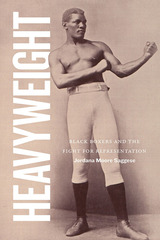 Heavyweight: Black Boxers and the Fight for Representation
Jordana Moore Saggese
Duke University Press, 2024 In Heavyweight, Jordana Moore Saggese examines images of Black heavyweight boxers to map the visual terrain of racist ideology in the United States, paying particular attention to the intersecting discourses of Blackness, masculinity, and sport. Looking closely at the “shadow archive” of portrayals across fine art, vernacular imagery, and public media at the turn of the twentieth century, shedemonstrates how the images of boxers reveal the racist stereotypes implicit in them, many of which continue to structure ideas of Black men today. With a focus on both anonymous fighters and notorious champions, including Jack Johnson, Saggese contends that popular images of these men provided white spectators a way to render themselves experts on Blackness and Black masculinity. These images became the blueprint for white conceptions of the Black male body—existing between fear and fantasy, simultaneously an object of desire and an instrument of violence. Reframing boxing as yet another way whiteness establishes the violent mythology of its supremacy, Saggese highlights the role of imagery in normalizing a culture of anti-Blackness.
Heber C. Kimball: MORMON PATRIARCH AND PIONEER
Stanley B. Kimball
University of Illinois Press, 1981 Heber C. Kimball was Mormonism's most colorful leader and a major force in shaping, sustaining, and spreading the Mormon faith. Only Joseph Smith and Brigham Young wielded as much authority or had as much influence during the first four decades of the Mormon church. This is the first comprehensive and objective biography of Kimball since 1888. Stanley B. Kimball, Heber's great-great-grandson, shows us the man in all of his many dimensions---missionary, pioneer, preacher, politician, farmer, father, and husband.
"Superb! This is a superior biography, based almost entirely on manuscript sources, few of which have been used or even examined by other scholars. It is new, it is fresh, it is fast-moving, it has the ring of truth, there is little editorializing, and it is written with economy, clarity, and balance." -- Leonard J. Arrington, author of Brigham Young: American Moses
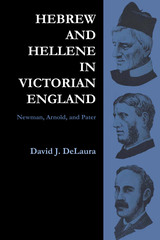 Hebrew and Hellene in Victorian England: Newman, Arnold, and Pater
By David DeLaura
University of Texas Press, 1969 Hebrew and Hellene explores the intellectual and personal relations among John Henry Newman, Matthew Arnold, and Walter Pater, three figures important in the development of nineteenth-century English thought and culture. Fundamentally concerned with the humanistic vision of Arnold and Pater, especially as they adapted the traditional religious culture to the needs of their generation, David DeLaura also recognizes Newman's central role. To a far greater degree than has been realized, Newman assumed a commanding position in the thought of the two younger men. DeLaura seeks to define the mechanics of the process by which the conservative religious humanism of Newman could be exploited in the fluid, relativistic, and "aesthetic" humanism of Pater. The careers of Arnold and Pater are viewed as a continuing effort to reconcile the opposing forces of one of the central modern myths, the great cultural struggle between religious and secular values—Arnold's Hebraism and Hellenism. DeLaura traces this important movement in nineteenth-century culture by studying the development of key phrases and ideas in the writings of the three men: the secularization of Newman's ideal of "inwardness" in Arnold's "criticism" and "culture" and in Pater's "impassioned contemplation"; the shared emphasis on an elite culture; the growing tendency to identify culture with the functions of traditional religion. Newman, as the supreme apologist of both religious orthodoxy and the older Oxonian tradition, offered a rich arsenal to the defenders of a literary culture increasingly threatened by the utilitarian spirit (!nd by a rising scientific naturalism. Moreover, with the appearance of his Apologia in 1864, the "mystery" and the "miracle" of Newman's personality intrigued a new literary generation. In Hebrew and Hellene DeLaura looks beyond the debates of the Late Victorians, the immediate inheritors of this legacy, to the continuing twentieth-century discussion of the nature of literature, its place in the humanizing process, and its role in a science-dominated civilization. He finds the problems faced by Pater, Arnold, and Newman—and some of their solutions—surprisingly relevant to unfinished contemporary debate.
The Hebrew Bible and Philosophy of Religion
Jaco Gericke
SBL Press, 2012 This study pioneers the use of philosophy of religion in the study of the Hebrew Bible. After identifying the need for a legitimate philosophical approach to Israelite religion, the volume traces the history of interdisciplinary relations and shows how descriptive varieties of philosophy of religion can aid the clarification of the Hebrew Bible’s own metaphysical, epistemological, and moral assumptions. Two new interpretative methodologies are developed and subsequently applied through an introduction to what the biblical texts took for granted about the nature of religious language, the concept of deity, the properties of Yhwh, the existence of gods, religious epistemology, and the relation between religion and morality.
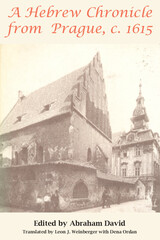 A Hebrew Chronicle from Prague, C. 1615
Abraham David
University of Alabama Press, 1993 Translated by Leon J. Weinberger with Dena Ordan "This slender anonymous work, spanning 1389 to 1611, presents the priorities and concerns of a Jewish community straddling the late medieval and early modern periods. Ample footnotes and explanations provide the lay reader with sufficient background to understand the references to historical events and figures, to ideologies and to institutions. A comprehensive introduction presents the realities of Prague and Bohemia, as well as offering a helpful discussion of the chronicle and other contemporary Jewish accounts."
—Conservative Jewish Quarterly
"In about 1615 an anonymous Jew from Prague composed a short Hebrew chronicle to recount 'the expulsions, miracles, and other occurrences befalling [the Jews] in Prague and the other lands of our long exile.' Abraham David discovered the manuscript [and] added glosses, historical notes, and an introduction. . . . The chronicle, with its brief annual entries, is not a continuous narrative, but does give a feeling of immediacy, like a newspaper."
—Polin: Studies in Polish Jewry
Hebrew for Biblical Interpretation
Arthur W. Walker-Jones
SBL Press, 2003 Hebrew for Biblical Interpretation teaches elementary Hebrew with a specific focus on the tasks of biblical exegesis. This innovative textbook combines the features of a traditional grammar with exercises in reading and interpreting the Hebrew Bible. Grammatical descriptions are clear, concise, and systematic, and vocabulary is introduced in descending order of frequency. All words occurring more than 100 times in the Hebrew Bible are taught, and attention to grammatical indicators reduces the need for rote memorization of paradigms. The integration of grammar and exegesis helps to motivate students and makes the textbook well-suited to seminary courses, while those who teach in university settings will find the textbook useful because the focus is on scholarly biblical exegesis, not theological interpretation.
 Hebrew Infusion: Language and Community at American Jewish Summer Camps
Sarah Bunin Benor, Jonathan B. Krasner, and Sharon Avni
Rutgers University Press, 2019 Winner of the 2020 National Jewish Book Award in Education and Jewish Identity
Each summer, tens of thousands of American Jews attend residential camps, where they may see Hebrew signs, sing and dance to Hebrew songs, and hear a camp-specific hybrid language register called Camp Hebraized English, as in: “Let’s hear some ruach (spirit) in this chadar ochel (dining hall)!” Using historical and sociolinguistic methods, this book explains how camp directors and staff came to infuse Hebrew in creative ways and how their rationales and practices have evolved from the early 20th century to today. Some Jewish leaders worry that Camp Hebraized English impedes Hebrew acquisition, while others recognize its power to strengthen campers’ bonds with Israel, Judaism, and the Jewish people. Hebrew Infusion explores these conflicting ideologies, showing how hybrid language can serve a formative role in fostering religious, diasporic communities. The insightful analysis and engaging descriptions of camp life will appeal to anyone interested in language, education, or American Jewish culture.
 Hebrew Law in Biblical Times
Ze'ev W. Falk
Brigham Young University Press, 2001 This book presents the scholar, historian, lawyer, and general student of the Bible with a highly readable and useful handbook. First published in Jerusalem in 1964, this concise yet knowledgeable treatise remains illuminating. Its skillful organization makes it the most accessible of all introductions to biblical law. Falk's research is grounded in historical, sociological, linguistic, and comparative data. His work yields interesting insights about technical legal terminology, vital social information behind the Israelite legal system, and broad perspectives on law among Israel s neighbors, the Babylonians, Assyrians, and Egyptians. Alongside its discussions of homicide, torts, property, contracts, slavery, and divorce, this book includes sections on law and religion, divine judgment, collective responsibility, blasphemy, and religious elements in biblical family law. These studies make it clear that Hebrew law in biblical times cannot be understood except as an integrated system of social institutions and religious values.
 The Hebrew Republic: Jewish Sources and the Transformation of European Political Thought
Eric Nelson
Harvard University Press, 2010 According to a commonplace narrative, the rise of modern political thought in the West resulted from secularization—the exclusion of religious arguments from political discourse. But in this pathbreaking work, Eric Nelson argues that this familiar story is wrong. Instead, he contends, political thought in early-modern Europe became less, not more, secular with time, and it was the Christian encounter with Hebrew sources that provoked this radical transformation.
During the sixteenth and seventeenth centuries, Christian scholars began to regard the Hebrew Bible as a political constitution designed by God for the children of Israel. Newly available rabbinic materials became authoritative guides to the institutions and practices of the perfect republic. This thinking resulted in a sweeping reorientation of political commitments. In the book’s central chapters, Nelson identifies three transformative claims introduced into European political theory by the Hebrew revival: the argument that republics are the only legitimate regimes; the idea that the state should coercively maintain an egalitarian distribution of property; and the belief that a godly republic would tolerate religious diversity. One major consequence of Nelson’s work is that the revolutionary politics of John Milton, James Harrington, and Thomas Hobbes appear in a brand-new light.
Nelson demonstrates that central features of modern political thought emerged from an attempt to emulate a constitution designed by God. This paradox, a reminder that while we may live in a secular age, we owe our politics to an age of religious fervor, in turn illuminates fault lines in contemporary political discourse.
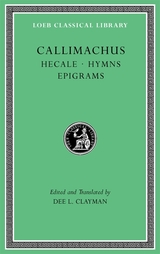 Hecale. Hymns. Epigrams
Callimachus
Harvard University Press, 2022 The premier scholar-poet of the Hellenistic age.
Callimachus (ca. 303–ca. 235 BC), a proud and well-born native of Cyrene in Libya, came as a young man to the court of the Ptolemies at Alexandria, where he composed poetry for the royal family; helped establish the Library and Museum as a world center of literature, science, and scholarship; and wrote an estimated 800 volumes of poetry and prose on an astounding variety of subjects, including the Pinakes, a descriptive bibliography of the Library’s holdings in 120 volumes. Callimachus’ vast learning richly informs his poetry, which ranges broadly and reworks the language and generic properties of his predecessors in inventive, refined, and expressive ways. The “Callimachean” style, combining learning, elegance, and innovation and prizing brevity, clarity, lightness, and charm, served as an important model for later poets, not least at Rome for Catullus, Virgil, Horace, Ovid, and the elegists, among others.
This edition, which replaces the earlier Loeb editions by A. W. Mair (1921) and C. A. Trypanis (1954, 1958), presents all that currently survives of and about Callimachus and his works, including the ancient commentaries (Diegeseis) and scholia. Volume I contains Aetia, Iambi, and lyric poems; Volume II Hecale, Hymns, and Epigrams; and Volume III miscellaneous epics and elegies, other fragments, and testimonia, together with concordances and a general index. The Greek text is based mainly on Pfeiffer’s but enriched by subsequently published papyri and the judgment of later editors, and its notes and annotation are fully informed by current scholarship.
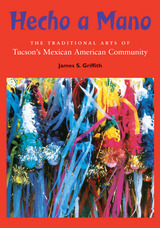 Hecho a Mano: The Traditional Arts of Tucson's Mexican American Community
James S. Griffith; Foreword by Patricia Preciado Martin
University of Arizona Press, 2000 Arts as intimate as a piece of needlework or a home altar. Arts as visible as decorative iron, murals, and low riders. Through such arts, members of Tucson's Mexican American community contribute much of the cultural flavor that defines the city to its residents and to the outside world. Now Tucson folklorist Jim Griffith celebrates these public and private artistic expressions and invites us to meet the people who create them. - Josefina Lizárraga learned to make paper flowers as a girl in her native state of Nayarit, Mexico, and ensures that this delicate art is not lost.
- Ornamental blacksmith William Flores runs the oldest blacksmithing business in town, a living link with an earlier Tucson.
- Ramona Franco's family has maintained an elaborate altar to Our Lady of Guadalupe for three generations.
- Signmaker Paul Lira, responsible for many of Tucson's most interesting signs, brings to his work a thoroughly mexicano sense of aesthetics and humor.
- Muralists David Tineo and Luis Mena proclaim Mexican cultural identity in their work and carry on a tradition that has blossomed in the last twenty years.
Featuring a foreword by Tucson author Patricia Preciado Martin and a spectacular gallery of photographs, many by Pulitzer prize-winning photographer José Galvez, this remarkable book offers a close-up view of a community rich with tradition and diverse artistic expression. Hecho a Mano is a piñata bursting with unexpected treasures that will inspire and inform anyone with an interest in folk art or Mexican American culture.
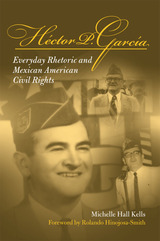 Hector P Garcia: Everyday Rhetoric and Mexican American Civil Rights
Michelle Hall Kells. Foreword by Rolando Hinojosa-Smith
Southern Illinois University Press, 2006 Examining the Mexican American civil rights movement through the public rhetoric of a veteran activist Héctor P. García: Everyday Rhetoric and Mexican American Civil Rights examines the transition of Mexican Americans from political and social marginalization to civic inclusion after World War II. Focusing on the public rhetoric of veteran rights activist and physician Dr. Héctor P. García, a Mexican immigrant who achieved unprecedented influence within the U.S. political system, author Michelle Hall Kells provides an important case study in the exercise of influence, the formation of civic identity, and the acquisition of social power among this underrepresented group. As a major influence in national twentieth-century civil rights reform, García effectively operated between Anglo and Mexican American sociopolitical structures. The volume illustrates how García, a decorated World War II veteran and founder of the American GI Forum in Texas in 1948, successfully engendered a discourse that crossed geographical, political, and cultural borders, forming associations with the working poor as well as with prominent national figures such as John F. Kennedy and Lyndon B. Johnson. Through his rhetoric and action, García publicly revealed the plight of Mexican Americans, crossing class, regional, and racial lines to improve socioeconomic conditions for his people. Héctor P. García, which is enhanced by sixteen illustrations, contributes to rhetorical, cultural, and historical studies and offers new scholarship establishing García’s role on the national front, effectively tracing Garcia’s legacy of resistance, the process of achieving enfranchisement, and the role of racism in the evolution from social marginalization to national influence.
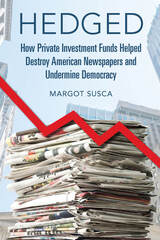 Hedged: How Private Investment Funds Helped Destroy American Newspapers and Undermine Democracy
Margot Susca
University of Illinois Press, 2024 The untold history of an American catastrophe The ultrawealthy largely own and guide the newspaper system in the United States. Through entities like hedge funds and private equity firms, this investor class continues to dismantle the one institution meant to give voice to average citizens in a democracy. Margot Susca reveals the little-known history of how private investment took over the newspaper industry. Drawing on a political economy of media, Susca’s analysis uses in-depth interviews and documentary evidence to examine issues surrounding ownership and power. Susca also traces the scorched-earth policies of layoffs, debt, cash-outs, and wholesale newspaper closings left behind by private investors and the effects of the devastation on the future of news and information. Throughout, Susca reveals an industry rocked less by external forces like lost ad revenue and more by ownership and management obsessed with profit and beholden to private fund interests that feel no responsibility toward journalism or the public it is meant to serve.
Hedstroms and the Bethel Ship Saga: Methodist Influence on Swedish Religious Life
Henry C. Whyman. Foreword by Kenneth E. Rowe
Southern Illinois University Press, 1992 The first book-length biographical treatment of Olof Gustaf Hedstrom and his brother Jonas documents their work in spreading Methodism among Swedish immigrants to America. Henry C. Whyman discusses the Bethel Ship Saga, a ministry unique in American immigrant history, and examines the larger picture of the role of religion in nineteenth-century European immigration to the United States. The Bethel Ship, a floating chapel in New York Harbor, was the vehicle and headquarters for an effective ministry to immigrants arriving in America. Olof Hedstrom, a Methodist minister serving in the Catskill Mountain area, was called to New York to organize and lead this endeavor.
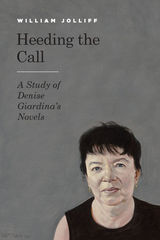 Heeding the Call: A Study of Denise Giardina's Novels
William Jolliff
West Virginia University Press, 2020 In Heeding the Call, William Jolliff offers the first book-length discussion of West Virginia writer and activist Denise Giardina, perhaps best known for her novel Storming Heaven, which helped spark renewed interest in the turn-of-the-century Mine Wars. Jolliff proposes that Giardina’s fiction be considered under three thematic complexes: regional, political, and theological. Though addressing all three, Heeding the Call foregrounds the theological because it is the least accessible to most readers and critics.
In chapters devoted to each of Giardina’s novels, Jolliff attends to her uses of history, her formal techniques, and the central themes that make each work significant. What becomes clear is that while the author’s religious beliefs inform her fiction, she never offers easy answers. Her narratives consistently push her characters—and her readers—into more challenging and meaningful questions. Jolliff concludes by arguing that although Giardina’s initial fame has been tied to her significance as an Appalachian novelist, future studies must look beyond the regional to the deeply human questions her novels so persistently engage.
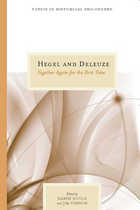 Hegel and Deleuze: Together Again for the First Time
Karen Houle
Northwestern University Press, 2013 Hegel and Deleuze cannily examines the various resonances and dissonances between these two major philosophers. The collection represents the best in contemporary international scholarship on G. W. F. Hegel and Gilles Deleuze, and the contributing authors inhabit the as-yet uncharted space between the two thinkers, collectively addressing most of the major tensions and resonances between their ideas and laying a solid ground for future scholarship.
The essays are organized thematically into two groups: those that maintain a firm but nuanced disjunction or opposition between Hegel and Deleuze, and those that chart possible connections, syntheses, or both. As is clear from this range of texts, the challenges involved in grasping, appraising, appropriating, and developing the systems of Deleuze and Hegel are varied and immense. While neither Hegel nor Deleuze gets the last word, the contributors ably demonstrate that partisans of either can no longer ignore the voice of the other.
 Hegel and Skepticism
Michael N. Forster
Harvard University Press, 1989 The rejection by Anglo-Saxon philosophers of much "continental philosophy" (from Hegel on down) is largely based on the perceived failure of continental thinkers to grapple with the tough questions of epistemology in general and skepticism in particular. Forster demonstrates that Hegel did not in fact ignore epistemology, but on the contrary he fought a tireless and subtle campaign to defeat the threat of skepticism. Forster's work should dispel once and for all the view that Hegel was naive or careless in epistemological matters.
Forster begins by discussing Hegel's critical interpretation of the skeptical tradition, in particular his convincingly argued case for the superiority of ancient over modern skepticism. He goes on to show that the difficulties characteristic of ancient skepticism play a crucial and fascinating role in Hegel's philosophy of history. Hegel sees in the emergence of these difficulties an explanation of why the harmonious unified Greek culture collapsed and was replaced by the division and alienation characteristic of subsequent western culture. Finally, Forster examines the elaborate and ingenious system of defenses erected by Hegel to protect his philosophical thought against skeptical difficulties, as the core of a somewhat broader epistemological project. Along the way, Forster makes much that has hither to remained obscure in Hegel's texts intelligible for the first time. This book should cause a re-evaluation of Hegel, and German Idealism generally, and contribute to a re-evaluation of the skeptical tradition in philosophy.
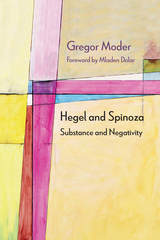 Hegel and Spinoza: Substance and Negativity
Gregor Moder, with a foreword by Mladen Dolar
Northwestern University Press, 2017 Gregor Moder’s Hegel and Spinoza: Substance and Negativity is a lively entry into current debates concerning Hegel, Spinoza, and their relation. Hegel and Spinoza are two of the most influential philosophers of the modern era, and the traditions of thought they inaugurated have been in continuous dialogue and conflict ever since Hegel first criticized Spinoza. Notably, eighteenth- and nineteenth-century German Idealists aimed to overcome the determinism of Spinoza’s system by securing a place for the freedom of the subject within it, and twentieth-century French materialists such as Althusser and Deleuze rallied behind Spinoza as the ultimate champion of anti-Hegelian materialism. This conflict, or mutual rejection, lives on today in recent discussions about materialism. Contemporary thinkers either make a Hegelian case for the productiveness of concepts of the negative, nothingness, and death, or in a way that is inspired by Spinoza they abolish the concepts of the subject and negation and argue for pure affirmation and the vitalistic production of differences.
Hegel and Spinoza traces the historical roots of these alternatives and shows how contemporary discussions between Heideggerians and Althusserians, Lacanians and Deleuzians are a variation of the disagreement between Hegel and Spinoza. Throughout, Moder persuasively demonstrates that the best way to read Hegel and Spinoza is not in opposition or contrast but together: as Hegel and Spinoza.
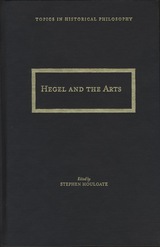 Hegel and the Arts
Stephen Houlgate
Northwestern University Press, 2007 That aesthetics is central to Hegel's philosophical enterprise is not widely acknowledged, nor has his significant contribution to the discipline been truly appreciated. Some may be familiar with his theory of tragedy and his (supposed) doctrine of the "end of art," but many philosophers and writers on art pay little or no attention to his lectures on aesthetics. The essays in this collection, all but one written specifically for this volume, aim to raise the profile of Hegel's aesthetic theory by showing in detail precisely why that theory is so powerful. Writing from various perspectives and not necessarily aligned with Hegel's position, the contributors demonstrate that Hegel's lectures on aesthetics constitute one of the richest reservoirs of ideas about the arts, their history, and their future that we possess.
Addressing a range of important topics, the essays examine the conceptual bases of Hegel's organization of his aesthetics, his treatment of various specific arts (architecture, sculpture, painting, music, and tragedy), and several of the most famous issues in the literature--including the "end of art" thesis, the relation between art and religion, and the vexed relationship between Hegel and the romantics. Together they shed light on the profound reflections on art contained in Hegel's philosophy and also suggest ways in which his aesthetics might resonate well beyond the field of philosophical aesthetics, perhaps beyond philosophy itself.
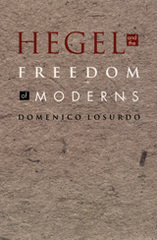 Hegel and the Freedom of Moderns
Domenico Losurdo
Duke University Press, 2004 Available in English for the first time, Hegel and the Freedom of Moderns revives discussion of the major political and philosophical tenets underlying contemporary liberalism through a revolutionary interpretation of G. W. F. Hegel’s thought. Domenico Losurdo, one of the world’s leading Hegelians, reveals that the philosopher was fully engaged with the political controversies of his time. In so doing, he shows how the issues addressed by Hegel in the nineteenth century resonate with many of the central political concerns of today, among them questions of community, nation, liberalism, and freedom. Based on an examination of Hegel’s entire corpus—including manuscripts, lecture notes, different versions of texts, and letters—Losurdo locates the philosopher’s works within the historical contexts and political situations in which they were composed. Hegel and the Freedom of Moderns persuasively argues that the tug of war between “conservative” and “liberal” interpretations of Hegel has obscured and distorted the most important aspects of his political thought. Losurdo unravels this misleading dualism and provides an illuminating discussion of the relation between Hegel’s political philosophy and the thinking of Karl Marx and Friedrich Engels. He also discusses Hegel’s ideas in relation to the pertinent writings of other major figures of modern political philosophy such as Jean-Jacques Rousseau, John Locke, Edmund Burke, John Stuart Mill, Jeremy Bentham, Karl Popper, Norberto Bobbio, and Friedrich Hayek.
Hegel and the Problem of Multiplicity
Andrew Haas
Northwestern University Press, 2000 At the center of Hegel and the Problem of Multiplicity is the question: what could the term "multiplicity" mean for philosophy? Andrew Haas contends that most contemporary philosophical understandings of multiplicity are either Aristotelian or Kantian and that these approaches have solidified into a philosophy guided by categories of identity and different—categories to which multiplicity as such cannot be reduced. The Hegelian conception of multiplicity, Haas suggests, is opposed to both categories—or, in fact, supersedes them. To come to terms with this critique, Haas undertakes a rigorous, technical analysis of Hegel's Science of Logic. The result is a reading of the concept of multiplicity as multiple, that is, as multiplicities.
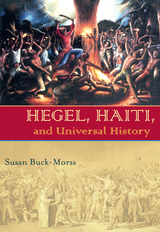 Hegel, Haiti, and Universal History
Susan Buck-Morss
University of Pittsburgh Press, 2009 In this path-breaking work, Susan Buck-Morss draws new connections between history, inequality, social conflict, and human emancipation. Hegel, Haiti, and Universal History offers a fundamental reinterpretation of Hegel's master-slave dialectic and points to a way forward to free critical theoretical practice from the prison-house of its own debates.
Historicizing the thought of Georg Wilhelm Friedrich Hegel and the actions taken in the Haitian Revolution, Buck-Morss examines the startling connections between the two and challenges us to widen the boundaries of our historical imagination. She finds that it is in the discontinuities of historical flow, the edges of human experience, and the unexpected linkages between cultures that the possibility to transcend limits is discovered. It is these flashes of clarity that open the potential for understanding in spite of cultural differences. What Buck-Morss proposes amounts to a “new humanism,” one that goes beyond the usual ideological implications of such a phrase to embrace a radical neutrality that insists on the permeability of the space between opposing sides and as it reaches for a common humanity.
Hegel, Heidegger, and the Ground of History
Michael Allen Gillespie
University of Chicago Press, 1984 In this wide-ranging and thoughtful study, Michael Allen Gillespie explores the philosophical foundation, or ground, of the concept of history. Analyzing the historical conflict between human nature and freedom, he centers his discussion on Hegel and Heidegger but also draws on the pertinent thought of other philosophers whose contributions to the debate is crucial—particularly Rousseau, Kant, and Nietzsche.
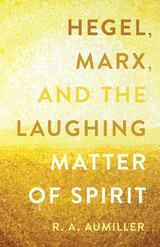 Hegel, Marx, and the Laughing Matter of Spirit
R. A. Aumiller
Northwestern University Press, 2026 Excavating the comedic crack in historical repetitions
What happens when those who have been denied political subjectivity fully play out their negative role in a historical drama that damned them from the beginning? Hegel, Marx, and the Laughing Matter of Spirit locates the eruption of revolutionary laughter in historical cracks across nineteenth- and twentieth-century Europe, where exiled philosophers, partisan fighters, and artists framed their political resistance as a historical comedy. Hegelian comedy fuels the Young Hegelian critique of Prussian censorship, Walter Benjamin’s staging of the anti-fascist resistance, and the Yugoslavian partisan attempt to begin again in fascism’s aftermath. Revolution erupts from a historical stage that can no longer look on its own contradictions with a straight face. Drawing on the defiant spirit of comedy, this Hegelian feminist manifesto defies political despair, overturning the perception that history tragically repeats itself. Invoking the phrase “Nothing changes” as a mantra, R. A. Aumiller turns a concession of defeat into a battle cry for political resistance.
Hegel Myths and Legends
Jon Stewart
Northwestern University Press, 1996 For many years, scholars in German idealism have known that a number of the views of Hegel rife in the Anglo-Saxon world are highly inaccurate. The essays collected in The Hegel Myths and Legends disabuse students and nonspecialists of these misconceptions by exposing the myths for what they are.
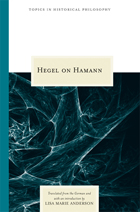 Hegel on Hamann
G. W. F. Hegel
Northwestern University Press, 2008 In 1828, G. W. F. Hegel published a critical review of Johann George Hamann, a retrospective of the life and works of one of Germany's most enigmatic and challenging thinkers and writers. While Hegel's review had enjoyed a central place in Hamann studies since its appearance, Hegel on Hamann is the first English translation of the important work. Philosophers, theologians, and literary critics welcome Anderson's stunning translation since Hamann is gaining renewed attention, not only as a key figure of German intellectual history, but also as an early forerunner of postmodern thought. Relationships between Enlightenment, Counter Enlightenment, and Idealism come to the fore as Hegel reflects on Hamann's critiques of his contemporaries Immanuel Kant, Moses Mendelssohn, J. G. Herder, and F. H. Jacobi. Hegel on Hamann also includes an introduction to Hegel's review, as well as an essay on the role of friendship in Hamann's life, in Hegel's thought, and in German intellectual culture more broadly. Rounding out the volume are its extensive annotations and bibliography, which facilitate further study of eighteenth- and nineteenth-century philosophy in English and German. This book is essential both for readers of Hegel or Hamann and for those interested in the history of German thought, the philosophy of religion, language and hermeneutics, or friendship as a philosophical category.
Hegel on Political Identity: Patriotism, Nationality, Cosmopolitanism
Lydia L. Moland
Northwestern University Press, 2012 In Hegel on Political Identity, Lydia Moland provocatively draws on Hegel's political philosophy to engage sometimes contentious contemporary issues such as patriotism, national identity, and cosmopolitanism. Moland argues that patriotism for Hegel indicates an attitude toward the state, whereas national identity is a response to culture. The two combine, Hegel claims, to enable citizens to develop concrete freedom. Moland argues that Hegel's account of political identity extends to his notorious theory of world history; she also proposes that his resistance to cosmopolitanism be reassessed in response to our globalized world. By focusing on Hegel's depiction of political identity as a central part of modern life, Moland shows the potential of Hegel's philosophy to address issues that lie at the heart of ethical and political philosophy.
 Hegel or Spinoza
Pierre Macherey
University of Minnesota Press, 2011 Hegel or Spinoza is the first English-language translation of the modern classic Hegel ou Spinoza. Published in French in 1979, it has been widely influential, particularly in the work of the philosophers Alain Badiou, Antonio Negri, and Gilles Deleuze. Hegel or Spinoza is a surgically precise interrogation of the points of misreading of Spinoza by Hegel. Pierre Macherey explains the necessity of Hegel’s misreading in the kernel of thought that is “indigestible” for Hegel, which makes the Spinozist system move in a way that Hegel cannot grasp. In doing so, Macherey exposes the limited and situated truth of Hegel’s perspective—which reveals more about Hegel himself than about his object of analysis. Against Hegel’s characterization of Spinoza’s work as immobile, Macherey offers a lively alternative that upsets the accepted historical progression of philosophical knowledge. He finds in Spinoza an immanent philosophy that is not subordinated to the guarantee of an a priori truth. Not simply authorizing a particular reading—a “good” Spinoza against a “bad” Hegel—Hegel or Spinoza initiates an encounter that produces a new understanding, a common truth that emerges in the interval that separates the two.
Hegel: Texts and Commentary
Walter Kaufmann
University of Notre Dame Press, 1977 Herbert Marcuse called the preface to Hegel's Phenomenology "one of the greatest philosophical undertakings of all times." This summary of Hegel's system of philosophy is now available in English translation with commentary on facing pages. While remaining faithful to the author's meaning, the translator has removed many encumbrances inherent in Hegel's style.
"[Kaufmann's] lengthy commentary is a minor masterpiece of concise and erudite interpretation. This is a welcome departure from the lazy habit of pretending that Hegel was an obscure pedant who left some quite readable lectures on the philosophy of history. . . . To grasp what Hegel was really trying to do, one has to confront his metaphysics, and thanks to Kaufmann this an now be done even by the philosophical novice." —The New York Review of Books
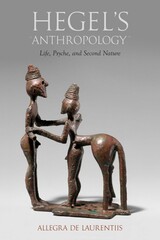 Hegel’s Anthropology: Life, Psyche, and Second Nature
Allegra de Laurentiis
Northwestern University Press, 2021 This book provides a critical analysis of Hegel’s Anthropology, a long-neglected treatise dedicated to the psyche, or “soul,” that bridges Hegel’s philosophy of organic nature with his philosophy of subjective spirit. Allegra de Laurentiis recuperates this overlooked text, guiding readers through its essential arguments and ideas. She shows how Hegel conceives of the “sublation” of natural motion, first into animal sentience and then into the felt presentiment of selfhood, all the way to the threshold of self-reflexive thinking. She discusses the Anthropology in the context of Hegel’s mature system of philosophy (the Encyclopaedia) while also exposing some of the scientific and philosophical sources of his conceptions of unconscious states, psychosomatism, mental pathologies, skill formation, memorization, bodily habituation, and the self-conditioning capacities of our species. This treatise on the becoming of anthropos, she argues, displays the power and limitations of Hegel’s idealistic “philosophy of the real” in connecting such phenomena as erect posture, a discriminating hand, and the forward gaze to the emergence of the human ego, or the structural disintegration of the social world to the derangement of the individual mind.
A groundbreaking contribution to scholarship on Hegel and nineteenth-century philosophy, this book shows that the Anthropology is essential to understanding Hegel’s concept of spirit, not only in its connection with nature but also in its more sophisticated realizations as objective and absolute spirit. Future scholarship on this subject will recount—and build upon—de Laurentiis’s innovative study.
Hegel's Critique of Liberalism: Rights in Context
Steven B. Smith
University of Chicago Press, 1989 In Hegel's Critique of Liberalism, Steven B. Smith examines Hegel's critique of rights-based liberalism and its relevance to contemporary political concerns. Smith argues that Hegel reformulated classic liberalism, preserving what was of value while rendering it more attentive to the dynamics of human history and the developmental structure of the moral personality. Hegel's goal, Smith suggests, was to find a way of incorporating both the ancient emphasis on the dignity and even architectonic character of political life with the modern concern for freedom, rights, and mutual recognition. Smith's insightful analysis reveals Hegel's relevance not only to contemporary political philosophers concerned with normative issues of liberal theory but also to political scientists who have urged a revival of the state as a central concept of political inquiry.
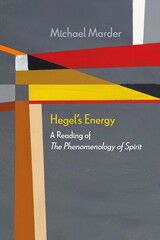 Hegel's Energy: A Reading of The Phenomenology of Spirit
Michael Marder
Northwestern University Press, 2021 Hegel’s The Phenomenology of Spirit has been one of the most important works of philosophy since the nineteenth century, while the question of energy has been crucial to life in the twenty-first century. In this book, Michael Marder integrates the two, narrating a story about the trials and tribulations of energy embedded in Hegel’s dialectics. Through an original interpretation of actuality (Wirklichkeit) as energy in the Hegelian corpus, the book provides an exciting lens for understanding the dialectical project and the energy‑starved condition of our contemporaneity. To elaborate this theory, Marder undertakes a meticulous rereading of major parts of the Phenomenology, where the energy deficit of mere consciousness gives way to the energy surplus of self‑consciousness and its self‑delimitation in the domain of reason. In so doing, he denounces the current understanding of energy as pure potentiality, linking this mindset to pollution, profit-driven economies, and environmental crises. Surprising and deeply engaged with its contemporary implications, this book doesn’t simply illuminate aspects of The Phenomenology of Spirit—it provides an entirely new understanding of Hegel’s ideas.
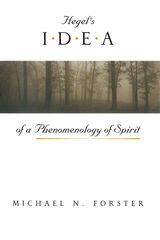 Hegel's Idea of a Phenomenology of Spirit
Michael N. Forster
University of Chicago Press, 1998 Hegel's Phenomenology of Spirit has acquired a paradoxical reputation as one the most important and most impenetrable and inconsistent philosophical works. In Hegel's Idea of a Phenomenology of Spirit, Michael N. Forster advances an original reading of the work. His approach differs from that of previous scholars in two crucial ways: he reads the work, first, as a whole—not piecemeal, as it has usually been analyzed—and second, within the context of Hegel's broader corpus and the works of other philosophers.
The Phenomenology of Spirit emerges as an extraordinarily coherent work with a rich array of important and original ideas. These include a diagnosis of the ills of modernity in terms of its commitment to a series of dualisms, and a project for overcoming them; a sweeping naturalism; a deep rethinking of and response to problems of skepticism; subtle arguments for social theories of meaning and truth; and ideas based on the insight that human thought changes in fundamental ways over the course of history. Forster's unique and compelling reading unlocks the mysteries of Hegel's seminal work.
Hegel's Logic: Between Dialectic and History
Clark Butler
Northwestern University Press, 2011 Clark Butler presents an innovative analysis of Hegel's most challenging work in Hegel's Logic—the first major English-language treatment of Hegel's Science of Logic to appear in nearly fifteen years. Although earlier commentators on the Logic have considered standard analytical philosophy-and with it modern logic-in opposition to Hegel. Butler views it as a legitimate approach in terms of which Hegel needs to be understood. This interpretation allows him to address the rigor of Hegel's thought on several levels as at once an exercise in purely conceptual redefinition and a full-bodied work in metaphysical ontology and even theology. The result is an account of the Logic intelligible to analytical philosophers as well as non-specialists.
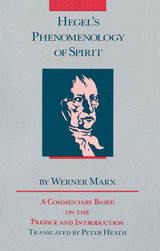 Hegel's Phenomenology of Spirit: A Commentary Based on the Preface and Introduction
Werner Marx
University of Chicago Press, 1988 Hegel's classic Phenomenology of Spirit is considered by many to be the most difficult text in all of philosophical literature. In interpreting the work, scholars have often used the Phenomenology to justify the ideology that has tempered their approach to it, whether existential, ontological, or, particularly, Marxist. Werner Marx deftly avoids this trap of misinterpretation by rendering lucid the objectives that Hegel delineates in the Preface and Introduction and using these to examine the whole of the Phenomenology. Marx considers selected materials from Hegel's text in order both to clarify Hegel's own view of it and to set the stage for an examination of post-Hegelian philosophy.
The primary focus of Marx's book is on the account. Hegel gives of the phenomenological journey from natural consciousness to philosophical wisdom (or absolute knowledge, as Hegel calls it). In showing that Hegel's many statements concerning consciousness 'finding itself' or 'knowing itself' in its world can be understood as discovering the rationality of the conditioning world, Marx offers a solution to several sets of interrelated problems that have troubled students of Hegel. His book contains valuable analyses of the relation between Hegel's thought and that of Descartes and Kant as well as that of Karl Marx, and it also sheds considerable light on the question of the internal unity or coherence of the Phenomenology.
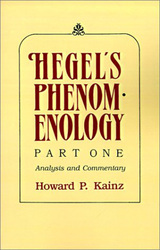 Hegel's Phenomenology, Part 1: Analysis and Commentary
Howard P. Kainz
Ohio University Press, 1976 The publication in 1807 of Georg Wilhelm Frederich Hegel's Phanomenologie des Geistes (translated alternately as Phenomenology of the Mind or Phenomenology of the Spirit) marked the beginning of the modern era in philosophy. Hegel's remarkable insights formed the basis for what eventually became the Existentialist movement. Yet the Phenomenology remains one of the most difficult and forbidding works in the canon of philosophical literature. Hegel's Phenomenology, Part One: Analysis and Commentary by Howard P. Kainz is a coherent and readable key to understanding Hegel.
Kainz provides an accessible entry into the complexities of Hegelian thought by asking a series of questions about such matters as the literary form of the Phenomenology, its "plot," its relation to the "system," its subject matter, the problem of objectivity, dialectical necessity, the concept of "experience," and the Hegelian concept of consciousness. Building of the work of previous commentators, and presenting the work of these commentators in a clear and unbiased manner, Kainz offers an analysis that will be helpful both to experienced Hegelian scholars and to those readers preparing to approach the large and bewildering territory of the Phenomenology for the first time.
Hegel’s Phenomenology, Part 2: The Evolution of Ethical and Religious Consciousness to the Absolute Standpoint
Howard P. Kainz
Ohio University Press, 1983 The publication in 1807 of Georg Wilhelm Frederich Hegel’s Phanomenologie des Geistes (translated alternately as “Phenomenology of Mind” or “Phenomenology of Spirit”) marked the beginning of the modern era in philosophy. Hegel’s remarkable insights formed the basis for what eventually became the Existentialist movement. Yet the Phenomenology remains one of the most difficult and forbidding works in the canon of philosophical literature.
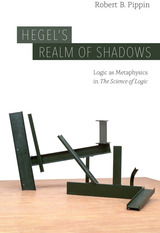 Hegel's Realm of Shadows: Logic as Metaphysics in “The Science of Logic”
Robert B. Pippin
University of Chicago Press, 2018 Hegel frequently claimed that the heart of his entire system was a book widely regarded as among the most difficult in the history of philosophy, The Science of Logic. This is the book that presents his metaphysics, an enterprise that he insists can only be properly understood as a “logic,” or a “science of pure thinking.” Since he also wrote that the proper object of any such logic is pure thinking itself, it has always been unclear in just what sense such a science could be a “metaphysics.”
Robert B. Pippin offers here a bold, original interpretation of Hegel’s claim that only now, after Kant’s critical breakthrough in philosophy, can we understand how logic can be a metaphysics. Pippin addresses Hegel’s deep, constant reliance on Aristotle’s conception of metaphysics, the difference between Hegel’s project and modern rationalist metaphysics, and the links between the “logic as metaphysics” claim and modern developments in the philosophy of logic. Pippin goes on to explore many other facets of Hegel’s thought, including the significance for a philosophical logic of the self-conscious character of thought, the dynamism of reason in Kant and Hegel, life as a logical category, and what Hegel might mean by the unity of the idea of the true and the idea of the good in the “Absolute Idea.” The culmination of Pippin’s work on Hegel and German idealism, this is a book that no Hegel scholar or historian of philosophy will want to miss.
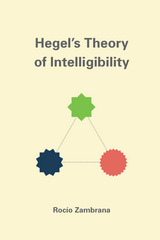 Hegel's Theory of Intelligibility
Rocío Zambrana
University of Chicago Press, 2015 Hegel’s Theory of Intelligibility picks up on recent revisionist readings of Hegel to offer a productive new interpretation of his notoriously difficult work, the Science of Logic. Rocío Zambrana transforms the revisionist tradition by distilling the theory of normativity that Hegel elaborates in the Science of Logic within the context of his signature treatment of negativity, unveiling how both features of his system of thought operate on his theory of intelligibility.
Zambrana clarifies crucial features of Hegel’s theory of normativity previously thought to be absent from the argument of the Science of Logic—what she calls normative precariousness and normative ambivalence. She shows that Hegel’s theory of determinacy views intelligibility as both precarious, the result of practices and institutions that gain and lose authority throughout history, and ambivalent, accommodating opposite meanings and valences even when enjoying normative authority. In this way, Zambrana shows that the Science of Logic provides the philosophical justification for the necessary historicity of intelligibility. Intervening in several recent developments in the study of Kant, Hegel, and German Idealism more broadly, this book provides a productive new understanding of the value of Hegel’s systematic ambitions.
Hegel’s Theory of Normativity: The Systematic Foundations of the Philosophical Science of Right
Kevin Thompson
Northwestern University Press, 2019 Hegel’s Elements of the Philosophy of Right offers an innovative and important account of normativity, yet the theory set forth there rests on philosophical foundations that have remained largely obscure. In Hegel’s Theory of Normativity, Kevin Thompson proposes an interpretation of the foundations that underlie Hegel’s theory: its method of justification, its concept of freedom, and its account of right. Thompson shows how the systematic character of Hegel’s project together with the metaphysical commitments that follow from its method are essential to secure this theory against the challenges of skepticism and to understand its distinctive contribution to questions regarding normative justification, practical agency, social ontology, and the nature of critique.
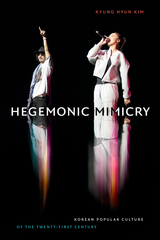 Hegemonic Mimicry: Korean Popular Culture of the Twenty-First Century
Kyung Hyun Kim
Duke University Press, 2021 In Hegemonic Mimicry, Kyung Hyun Kim considers the recent global success of Korean popular culture—the Korean wave of pop music, cinema, and television, which is also known as hallyu—from a transnational and transcultural perspective. Using the concept of mimicry to think through hallyu's adaptation of American sensibilities and genres, he shows how the commercialization of Korean popular culture has upended the familiar dynamic of major-to-minor cultural influence, enabling hallyu to become a dominant global cultural phenomenon. At the same time, its worldwide popularity has rendered its Koreanness opaque. Kim argues that Korean cultural subjectivity over the past two decades is one steeped in ethnic rather than national identity. Explaining how South Korea leaped over the linguistic and cultural walls surrounding a supposedly “minor” culture to achieve global ascendance, Kim positions K-pop, Korean cinema and television serials, and even electronics as transformative acts of reappropriation that have created a hegemonic global ethnic identity.
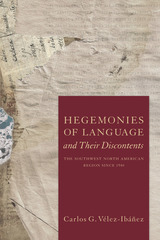 Hegemonies of Language and Their Discontents: The Southwest North American Region Since 1540
Carlos G. Vélez-Ibáñez
University of Arizona Press, 2017 Spanish and English have fought a centuries-long battle for linguistic dominance in the Southwest North American Region. Covering the time period of 1540 to the present, Hegemonies of Language and Their Discontents provides a deep and broad understanding of the contradictory methods of establishing language supremacy in this U.S.-Mexico transborder region and the manner in which those affected have responded and acted, often in dissatisfaction and at times with inventive adaptations.
Well-regarded author Carlos G. Vélez-Ibáñez details the linguistic and cultural processes used by penetrating imperial and national states. He argues that these impositions have been not linear but hydra-headed, complex and contradictory, sometimes accommodated and sometimes forcefully imposed. Such impositions have created discontent resulting in physical and linguistic revolts, translanguage versions, and multilayered capacities of use and misuse of imposed languages—even the invention of community-created trilingual dictionaries.
Vélez-Ibáñez gives particular attention to both sides of the border, explaining the consequences of the fragile splitting of the area through geopolitical border formation. He illustrates the many ways those discontents have manifested in linguistic, cultural, educational, political, and legal forms.
From revolt to revitalization, from silent objection to expressive defiance, people in the Southwest North American Region have developed arcs of discontent from the Spanish colonial period to the present. These narratives are supported by multiple sources, including original Spanish colonial documents and new and original ethnographic studies of performance rituals like the matachines of New Mexico. This unique work discusses the most recent neurobiological studies of bilingualism and their implications for cognitive development and language as it spans multiple disciplines. Finally, it provides the most important models for dual language development and their integration to the "Funds of Knowledge" concept as creative contemporary discontents with monolingual approaches.
Hegemony And Power: On the Relation between Gramsci and Machiavelli
Benedetto Fontana
University of Minnesota Press, 1993 Presents a comparative and textual exploration of Gramsci's interpretation of Machiavelli's political analyses. This valuable contribution to our understanding of Gramsci includes a comparison of the major Machiavellian ideas such as the nature of political knowledge, the new principality, the concept of the people, and the relation between thought and action, to Gramsci's concepts of hegemony, moral and intellectual reform, and the collective will.
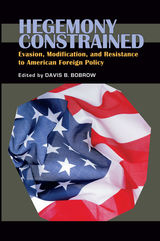 Hegemony Constrained: Evasion, Modification, and Resistance to American Foreign Policy
Davis B. Bobrow
University of Pittsburgh Press, 2008 In the post-cold war era, the United States has risen to a position of unprecedented dominance in the world and has often pursued a primarily unilateral approach to international policy issues. Hegemony Constrained examines how nations, ethnic and religious groups, and international organizations cope with American hegemony. The chapters reveal the various ways in which foreign actors attempt and sometimes succeed in keeping official Washington from achieving its preferred outcomes.
An international group of contributors considers how and why a variety of foreigners act strategically to avoid, delay, or change American policy with respect to a broad range of issues in world affairs. Individual chapters analyze the Kurds and Shia in Iraq; the governments of China, Japan, Turkey, and Germany; the G-7; liberalizing the international economy; coping with global warming; regulating harmful tax competition; controlling missile proliferation; limiting public health damage from tobacco; and international public opinion bearing on the politics of responding to a hegemonic America.
By recognizing and illustrating moves that challenge American unilateralism, Hegemony Constrained provides a framework for understanding and anticipating the goals, motives, and means others in the world bring to their dealings with American hegemony in specific situations. Thus, it offers a corrective to naively optimistic unilateralism and naively optimistic multilateralism.
Hegemony: The New Shape Of Global Power
John Agnew
Temple University Press, 2005 Hegemony tells the story of the drive to create consumer capitalism abroad through political pressure and the promise of goods for mass consumption. In contrast to the recent literature on America as empire, it explains that the primary goal of the foreign and economic policies of the United States is a world which increasingly reflects the American way of doing business, not the formation or management of an empire. Contextualizing both the Iraq war and recent plant closings in the U.S., noted author John Agnew shows how American hegemony has created a world in which power is no longer only shaped territorially. He argues in a sobering conclusion that we are consequently entering a new era of global power, one in which the world the US has made no longer works to its singular advantage.
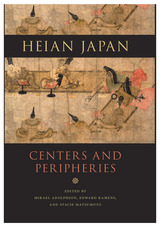 Heian Japan, Centers and Peripheries
edited by Mikael S. Adolphson, Edward Kamens, and Stacie Matsumoto
University of Hawaii Press, 2007 The first three centuries of the Heian period (794–1086) saw some of its most fertile innovations and epochal achievements in Japanese literature and the arts. It was also a time of important transitions in the spheres of religion and politics, as aristocratic authority was consolidated in Kyoto, powerful court factions and religious institutions emerged, and adjustments were made in the Chinese-style system of ruler-ship. At the same time, the era’s leaders faced serious challenges from the provinces that called into question the primacy and efficiency of the governmental system and tested the social/cultural status quo. Heian Japan, Centers and Peripheries, the first book of its kind to examine the early Heian from a wide variety of multidisciplinary perspectives, offers a fresh look at these seemingly contradictory trends.
Essays by fourteen leading American, European, and Japanese scholars of art history, history, literature, and religions take up core texts and iconic images, cultural achievements and social crises, and the ever-fascinating patterns and puzzles of the time. The authors tackle some of Heian Japan’s most enduring paradigms as well as hitherto unexplored problems in search of new ways of understanding the currents of change as well as the processes of institutionalization that shaped the Heian scene, defined the contours of its legacies, and make it one of the most intensely studied periods of the Japanese past.
 Heidegger and Marx: A Productive Dialogue over the Language of Humanism
Laurence Paul Hemming
Northwestern University Press, 2013 Martin Heidegger and Karl Marx remain two of the most influential thinkers in philosophy, in political science and other social sciences, and in the humanities. Yet there has never been a full-length study in English of the relationship between their ideas, and there has only been one study in German (from 1966). A Productive Dialogue fills this gap and contradicts the widely held assumption that Heidegger had no significant engagement with Marx. Hemming focuses on four related areas of inquiry—Heidegger’s reading of Marx; Marx’s relation to G. W. F. Hegel; Heidegger’s disastrous political involvement with National Socialism; and the significance of Hegel, Marx, Heidegger, and Friedrich Nietzsche for the politics of the twentieth and twenty-first centuries. A Productive Dialogue explores the understanding of political processes, systems, and behavior that animates both thinkers.
 Heidegger And Nazism
Victor Farias
Temple University Press, 1991 Originally published in a French translation in 1987, this controversial work has received a tumultuous reception throughout Europe and continues to be the object of intense debate. In this first English edition, Victor Farias tracks the career of Martin Heidegger—one of the most influential figures in twentieth-century philosophy—and documents his intimate involvement with Nazism for much of his professional life.Although scholars have long known about Heidegger’s early commitment to National Socialism, it was generally thought that he became disenchanted with Hitler well before the outbreak of World War II. After more than a decade of solitary study in a variety of archives, Farias presents a carefully constructed case in which he reveals Heidegger’s initial adherence to Hitler’s Nazism and his subsequent development of a more personal version of National Socialism. Heidegger’s devotion to those themes was always at the center of his mature thought, appears to have preceded his election as rector of the University of Freiburg, and was sustained to the end of his life. Farias examines with great care and persistence the charge that Heidegger, who died in 1976, was a life-long anti-Semite. He notes that the philosopher praised Hitler to his colleagues and refused, even after the war, to criticize Nazi atrocities and genocide, or to recant his earlier Nazism.While Heidegger previously had appeared at worst naive by his acceptance of the Third Reich, Farias’ evidence shows him to be the only major philosopher who freely embraced Nazism—the undisputed example of absolute evil in modern times. This damage to the official myth about Heidegger’s involvement raises questions about the relationship between politics and philosophy, about the presumed link between philosophy and virtue, and about what we may understand by the betrayal of reason in our time.Heidegger and Nazism transforms the setting in which Heidegger’s standing will henceforth be assessed. From his earliest intellectual and emotional influences to the last posthumously published interview with Der Spiegel, Heidegger’s connection to National Socialism is shown to be a matter of conviction rather than necessary compromise as apologists still contend. Farias shows the reasonableness of linking the ideology and the philosophy and suggests where to probe to draw out detailed connections The book forces us to ponder the question of whether certain philosophical strategies and doctrines—particularly associated with Heidegger’s existential hermeneutics and the effect of his themes on the development of deconstruction—are not merely indefensible but peculiarly hospitable to the kind of "principled" falsification that fascists require. Providing the context for a close re-reading of Heidegger, this significant and historic work challenges the philosophical community to assess the full import of Heidegger’s life on his influential conception of philosophy and his resolution of particular philosophical problems.
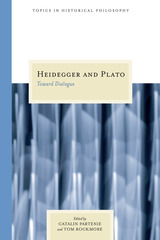 Heidegger and Plato: Toward Dialogue
Catalin Partenie and Tom Rockmore
Northwestern University Press, 2005 For Martin Heidegger the "fall" of philosophy into metaphysics begins with Plato. Thus, the relationship between the two philosophers is crucial to an understanding of Heidegger--and, perhaps, even to the whole plausibility of postmodern critiques of metaphysics. It is also, as the essays in this volume attest, highly complex, and possibly founded on a questionable understanding of Plato.
As editors Catalin Partenie and Tom Rockmore remark, a simple way to describe Heidegger's reading of Plato might be to say that what began as an attempt to appropriate Plato (and through him a large portion of Western philosophy) finally ended in an estrangement from both Plato and Western philosophy. The authors of this volume consider Heidegger's thought in relation to Plato before and after the "Kehre" or turn. In doing so, they take up various central issues in Heidegger's Being and Time (1927) and thereafter, and the questions of hermeneutics, truth, and language. The result is a subtle and multifaceted reinterpretation of Heidegger's position in the tradition of philosophy, and of Plato's role in determining that position.
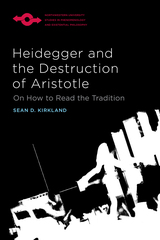 Heidegger and the Destruction of Aristotle: On How to Read the Tradition
Sean D. Kirkland
Northwestern University Press, 2023 A bold new conception of Heidegger’s project of Destruktion as a method of interpreting history
For Martin Heidegger, our inherited traditions provide the concepts through which we make our world intelligible. Concepts we can also oppose, disrupt, and even exceed. First, however, if Western philosophy is our inheritance, we must submit it to Destruktion—starting with Aristotle. Heidegger and the Destruction of Aristotle: On How to Read the Tradition presents a new conception of Heidegger’s “destruction” as a way of reading.
Situated between Nietzschean genealogy and Derridean deconstruction, this method uncovers in Aristotle the most vital originating articulations of the Western tradition and gives us the means to confront it. Sean D. Kirkland argues this is not a rejection of the past but a sophisticated and indeed timely hermeneutic tool—a complex, illuminating, and powerful method for interpreting historical texts at our present moment. Acknowledging the historical Heidegger as a politically compromised and still divisive figure, Kirkland demonstrates that Heideggerian destruction is a method of interpreting history that enables us to reorient and indeed transform its own most troubling legacies.
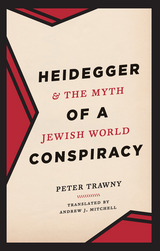 Heidegger and the Myth of a Jewish World Conspiracy
Peter Trawny
University of Chicago Press, 2015 In 2014, the first three volumes of Heidegger’s Black Notebooks—the personal and philosophical notebooks that he kept during the war years—were published in Germany. These notebooks provide the first textual evidence of anti-Semitism in Heidegger’s philosophy, not simply in passing remarks, but as incorporated into his philosophical and political thinking itself. In Heidegger and the Myth of a Jewish World Conspiracy, Peter Trawny, the editor of those notebooks, offers the first evaluation of Heidegger’s philosophical project in light of the Black Notebooks.
While Heidegger’s affiliation with National Socialism is well known, the anti-Semitic dimension of that engagement could not be fully told until now. Trawny traces Heidegger’s development of a grand “narrative” of the history of being, the “being-historical thinking” at the center of Heidegger’s work after Being and Time. Two of the protagonists of this narrative are well known to Heidegger’s readers: the Greeks and the Germans. The world-historical antagonist of this narrative, however, has remained hitherto undisclosed: the Jews, or, more specifically, “world Judaism.” As Trawny shows, world Judaism emerges as a racialized, destructive, and technological threat to the German homeland, indeed, to any homeland whatsoever. Trawny pinpoints recurrent, anti-Semitic themes in the Notebooks, including Heidegger’s adoption of crude cultural stereotypes, his assigning of racial reasons to philosophical decisions (even undermining his Jewish teacher, Edmund Husserl), his endorsement of a Jewish “world conspiracy,” and his first published remarks on the extermination camps and gas chambers (under the troubling aegis of a Jewish “self-annihilation”). Trawny concludes with a thoughtful meditation on how Heidegger’s achievements might still be valued despite these horrifying facets. Unflinching and systematic, this is one of the most important assessments of one of the most important philosophers in our history.
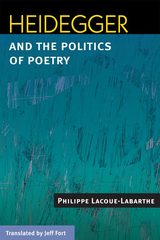 Heidegger and the Politics of Poetry
Philippe Lacoue-Labarthe
University of Illinois Press, 2006 This volume collects and translates Philippe Lacoue-Labarthe’s studies of Heidegger, written and revised between 1990 and 2002. All deal with Heidegger’s relation to politics, specifically through Heidegger’s interpretations of the poetry of Hölderlin. Lacoue-Labarthe argues that it is through Hölderlin that Heidegger expresses most explicitly his ideas on politics, his nationalism, and the importance of myth in his thinking, all of which point to substantial affinities with National Socialism. Lacoue-Labarthe not only examines the intellectual background--including Romanticism and "German ideology"--of Heidegger's uses and abuses of poetry, he also attempts to reestablish the vexed relationship between poetry and philosophy outside the bounds of the Heideggerian reading. He turns to Walter Benjamin and Theodor Adorno, as well as Paul Celan, arguing for the necessity of poetry as an engagement with history. While Heidegger's readings of Hölderlin attempt to appropriate poetry for mythic and political ends, Lacoue-Labarthe insists that poetry and thought can, and must, converge in another way. Jeff Fort provides a precise translation capturing the spirit and clarity of Lacoue-Labarthe’s writing, as well as an introduction clearly situating the debates addressed in these essays.
Heidegger and the Tradition
Werner Marx
Northwestern University Press, 1971 A view of Heidegger's divergence from the traditional philosophies of reason.
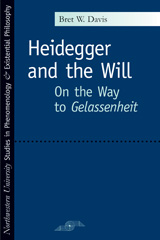 Heidegger and the Will: On the Way to Gelassenheit
Bret W. Davis
Northwestern University Press, 2007 The problem of the will has long been viewed as central to Heidegger's later thought. In the first book to focus on this problem, Bret W. Davis clarifies key issues from the philosopher's later period—particularly his critique of the culmination of the history of metaphysics in the technological "will to will" and the possibility of Gelassenheit or "releasement" from this willful way of being in the world—but also shows that the question of will is at the very heart of Heidegger's thinking, a pivotal issue in his path from Being and Time (1926) to "Time and Being" (1962).
Moreover, the book demonstrates why popular critical interpretations of Heidegger's relation to the will are untenable, how his so-called "turn" is not a simple "turnaround" from voluntarism to passivism. Davis explains why the later Heidegger's key notions of "non-willing" and "Gelassenheit" do not imply a mere abandonment of human action; rather, they are signposts in a search for an other way of being, a "higher activity" beyond the horizon of the will. While elucidating this search, his work also provides a critical look at the ambiguities, tensions, and inconsistencies of Heidegger's project, and does so in a way that allows us to follow the inner logic of the philosopher's struggles. As meticulous as it is bold, this comprehensive reinterpretation will change the way we think about Heidegger's politics and about the thrust of his philosophy as a whole.
 Heidegger and Whitehead: A Phenomenological Examination into the Intelligibility of Experience
Ron L. Cooper
Ohio University Press, 1993 Martin Heidegger’s Being and Time can be broadly termed a transcendental inquiry into the structures that make human experience possible. Such an inquiry reveals the conditions that render human experience intelligible. Using Being and Time as a model, I attempt to show that Alfred North Whitehead’s Process and Reality not only aligns with Being and Time in opposing many elements of traditional Western philosophy but also exhibits a similar transcendental inquiry. With this reading, Process and Reality contains concepts much like Being-in-the-world, ecstatic temporality, and others found in Being and Time. More important, this interpretation considers Whitehead’s treatment of human experience paradigmatic for understanding his cosmological scheme in general. Finally, the results of this study are employed to sketch a phenomenology of holy experience. — Prefatory Note to Heidegger and Whitehead
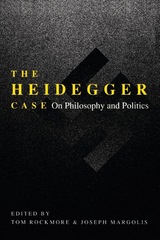 The Heidegger Case: On Philosophy and Politics
edited by Tom Rockmore and Joseph Margolis
Temple University Press, 1992 "[These] essays together form an extraordinary response, and radical but not self-righteous challenge, to Heidegger's unambiguous complicity with Hitler and Nazism....This book will provoke intense dialogue and controversy about issues which, for too long, too many philosophers have chosen either to gloss over or ignore."
--Ronald E. Santoni
The relation between Martin Heidegger's philosophical thought and his political commitment has been widely discussed in recent years, following the publication of Victor FarÃas's controversial study, Heidegger and Nazism, published in this country by Temple University Press. The Heidegger Case is a collection of original essays, by both American and European philosophers, on issues raised by Heidegger's involvement with the Nazis. The contributors consider such matters as the relationship between Heidegger's philosophical theories and his public statements and activities, the ways in which his ideas on social and political life compare with those of other philosophers, and the role of philosophy with respect to politics.
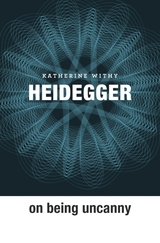 Heidegger on Being Uncanny
Katherine Withy
Harvard University Press, 2015 There are moments when things suddenly seem strange—objects in the world lose their meaning, we feel like strangers to ourselves, or human existence itself strikes us as bizarre and unintelligible. Through a detailed philosophical investigation of Heidegger’s concept of uncanniness (Unheimlichkeit), Katherine Withy explores what such experiences reveal about us. She argues that while others (such as Freud, in his seminal psychoanalytic essay, “The Uncanny”) take uncanniness to be an affective quality of strangeness or eeriness, Heidegger uses the concept to go beyond feeling uncanny to reach the ground of this feeling in our being uncanny.
Heidegger on Being Uncanny answers those who wonder whether human existence is fundamentally strange to itself by showing that we can be what we are only if we do not fully understand what it is to be us. This fundamental finitude in our self-understanding is our uncanniness. In this first dedicated interpretation of Heidegger’s uncanniness, Withy tracks this concept from his early analyses of angst through his later interpretations of the choral ode from Sophocles’s Antigone. Her interpretation uncovers a novel and robust continuity in Heidegger’s thought and in his vision of the human being as uncanny, and it points the way toward what it is to live well as an uncanny human being.
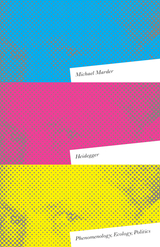 Heidegger: Phenomenology, Ecology, Politics
Michael Marder
University of Minnesota Press, 2018 Understanding the political and ecological implications of Heidegger’s work without ignoring his noxious public engagements
The most controversial philosopher of the twentieth century, Martin Heidegger has influenced generations of intellectuals even as his involvement with Nazism and blatant anti-Semitism, made even clearer after the publication of his Black Notebooks, have recently prompted some to discard his contributions entirely. For Michael Marder, Heidegger’s thought remains critical for interpretations of contemporary politics and our relation to the natural environment.
Bringing together and reframing more than a decade of Marder’s work on Heidegger, this volume questions the wholesale rejection of Heidegger, arguing that dismissive readings of his project overlook the fact that it is impossible to grasp without appreciating his lifelong commitment to phenomenology and that Heidegger’s anti-Semitism is an aberration in his still-relevant ecological and political thought, rather than a defining characteristic. Through close readings of Heidegger’s books and seminars, along with writings by other key phenomenologists and political philosophers, Marder contends that neither Heidegger’s politics nor his reflections on ecology should be considered in isolation from his phenomenology. By demonstrating the codetermination of his phenomenological, ecological, and political thinking, Marder accounts for Heidegger’s failures without either justifying them or suggesting that they invalidate his philosophical endeavor as a whole.
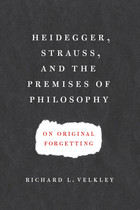 Heidegger, Strauss, and the Premises of Philosophy: On Original Forgetting
Richard L. Velkley
University of Chicago Press, 2011 In this groundbreaking work, Richard L. Velkley examines the complex philosophical relationship between Martin Heidegger and Leo Strauss. Velkley argues that both thinkers provide searching analyses of the philosophical tradition’s origins in radical questioning. For Heidegger and Strauss, the recovery of the original premises of philosophy cannot be separated from rethinking the very possibility of genuine philosophizing. Common views of the influence of Heidegger’s thought on Strauss suggest that, after being inspired early on by Heidegger’s dismantling of the philosophical tradition, Strauss took a wholly separate path, spurning modernity and pursuing instead a renewal of Socratic political philosophy. Velkley rejects this reading and maintains that Strauss’s engagement with the challenges posed by Heidegger—as well as by modern philosophy in general—formed a crucial and enduring framework for his lifelong philosophical project. More than an intellectual biography or a mere charting of influence, Heidegger, Strauss, and the Premises of Philosophy is a profound consideration of these two philosophers’ reflections on the roots, meaning, and fate of Western rationalism.
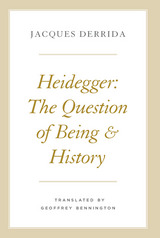 Heidegger: The Question of Being and History
Jacques Derrida
University of Chicago Press, 2016 Few philosophers held greater fascination for Jacques Derrida than Martin Heidegger, and in this book we get an extended look at Derrida’s first real encounters with him. Delivered over nine sessions in 1964 and 1965 at the École Normale Supérieure, these lectures offer a glimpse of the young Derrida first coming to terms with the German philosopher and his magnum opus, Being and Time. They provide not only crucial insight into the gestation of some of Derrida’s primary conceptual concerns—indeed, it is here that he first uses, with some hesitation, the word “deconstruction”—but an analysis of Being and Time that is of extraordinary value to readers of Heidegger or anyone interested in modern philosophy.
Derrida performs an almost surgical reading of the notoriously difficult text, marrying pedagogical clarity with patient rigor and acting as a lucid guide through the thickets of Heidegger’s prose. At this time in intellectual history, Heidegger was still somewhat unfamiliar to French readers, and Being and Time had only been partially translated into French. Here Derrida mostly uses his own translations, giving his own reading of Heidegger that directly challenges the French existential reception initiated earlier by Sartre. He focuses especially on Heidegger’s Destruktion (which Derrida would translate both into “solicitation” and “deconstruction”) of the history of ontology, and indeed of ontology as such, concentrating on passages that call for a rethinking of the place of history in the question of being, and developing a radical account of the place of metaphoricity in Heidegger’s thinking.
This is a rare window onto Derrida’s formative years, and in it we can already see the philosopher we’ve come to recognize—one characterized by a bravura of exegesis and an inventiveness of thought that are particularly and singularly his.
 Heidegger's Atheism: The Refusal of a Theological Voice
Laurence Paul Hemming
University of Notre Dame Press, 2002 "Heidegger's Atheism is a very well researched account of the sequence of Heidegger's relation to religion and theology. It contains one of the best discussions in any language of the ‘turn' or Kehre, as well as a first-rate account of Heidegger's crucial relationship to scholasticism and, in particular, to Thomas Aquinas. This book makes a crucial contribution to Heidegger research." --John Milbank, Frances Ball Professor of Philosophical Theology, University of Virginia
Heidegger's Atheism explains what Heidegger meant when he said that all philosophy is atheistic. This unique book traces the development of his explanation of philosophy as a methodological atheism, and relates it to his reading of Aristotle, Aquinas, and Nietzsche. A predominant issue throughout this study is Heidegger's pursuit of an answer to the question: How did God get into philosophy?
Laurence Paul Hemming discusses a wide range of topics in this comprehensive volume, including the influence of Heidegger on theologians like Bultmann, Rahner, and Ott; the central themes of Being and Time; Heidegger's political decisions and involvement with National Socialism; and Jean-Luc Marion's reading of Heidegger. Hemming also provides an in-depth analysis of Heidegger's turn or Kehre. He addresses how Heidegger's understanding of das Ereignis, the event, relates both to his view of atheism and to the way he appropriated Nietzsche's proclamation of the death of God.
Heidegger's Atheism also attempts to trace new possibilities in the relationship between theology and philosophy in Heidegger's critique of metaphysics. Hemming argues that Heidegger criticizes the tradition of metaphysics from Aristotle and Plato through Nietzsche and Hegel because it traces a particular understanding of being in relation to God--even when that God is announced as dead. In contrast, Heidegger sees the task of philosophy as the self-understanding of human existence, and claims philosophy offers no definitives regarding what God humanity might encounter. Consequently, Hemming argues, Heidegger's atheism is an implicit critique of theology. Yet, Hemming also contends Heidegger's work resonates with the concerns of Christian faith, especially the Catholic tradition.
Heidegger's Atheism offers radical and challenging conclusions about most of the recent British and American readings of Heidegger. Sure to provoke much debate and discussion, Heidegger's Atheism is essential for anyone with an interest in Heidegger.
LAURENCE PAUL HEMMING is dean of research students at Heythrop College, University of London and an ordained deacon for the Diocese of Westminster in Cambridge.
----------
"Hemming offers a well-grounded study of exactly what Heidegger's atheism entails . . . highly recommended." --Library Journal,
"Heidegger's atheism is based on extensive research, in-depth textual analyses, and much scholarly debate." --Choice,
"His book is best conceived as a careful listening to and thinking with Heidegger.... Hemming has established ... a highly original and fiercely independent viewpoint...."--The Thomist,
"This book introduces some much-needed structure, sophistication, and close attention to textual detail into what are by now well-worn and increasingly convoluted debates about Heidegger's relation to theology and religious belief.... Few people are as familiar with and attentive to the full sweep of Heidegger's writings as Hemming proves himself to be; and those in the fields of theology and philosophy of religion who are desirous of finding inspiration and sustenance for their endeavours from this particular domain of philosophy can rest assured that Hemming is a reliable and sophisticated guide."--Religious Studies,
"I can recommend the book to anybody who feels ready to be challenged in his self-certainty and assurance in faith, and who has a genuinely critical interest in the meaning of his own existence and of the age and society he inhabits. The book is accessible to those not yet introduced to Heidegger's particular terminology.... The book will be also of immense interest to Heidegger scholars, especially those interested in the relation between Heidegger and theology. ...this book could stir afresh theological thinking that admits its limits before God but takes up its own way of thought, guided--and called into question--by the Word of God."--Theology Today,
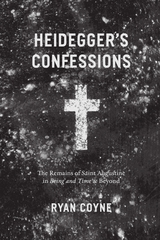 Heidegger's Confessions: The Remains of Saint Augustine in "Being and Time" and Beyond
Ryan Coyne
University of Chicago Press, 2015 Although Martin Heidegger is nearly as notorious as Friedrich Nietzsche for embracing the death of God, the philosopher himself acknowledged that Christianity accompanied him at every stage of his career. In Heidegger's Confessions, Ryan Coyne isolates a crucially important player in this story: Saint Augustine. Uncovering the significance of Saint Augustine in Heidegger’s philosophy, he details the complex and conflicted ways in which Heidegger paradoxically sought to define himself against the Christian tradition while at the same time making use of its resources.
Coyne first examines the role of Augustine in Heidegger’s early period and the development of his magnum opus, Being and Time. He then goes on to show that Heidegger owed an abiding debt to Augustine even following his own rise as a secular philosopher, tracing his early encounters with theological texts through to his late thoughts and writings. Bringing a fresh and unexpected perspective to bear on Heidegger’s profoundly influential critique of modern metaphysics, Coyne traces a larger lineage between religious and theological discourse and continental philosophy.
Heidegger’s Crisis: Philosophy and Politics in Nazi Germany
Hans Sluga
Harvard University Press, 1993 Heidegger's Crisis shows not only how the Nazis exploited philosophical ideas and used philosophers to gain public acceptance, but also how German philosophers played into the hands of the Nazis. Hans Sluga describes the growth, from World War I onward, of a powerful right-wing movement in German philosophy, in which nationalistic, antisemitic, and antidemocratic ideas flourished.
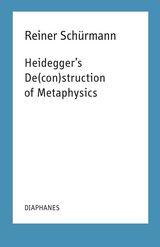 Heidegger's De(con)struction of Metaphysics
Reiner Schürmann
Diaphanes, 2021 In Being and Time, Heidegger announced the “Task of Destroying the History of Ontology” in order to free what had remained “unthought” in Western metaphysics. The unpublished part of that work was to be titled “Basic Features of a Phenomenological Destruction of the History of Ontology. According to the Guiding Thread of the Problem of Temporality.” This latest work in the Reiner Schürmann Selected Writings and Lecture Notes series aims to carry out Heidegger’s plan. The destruction, or, as it is later called, the deconstruction of metaphysics, has a negative side—the peeling off, or the archeology, of metaphysical history by means of the guiding thread of the question of Being—and a positive side—“retrieval” of the original experience of Being in ancient Greek philosophy.
“The destruction has no other intent than to win back the original experience of metaphysics through a deconstruction of those conceptions which have become current and empty.” The purpose of taking to pieces the fabric of Western metaphysics is to show how at each important stage “the question of the meaning of Being has not only remained unattended to or inadequately raised, but that it has become quite forgotten in spite of all our interest in 'metaphysics'.”
Heidegger's Political Thinking
James F. Ward
University of Massachusetts Press, 1995 This work presents an examination of the political philosophy of Martin Heidegger. It uncovers the political content of Heidegger's thinking on such topics as the temporality of Being, the role of science in the crisis of the West and the presumed special status and destiny of the German people
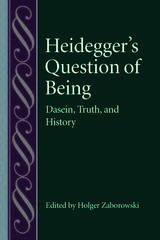 Heidegger's Question of Being
Holger Zaborowski
Catholic University of America Press, 2017 The number of open and controversial questions in contemporary Heidegger research continues to be a source of scholarly dialogue. There are important questions that concern the development, as it were, of his thought and the differences and similarities between his early main work Being and Time and his later so-called being-historical thought, the thinking of the event, or appropriation, of Being. There are questions that focus on his relation to important figures in the history of ideas such as the pre-Socratics, Plato, Aristotle, Thomas Aquinas, Descartes, Leibniz, Kant, the German idealists, and Nietzsche. Other questions focus on his biography, on his rectorate and on his relation to politics in general and to National Socialism in particular or on his influence on subsequent philosophers.
The contributions to this volume, written by leading scholars in the field of Heidegger research, address many of these questions in close readings of Heidegger’s texts and thus provide sound orientation in the field of contemporary Heidegger research. They show how the different trajectories of Heidegger’s thought—his early interest in the meaning of Being and in Dasein, his discussion of, and involvement with, politics, his understanding of art, poetry, and technology, his concept of truth and the idea of a history of Being—all converge at one point: the question of Being. It thus becomes clear that, all differences notwithstanding, Heidegger followed one very consistent path of thinking.
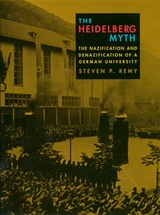 The Heidelberg Myth: The Nazification and Denazification of a German University
Steven P. Remy
Harvard University Press, 2002 In the first work to examine both nazification and denazification of a major German university, Steven Remy offers a sobering account of the German academic community from 1933 to 1957. Deeply researched in university archives, newly opened denazification records, occupation reports, and contemporary publications, The Heidelberg Myth starkly details how extensively the university's professors were engaged with National Socialism and how effectively they frustrated postwar efforts to ascertain the truth.
Many scholars directly justified or implemented Nazi policies, forming a crucial element in the social consensus supporting Hitler and willingly embracing the Nazis' "German spirit," a concept encompassing aggressive nationalism, anti-Semitism, and the rejection of objectivity in scholarship. In elaborate postwar self-defense narratives, they portrayed themselves as unpolitical and uncorrupted by Nazism. This "Heidelberg myth" provided justification for widespread resistance to denazification and the restoration of compromised scholars to their positions, and set the remarkably long-lasting consensus that German academic culture had remained untainted by Nazi ideology.
The Heidelberg Myth is a valuable contribution to German social, intellectual, and political history, as well as to works on collective memory in societies emerging from dictatorship.
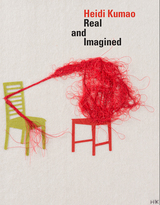 Heidi Kumao: Real and Imagined
Heidi Kumao
Michigan Publishing, 2022 Heidi Kumao: Real and Imagined documents and contextualizes narrative fabric works and animations from Kumao’s 2020 solo exhibition at the University of Michigan’s Stamps Gallery. Using fabric cutouts and stitching of everyday objects, Kumao invents a tactile visual vocabulary that distills unspoken aspects of ordinary exchanges into accessible narrative images. Weaving in her experiences as an Asian American woman, artist, and educator, Kumao creates poetic and playful open-ended visual haikus, generating a range of associations to current events, gender roles, and institutional power structures. Captured midstream, interactions from intimate relationships, medical procedures, the workplace, and the political sphere are suspended in time within felt film stills. Real and Imagined presents the reader with an opportunity to experience this remarkable oeuvre of over thirty fabric works and video animations.
For over thirty years, Kumao has developed an expanded art practice that includes animations, video installations, photographs, machine art, and fabric works that give physical form to the intangible parts of our lives: our emotions, psychological states, memories, thinking patterns. Her hybrid artworks have included electromechanical girl’s legs that “misbehave,” video installations about surviving confinement, surreal, experimental stop motion puppet animations, performative staged photographs, and hand crafted cinema machines.
She has exhibited her award-winning artwork in solo and group exhibitions nationally and internationally including the Art Science Museum Singapore, Centre de Cultura Contemporània de Barcelona, the Museum of Image and Sound (São Paulo) and the Museum of Modern Art in Buenos Aires. Her work is in permanent and private collections including the Houston Museum of Fine Arts, Arizona State University Art Museum, the Philadelphia Museum of Art and the Exploratorium in San Francisco. She has received fellowships and grants from the Guggenheim Foundation, the Creative Capital Foundation, and the National Endowment for the Arts. She is a professor at the Stamps School of Art & Design at the University of Michigan, Ann Arbor.
This exhibition catalogue marks the first significant publication on Kumao’s work and includes a selection of works from across her career. It includes written contributions by: Srimoyee Mitra, curator and Director of the Stamps Gallery and NYC-based art critic; Wendy Vogel; an interview between the artist and writer Lynn Love; and poems by the Ruth Lilly Poetry Prize Award winner Marilyn Chin.
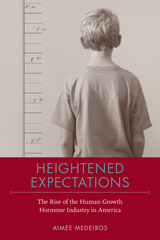 Heightened Expectations: The Rise of the Human Growth Hormone Industry in America
Aimee Medeiros
University of Alabama Press, 2016 Heightened Expectations is a groundbreaking history that illuminates the foundations of the multibillion-dollar human growth hormone (HGH) industry. Drawing on medical and public health histories as well as on photography, film, music, prose, and other examples from popular culture, Aimee Medeiros tracks how the stigmatization of short stature in boys and growth hormone technology came together in the twentieth century.
This book documents how the rise of modern capitalism and efforts to protect those most vulnerable to its harmful effects contributed to the social stigmatization of short statured children. Short boys bore the brunt of this discrimination by the mid-twentieth century, as cultural notions of masculinity deemed smallness a troubling trait in need of remedy. These boys became targets of growth hormone treatment, a trend accelerated by the development of effective HGH therapy in the late 1950s.
With a revisionist twist, Medeiros argues that HGH therapy was not plagued by a limited number of sources of the hormone but rather a difficult-to-access supply during the 1960s and 1970s. The advent of synthetic HGH remedied this situation. Therapy was available, however, only to those who could afford it. Very few could, which made short stature once again a mark of the underprivileged class.
Today, small boys with dreams of being taller remain the key customer base of the legitimate arm of the HGH industry. As gender and economic class disparities in treatment continue, some medical experts have alluded to patients’ parents as culprits of this trend. This book sheds light on how medicine’s attempt to make up for perceived physical shortcomings has deep roots in American culture.
Of interest to historians and scholars of medicine, gender studies, and disability studies, Heightened Expectations also offers much to policy makers and those curious about where standards and therapies originate.
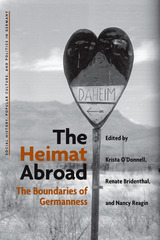 The Heimat Abroad: The Boundaries of Germanness
Krista O'Donnell, Renate Bridenthal, and Nancy Reagin, Eds.
University of Michigan Press, 2005 Germans have been one of the most mobile and dispersed populations on earth. Communities of German speakers, scattered around the globe, have long believed they could recreate their Heimat (homeland) wherever they moved, and that their enclaves could remain truly German. Furthermore, the history of Germany is inextricably tied to Germans outside the homeland who formed new communities that often retained their Germanness. Emigrants, including political, economic, and religious exiles such as Jewish Germans, fostered a nostalgia for home, which, along with longstanding mutual ties of family, trade, and culture, bound them to Germany. The Heimat Abroad is the first book to examine the problem of Germany's long and complex relationship to ethnic Germans outside its national borders. Beyond defining who is German and what makes them so, the book reconceives German identity and history in global terms and challenges the nation state and its borders as the sole basis of German nationalism. Krista O'Donnell is Associate Professor of History, William Paterson University. Nancy Reagin is Professor of History, Pace University. Renete Bridenthal is Emerita Professor of History, Brooklyn College of the City University of New York.
Heimskringla: History of the Kings of Norway
By Snorri Sturluson
University of Texas Press, 1964 Beginning with the dim prehistory of the mythical gods and their descendants, Heimskringla recounts the history of the kings of Norway through the reign of Olaf Haraldsson, who became Norway's patron saint. Once found in most homes and schools and still regarded as a national treasure, Heimskringla influenced the thinking and literary style of Scandinavia over several centuries.
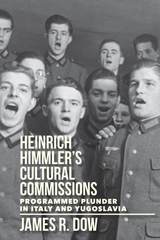 Heinrich Himmler's Cultural Commissions: Programmed Plunder in Italy and Yugoslavia
James R. Dow
University of Wisconsin Press, 2018 German scholars were early pioneers in folklore and historical linguistics. As the Nazis rose to power, however, these disciplines were distorted into racist pseudoscience. Under the direction of Heinrich Himmler's SS-Ahnenerbe (Ancestral Inheritance), folklore became a tool for constructing a unified German realm and a manufactured lineage from ancient and "pure" Germanic and Nordic blood.
Drawing on extensive research in public and private archives and interviews with family members of fieldworkers, James R. Dow uncovers both details of the SS cultural commissions' work and the continuing vestiges of the materials they assembled. Teams of poorly qualified and ideologically motivated collectors were sent to South Tyrol in Italy and Gottschee in Slovenian Yugoslavia, from which ethnically German communities were to be resettled in the German Reich. Although a mass of information on narratives, songs and dances, beliefs, customs, local clothing and architecture, and folk speech was collected, the research was deeply tainted and skewed by racialist and nationalist preconditions. Dow sharply critiques the continued use of these ersatz archives.
Heir to Empire: United States Economic Diplomacy, 1916-1923
Carl P. Parrini
University of Pittsburgh Press, 1969 In this book, Carl P. Parrini examines the evolution of United States economic diplomacy during a critical period in world history. After World War I, leaders were poised to begin “The American Century”, when the United States would assume the dominant role as the world's foremost political, economic and military power. This was to be achieved by establishing harmonic relations with other nations-allowing leverage on minor economic goals, while maintaining U.S. interests on major objectives. This theory of foreign policy is often attributed to president Warren Harding or his Secretary of Commerce, Herbert Hoover. Yet, Parrini's study determines, nearly all decisions made with respect to international investment, allocation of raw materials, reparations, war debts, and tariffs, were based on earlier principles established by Woodrow Wilson's administration.
|
|

